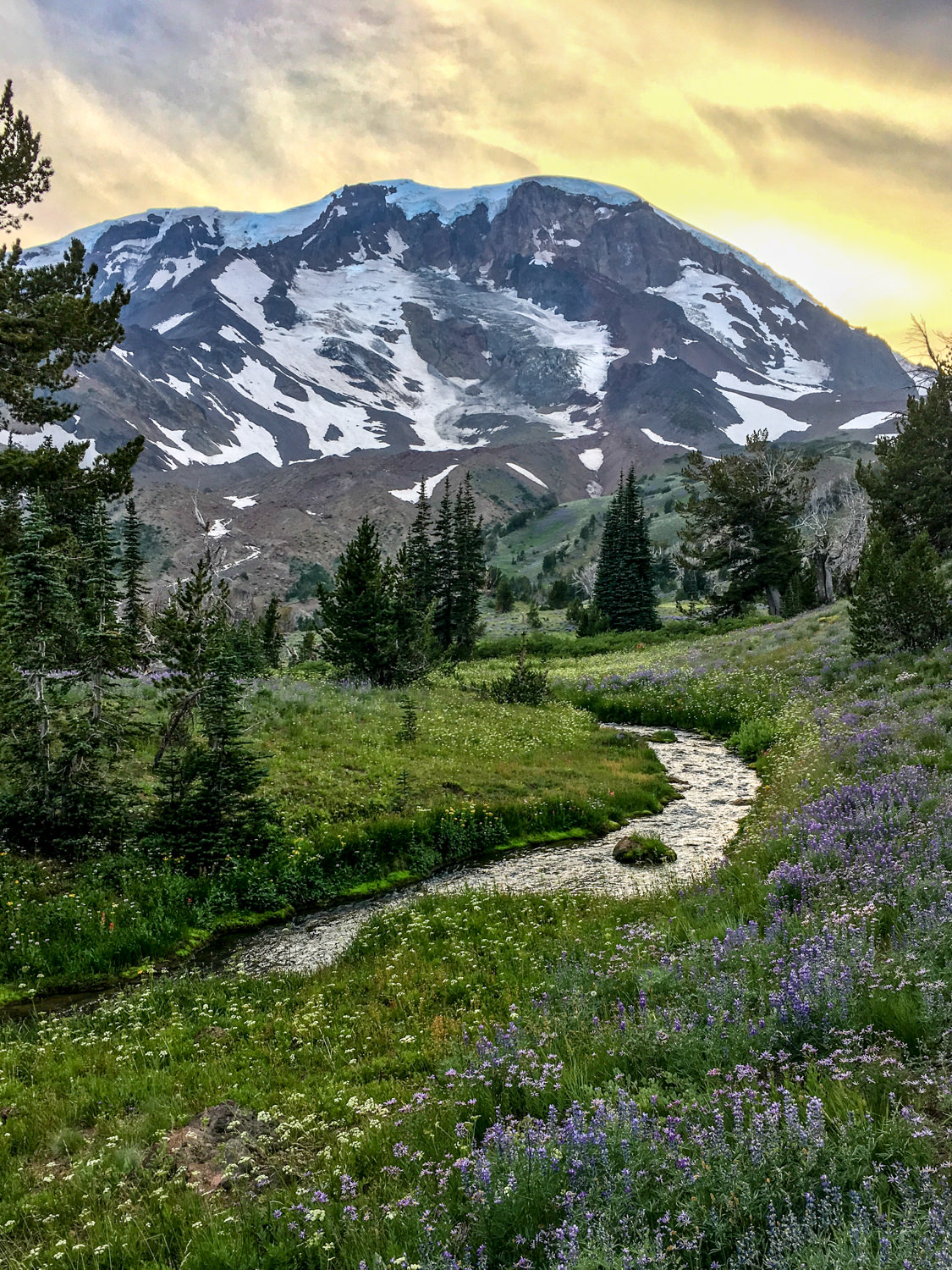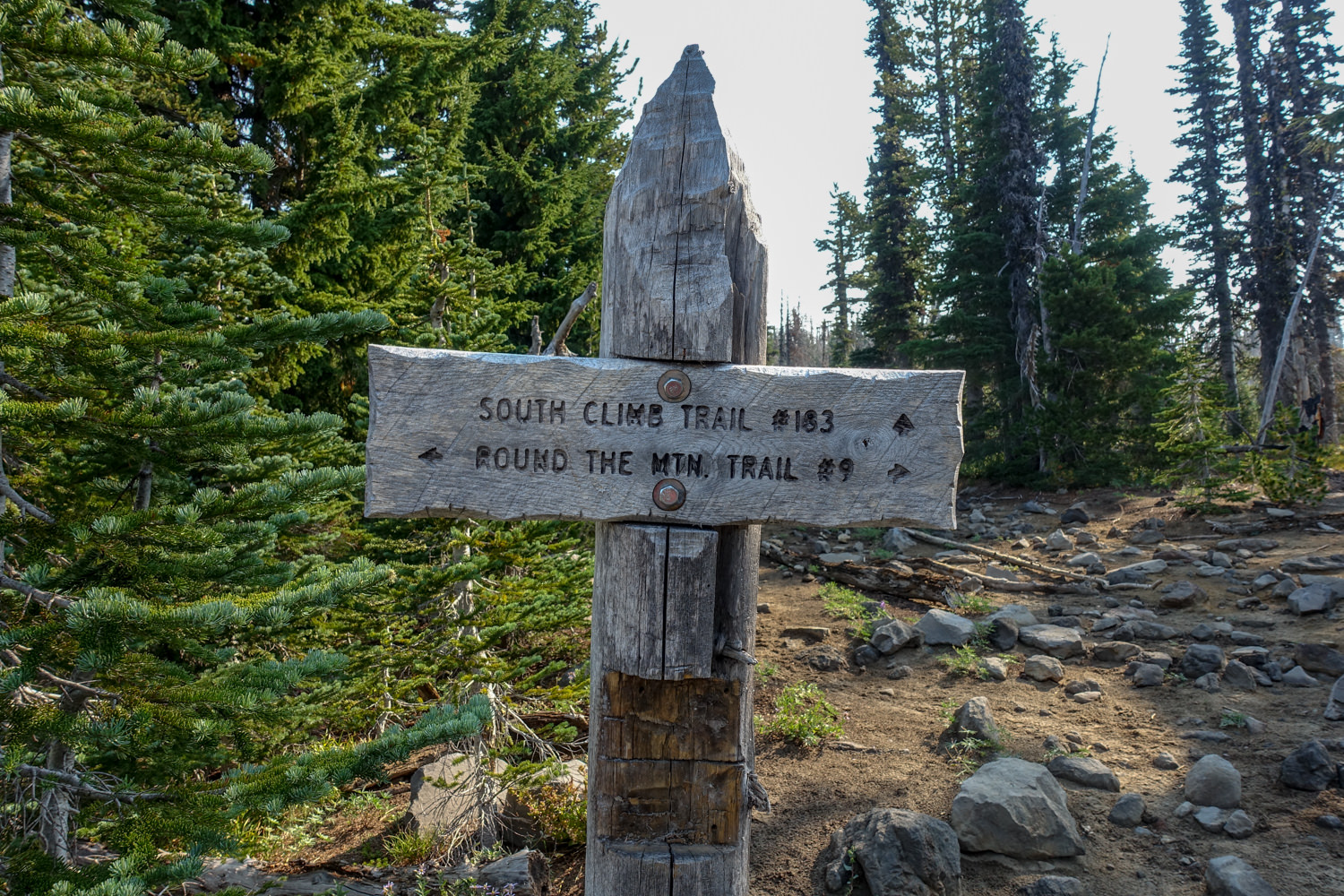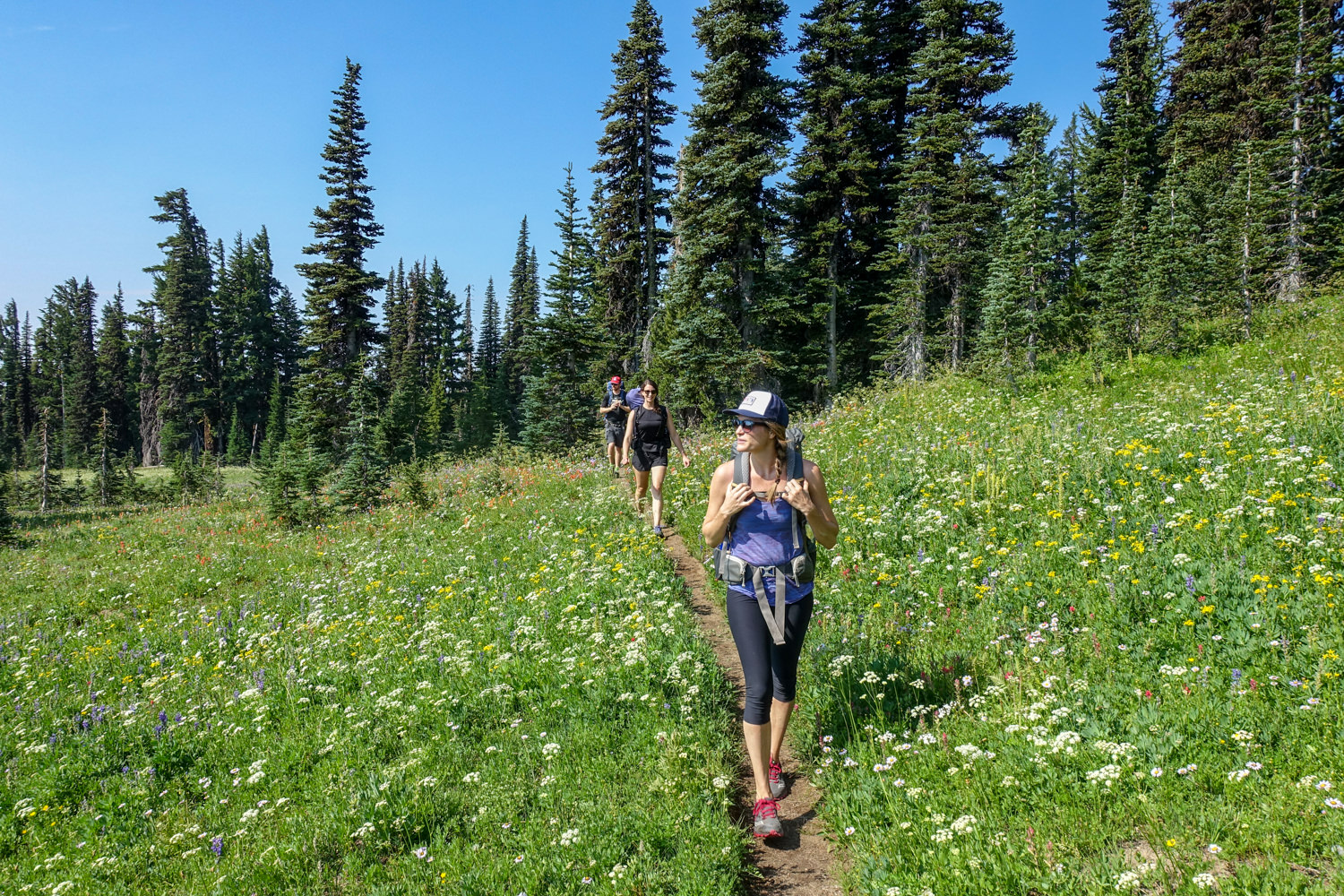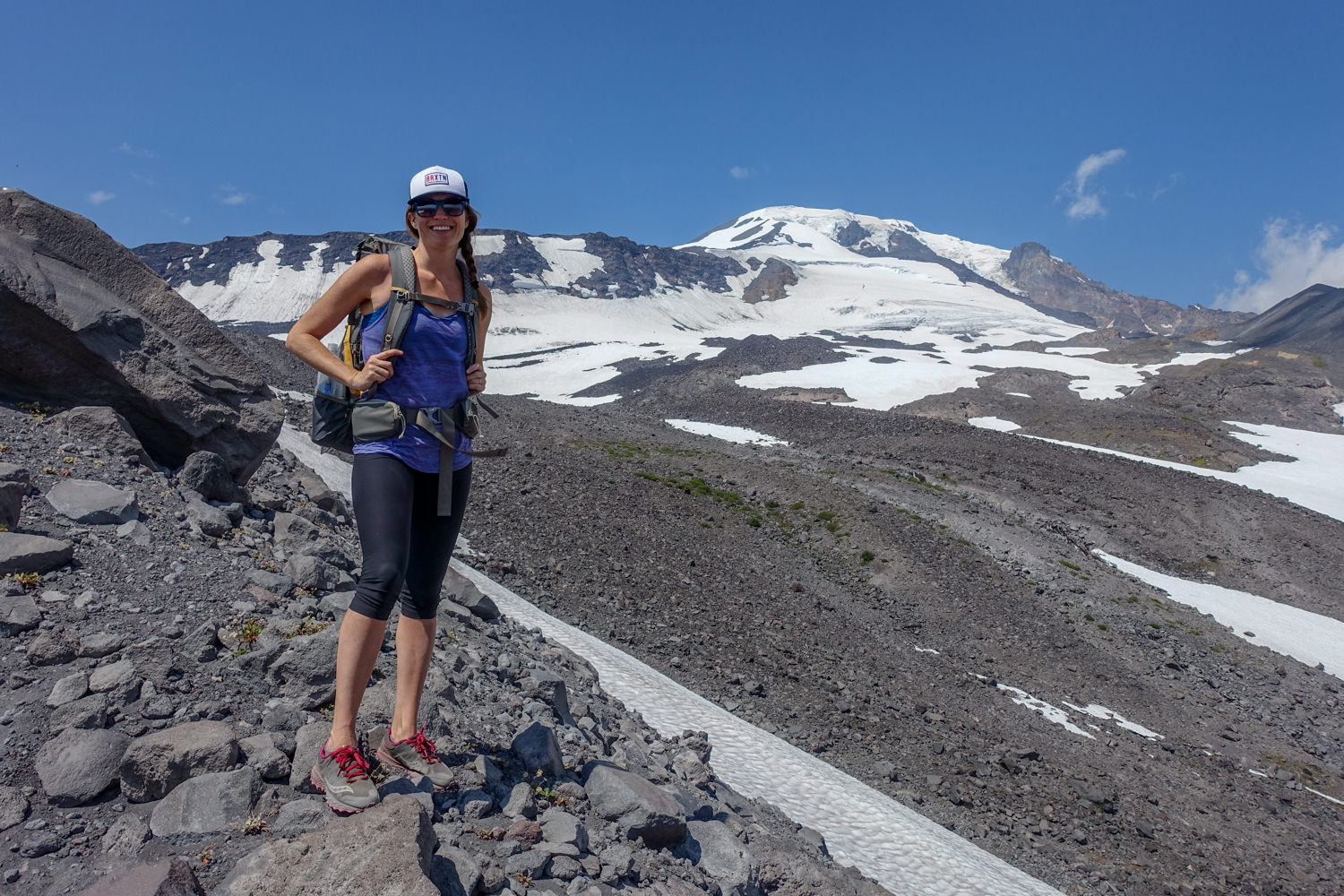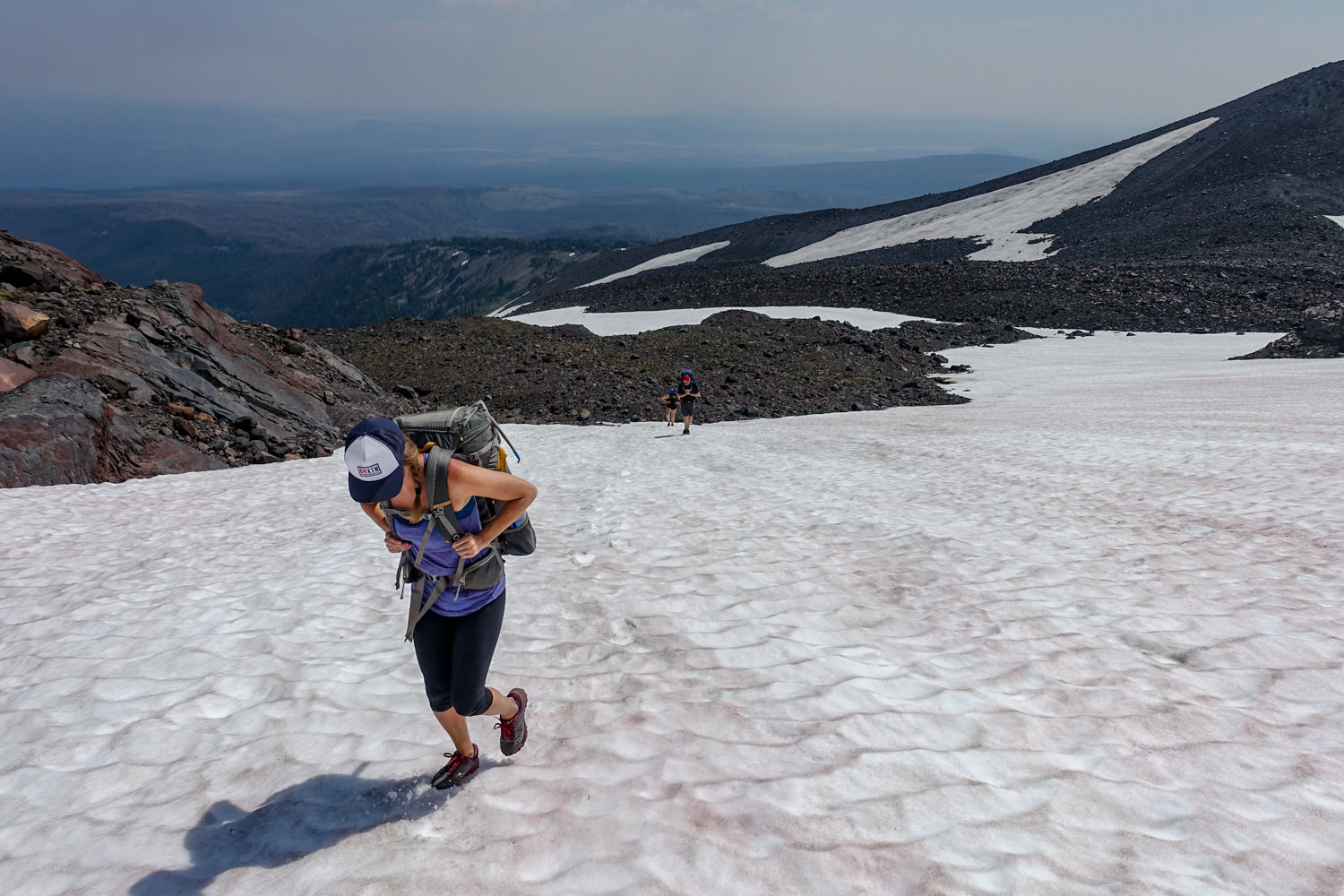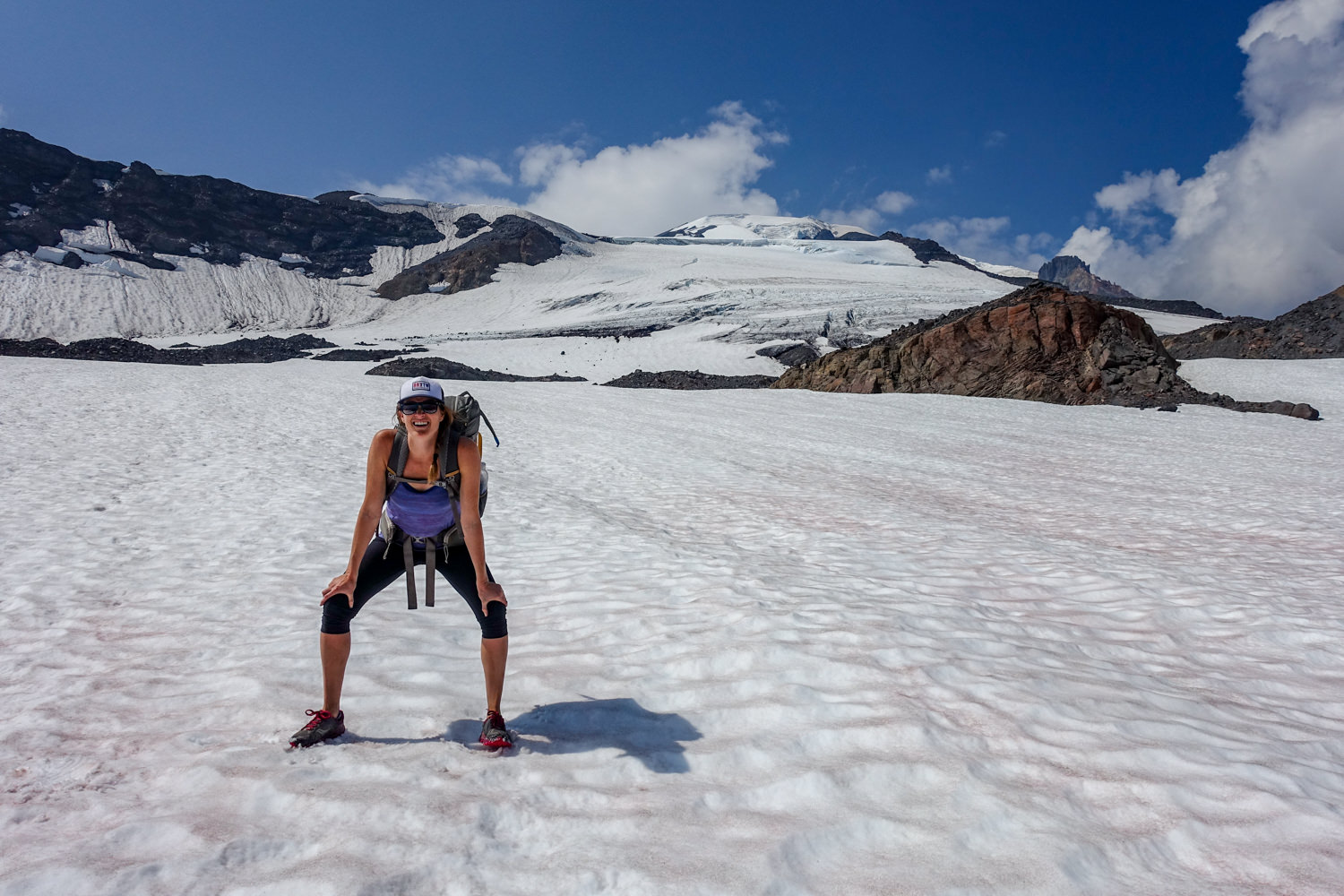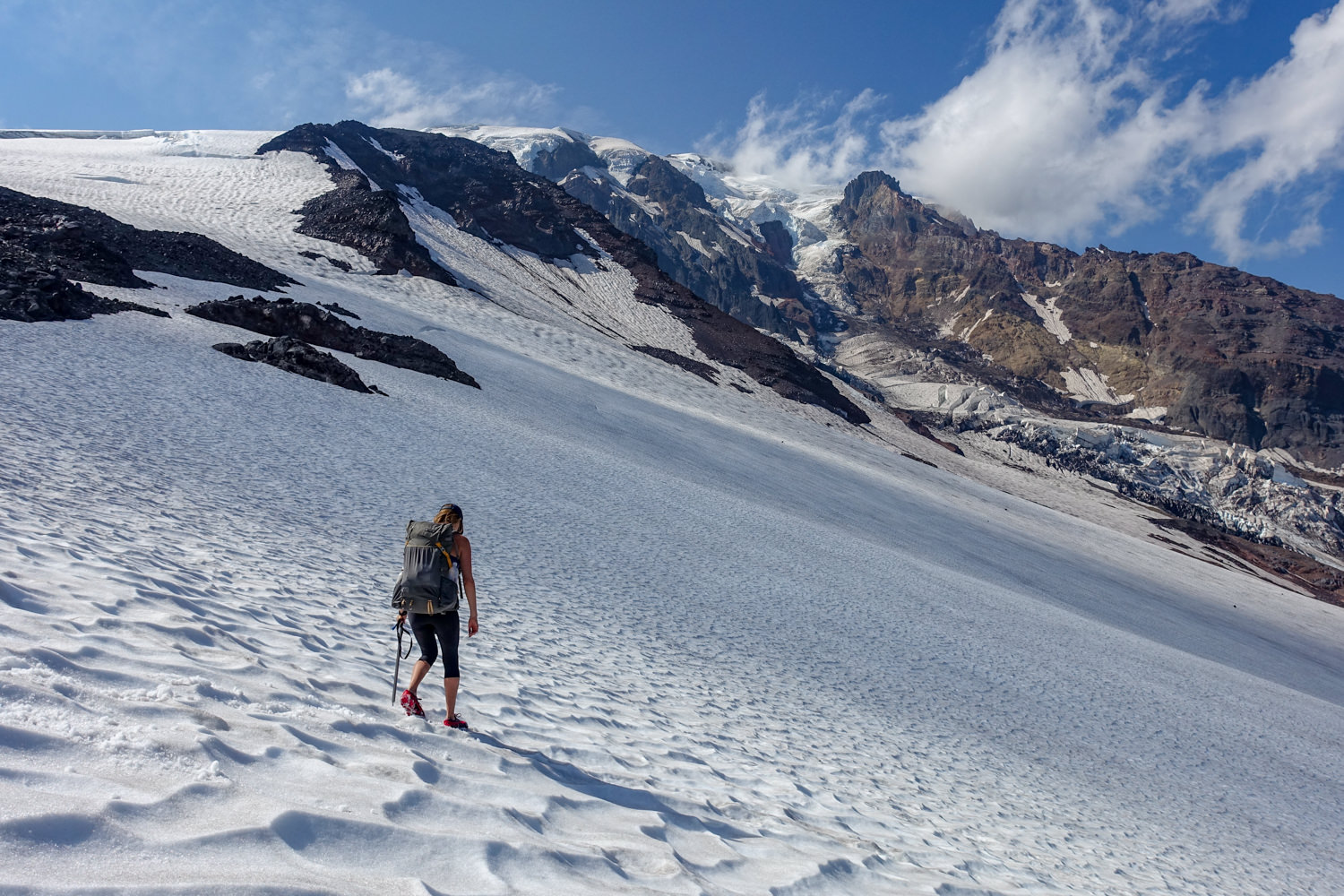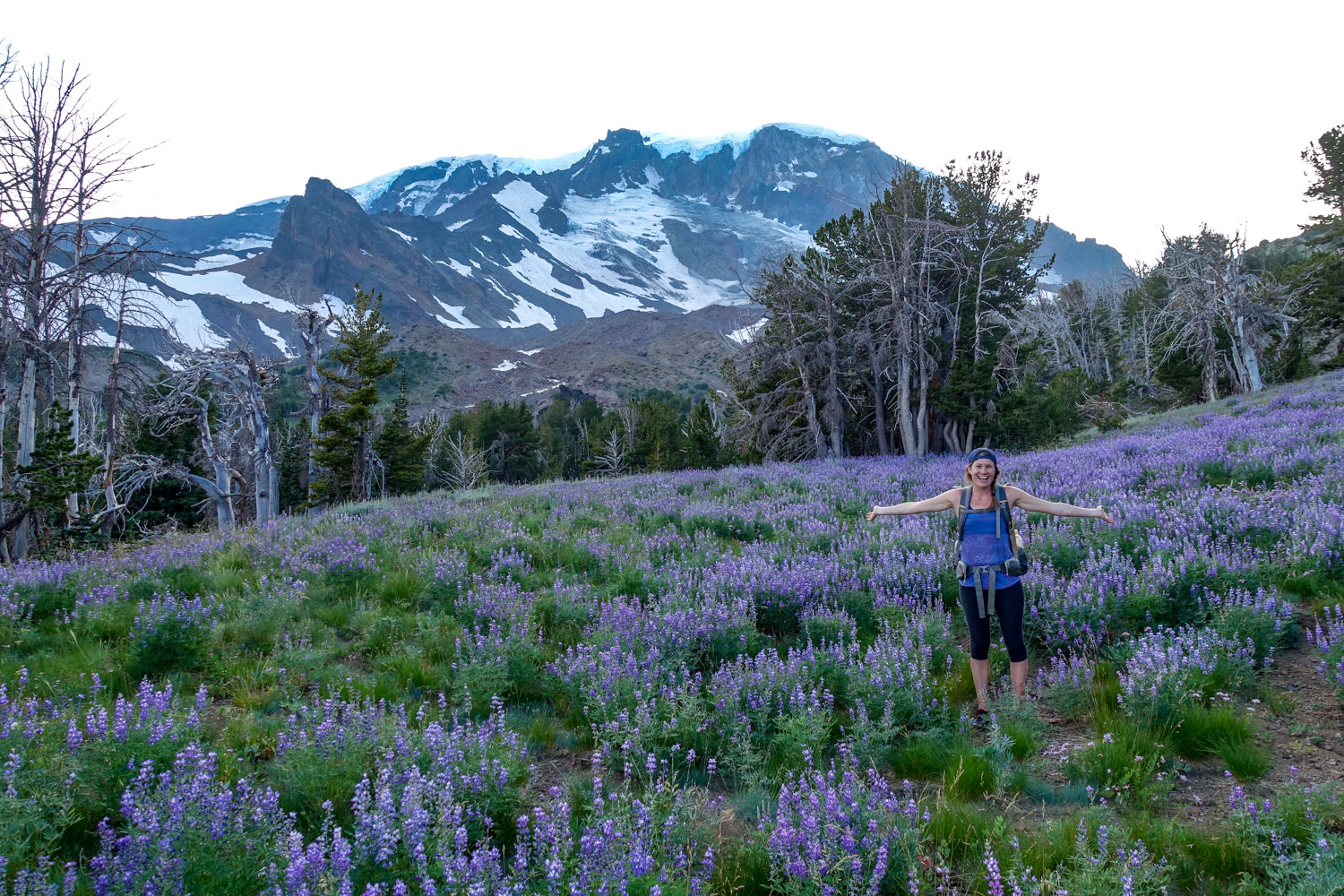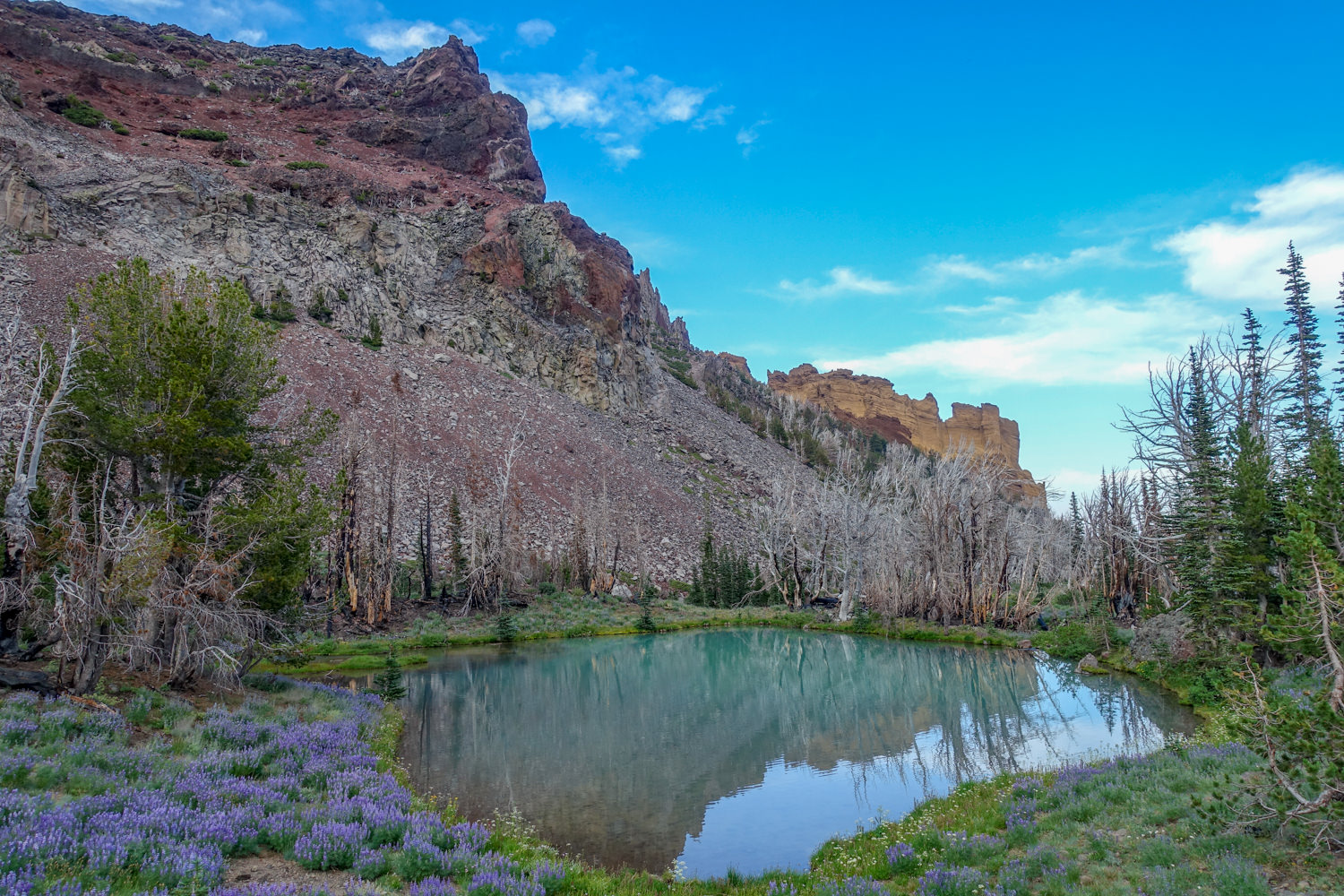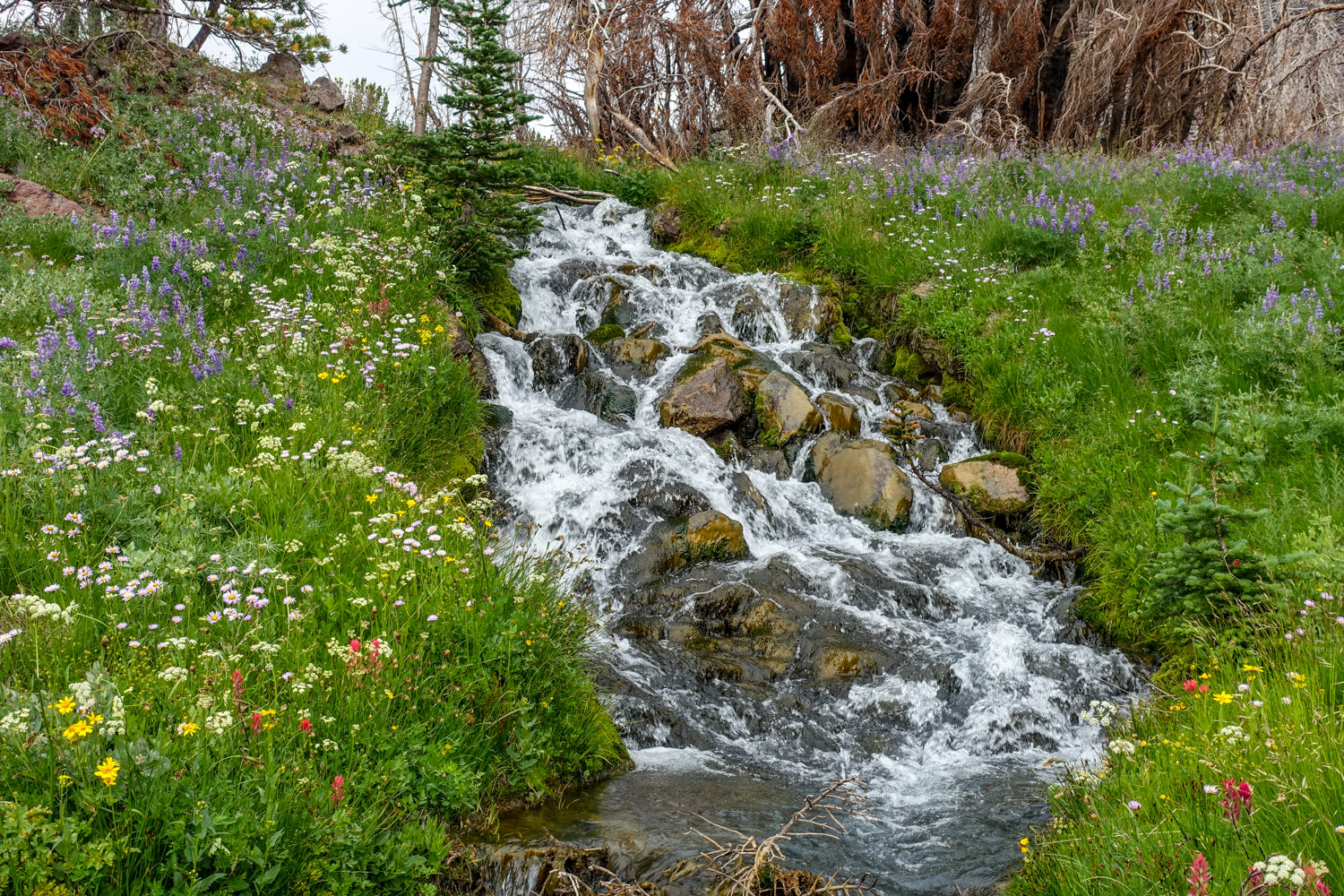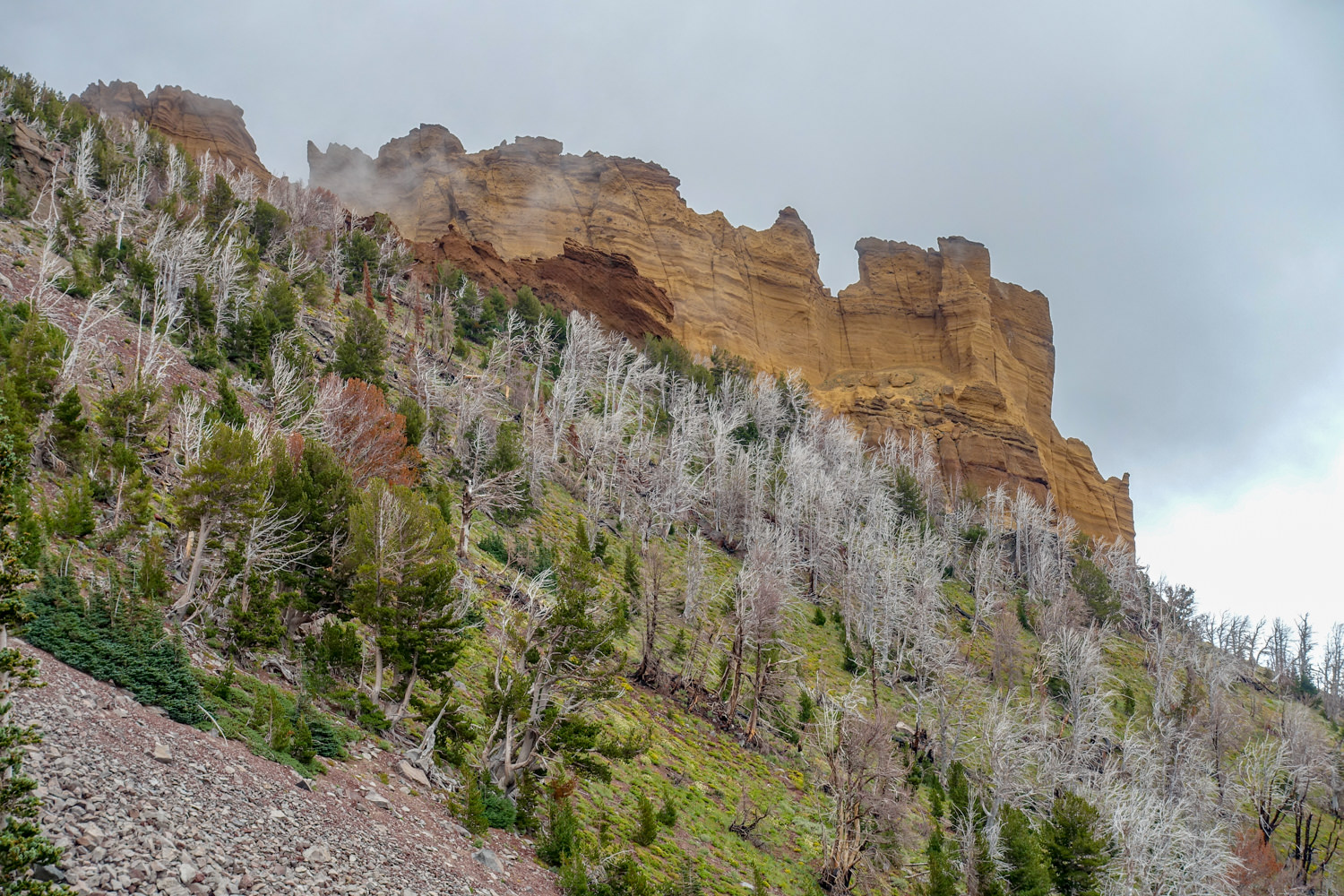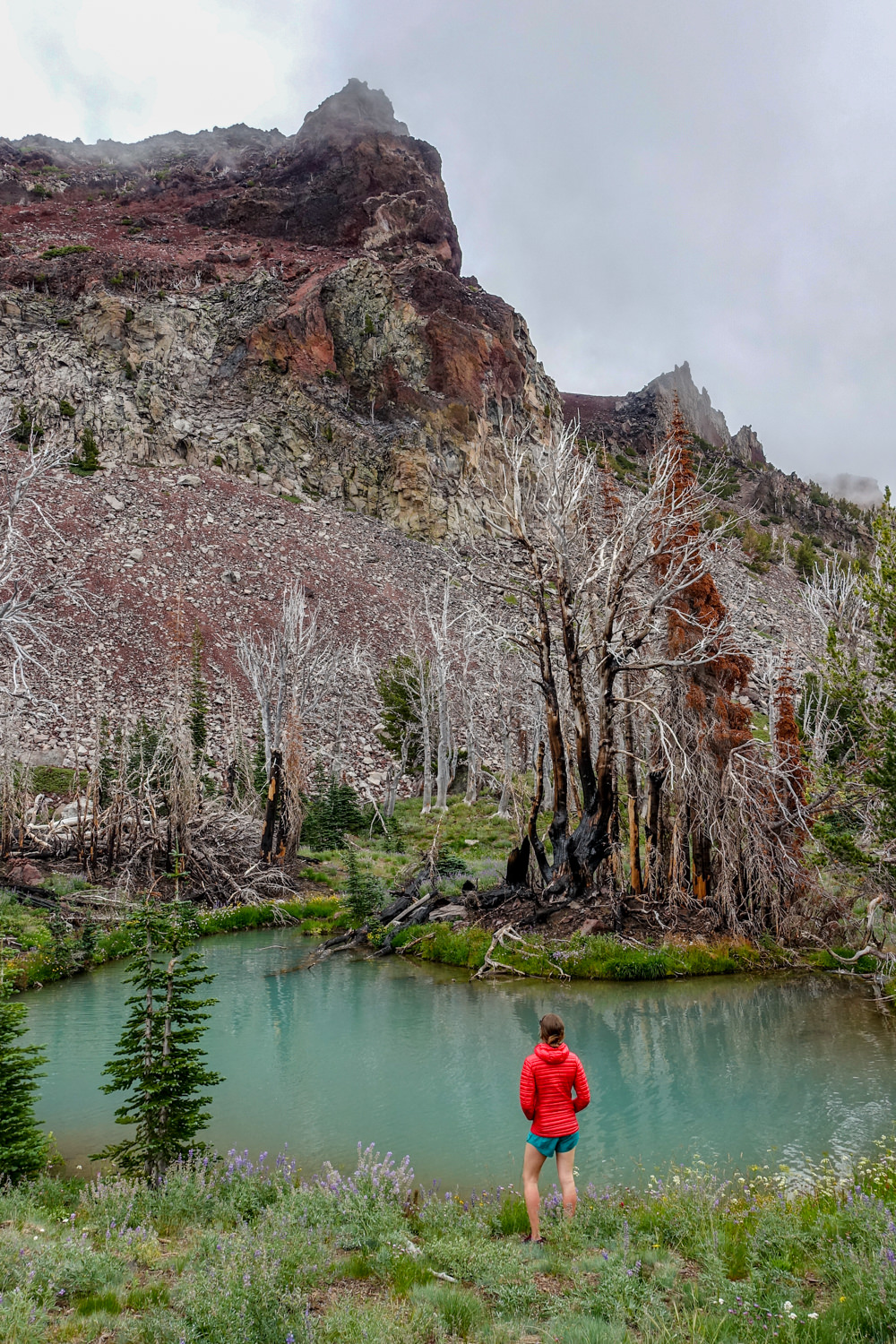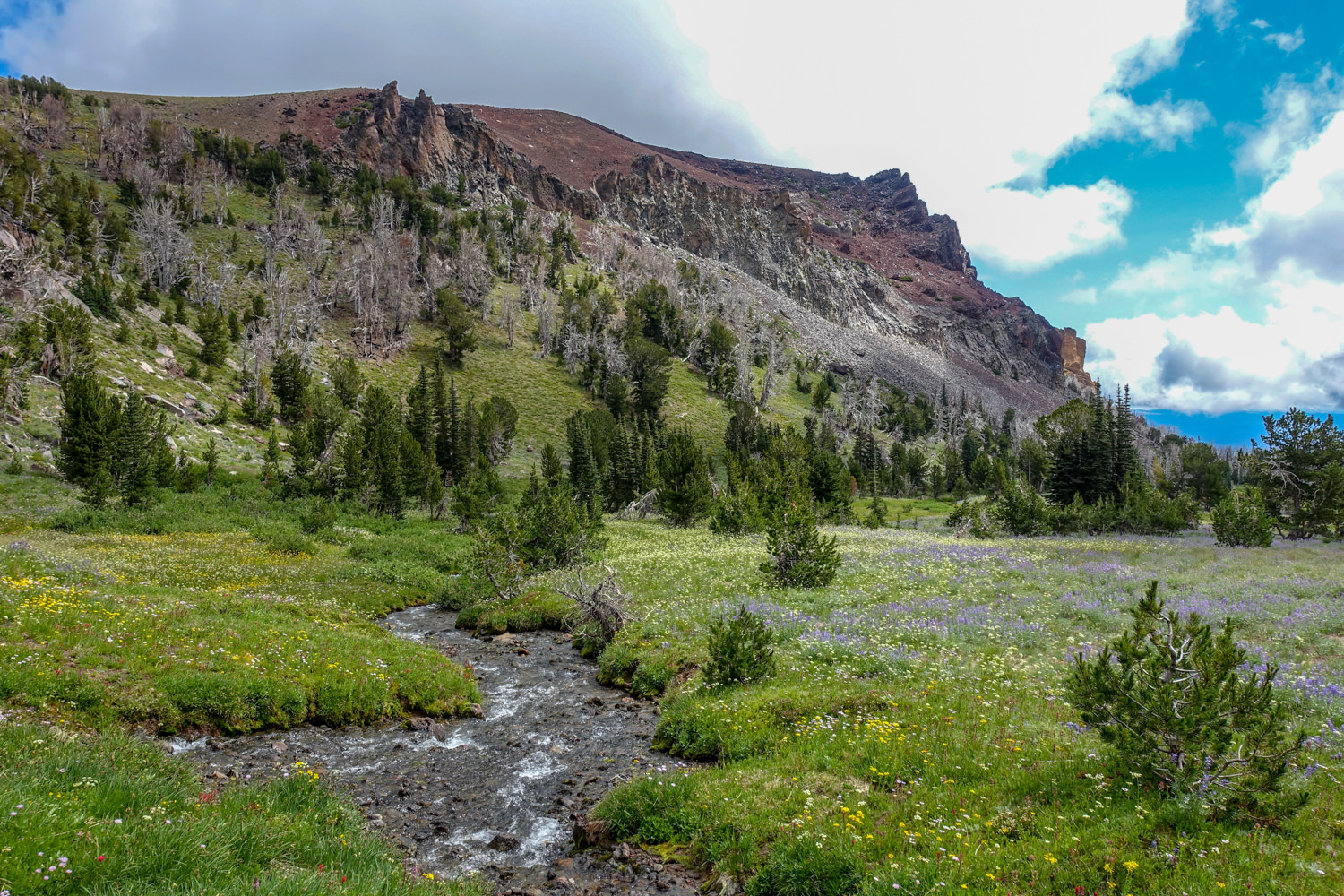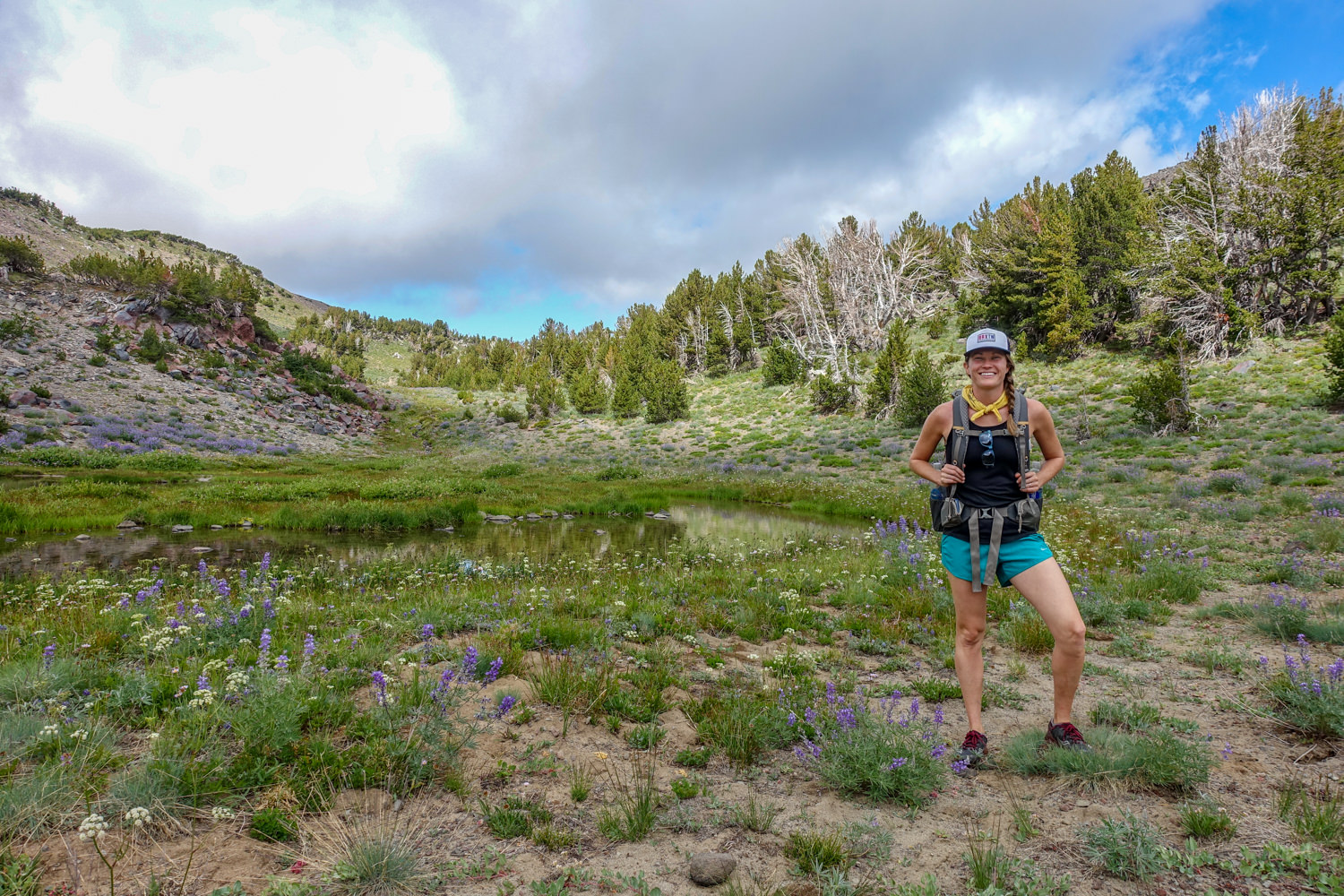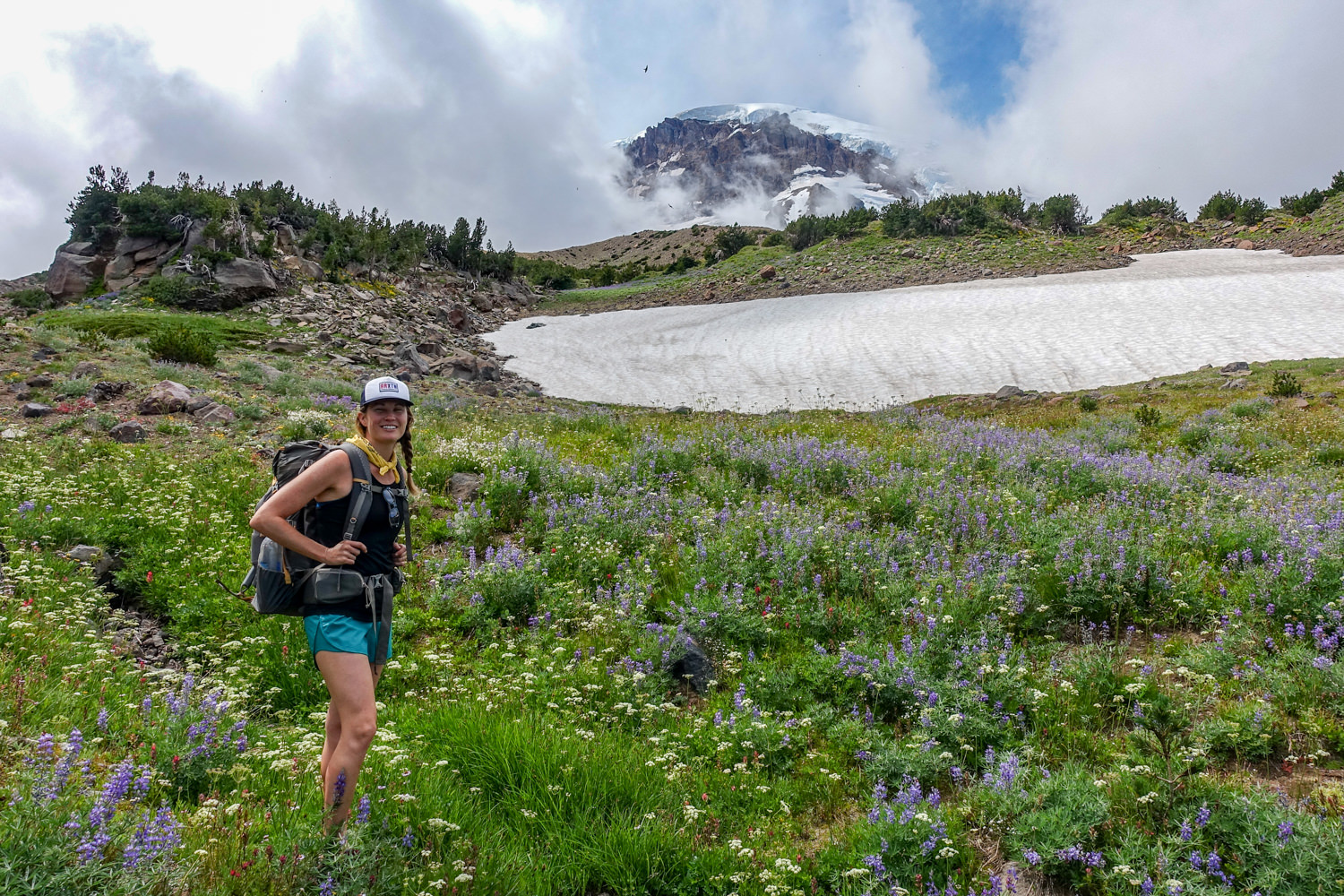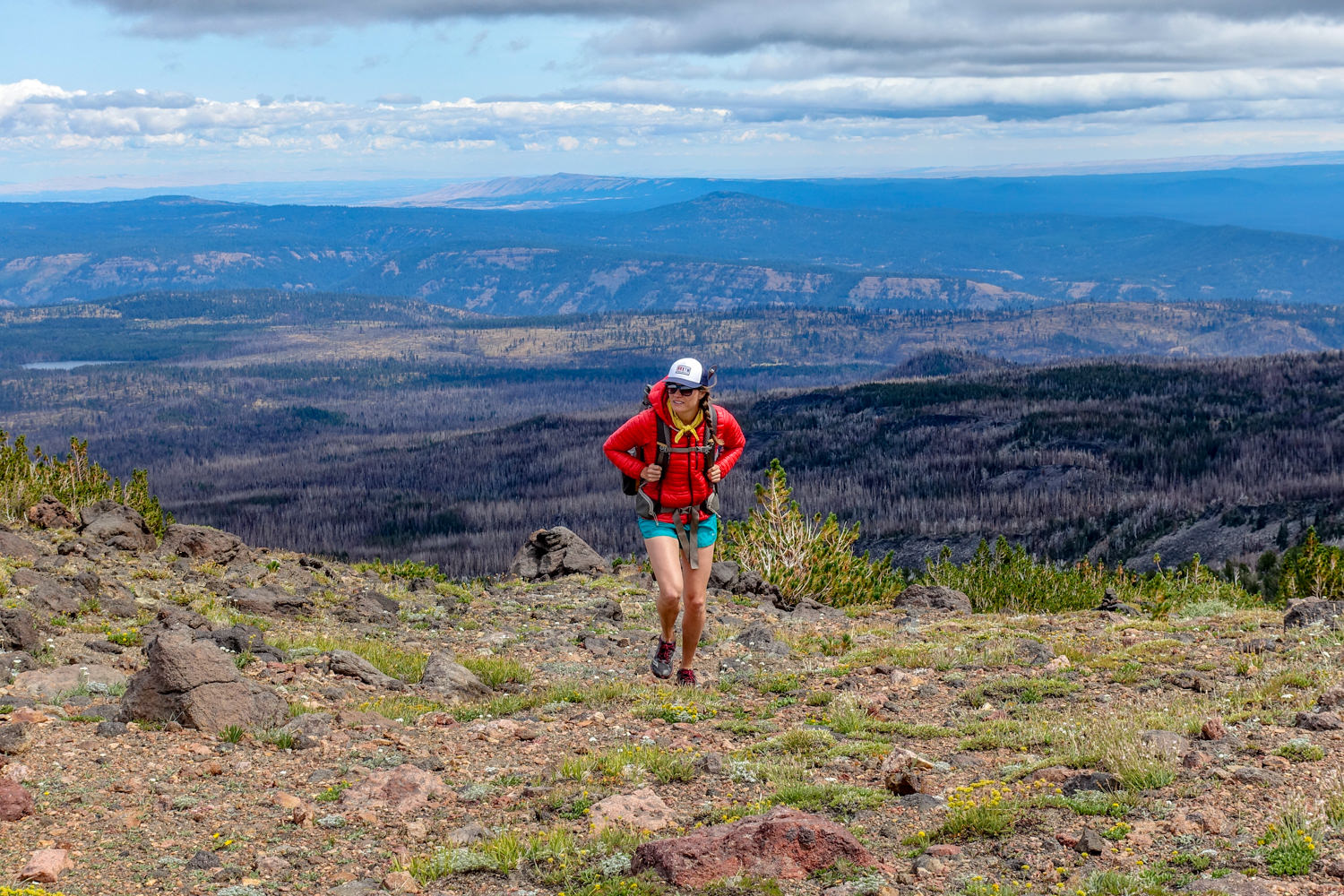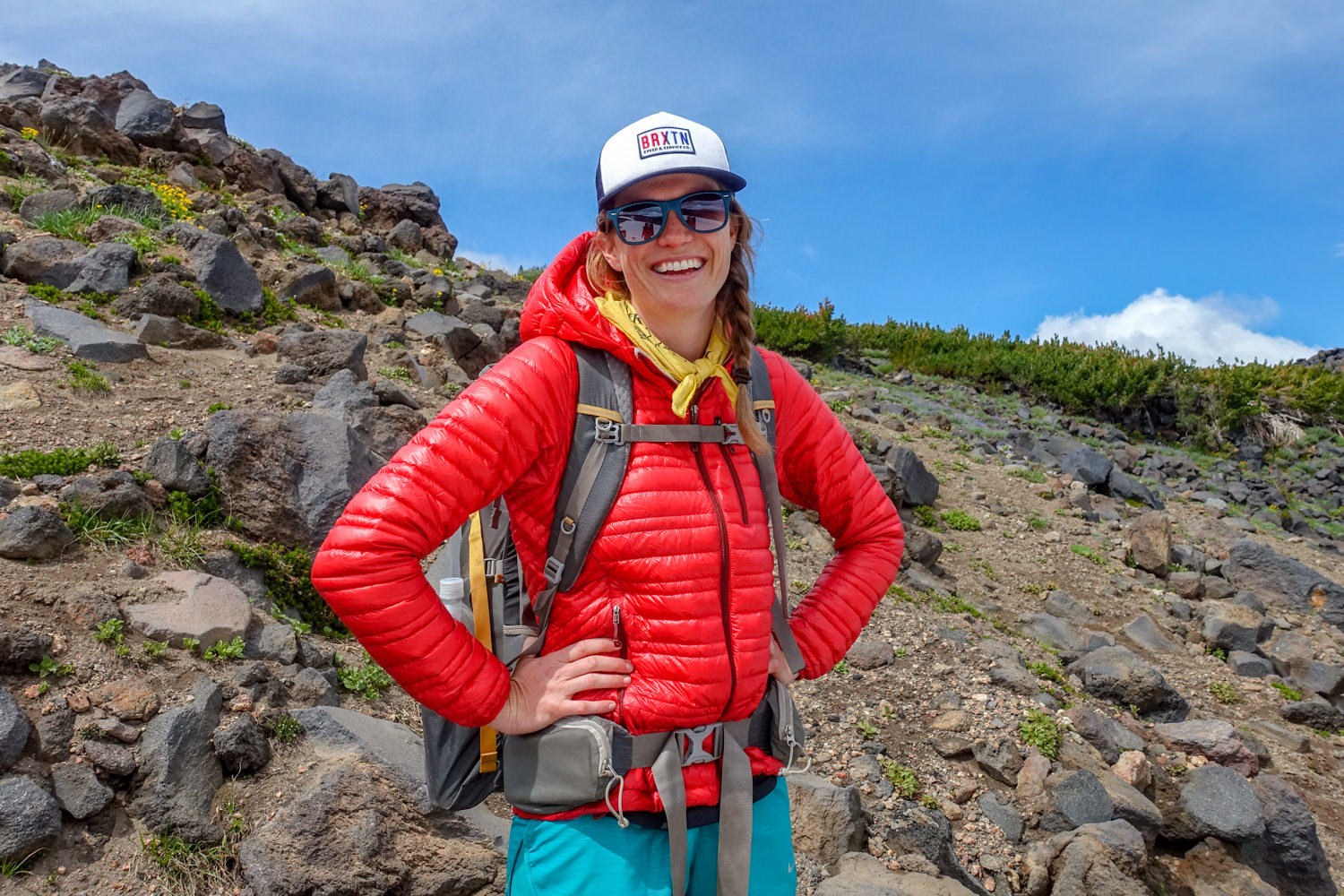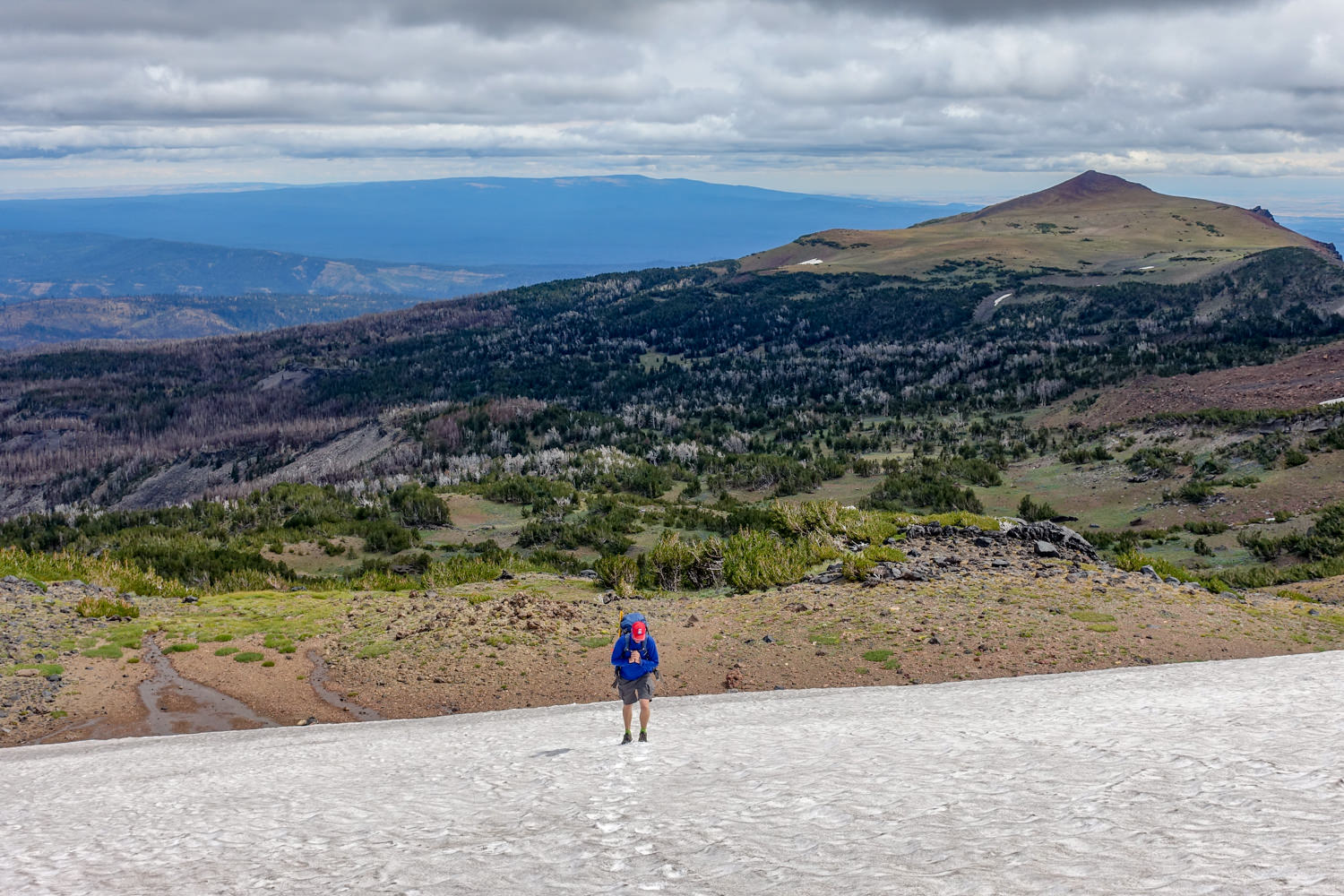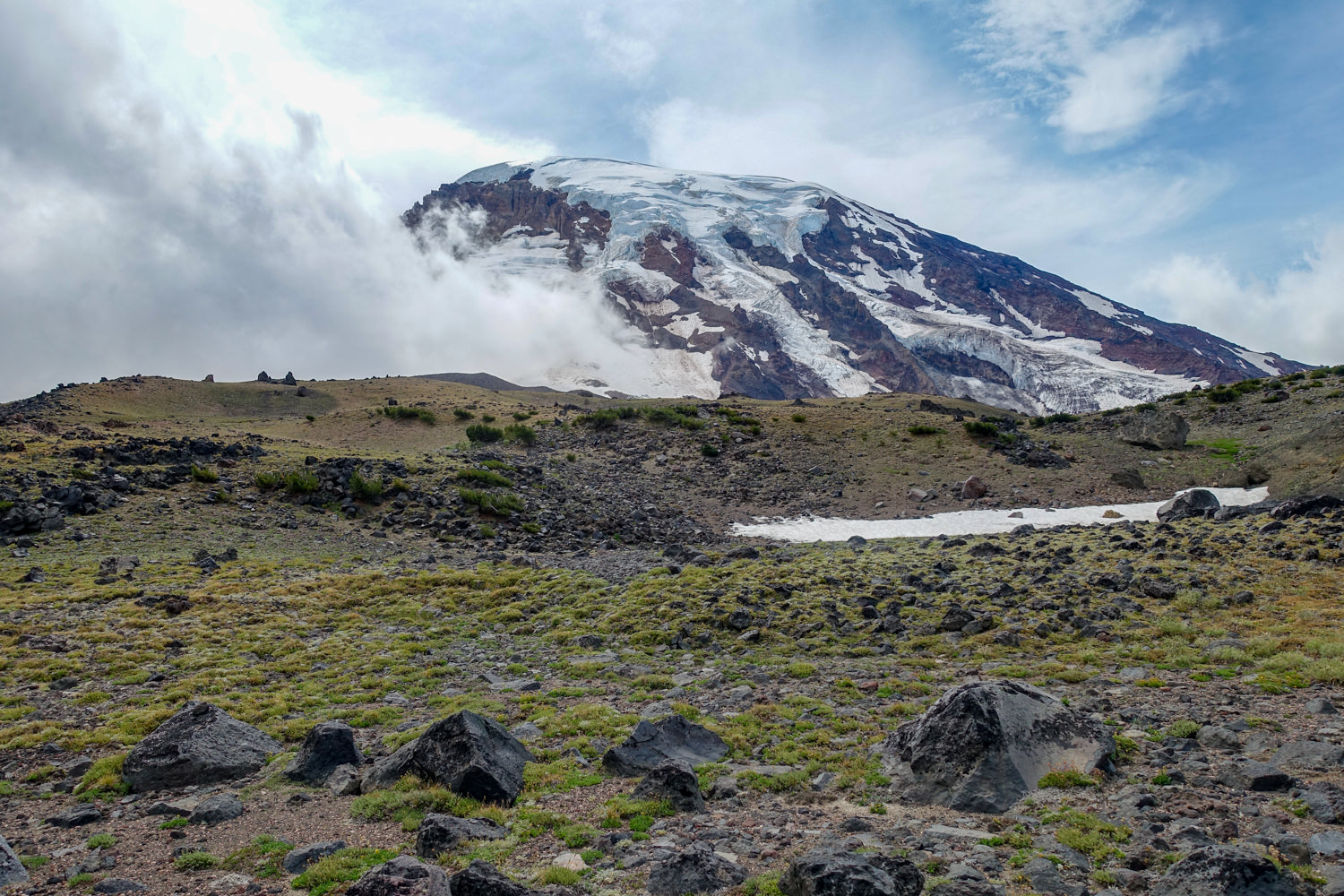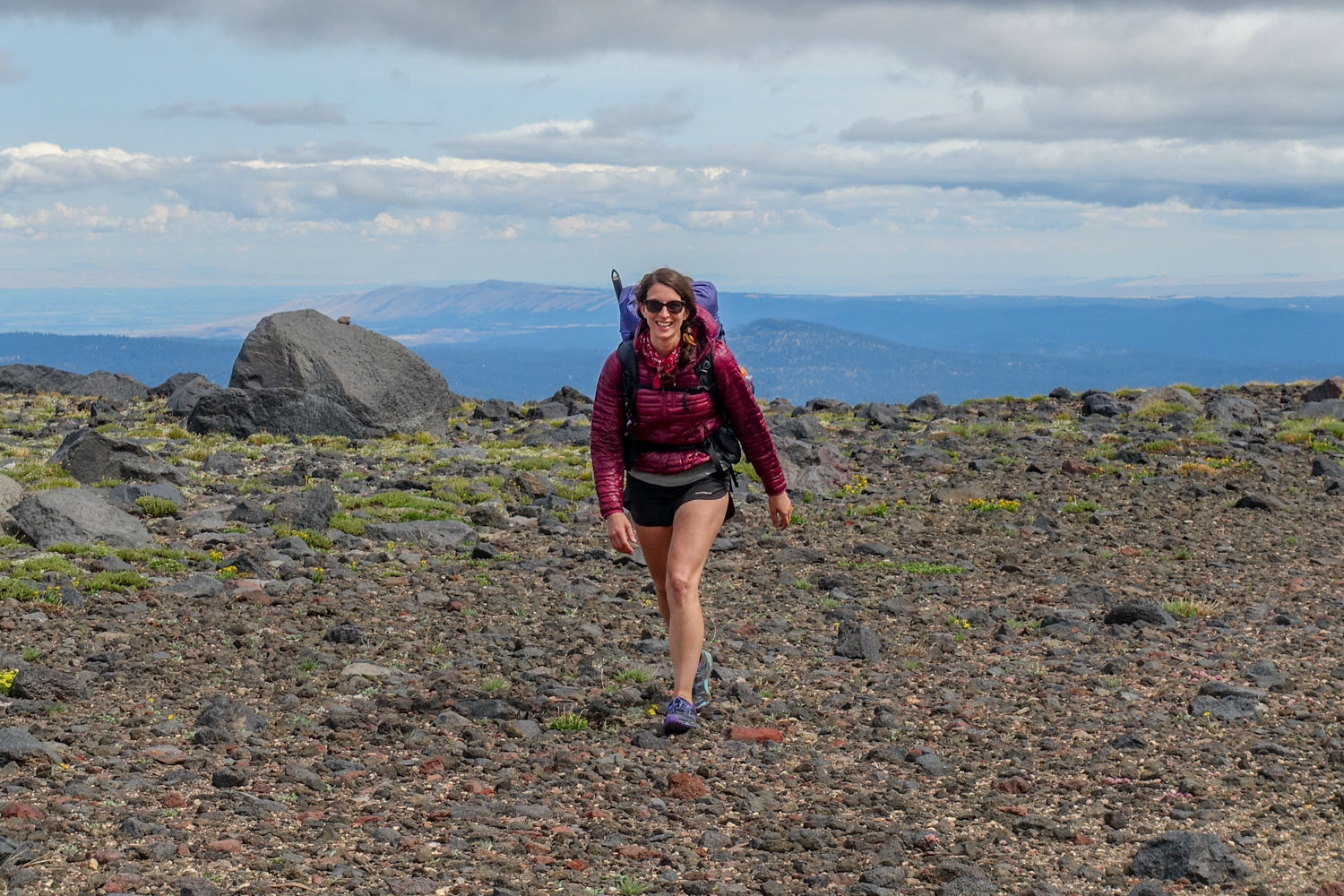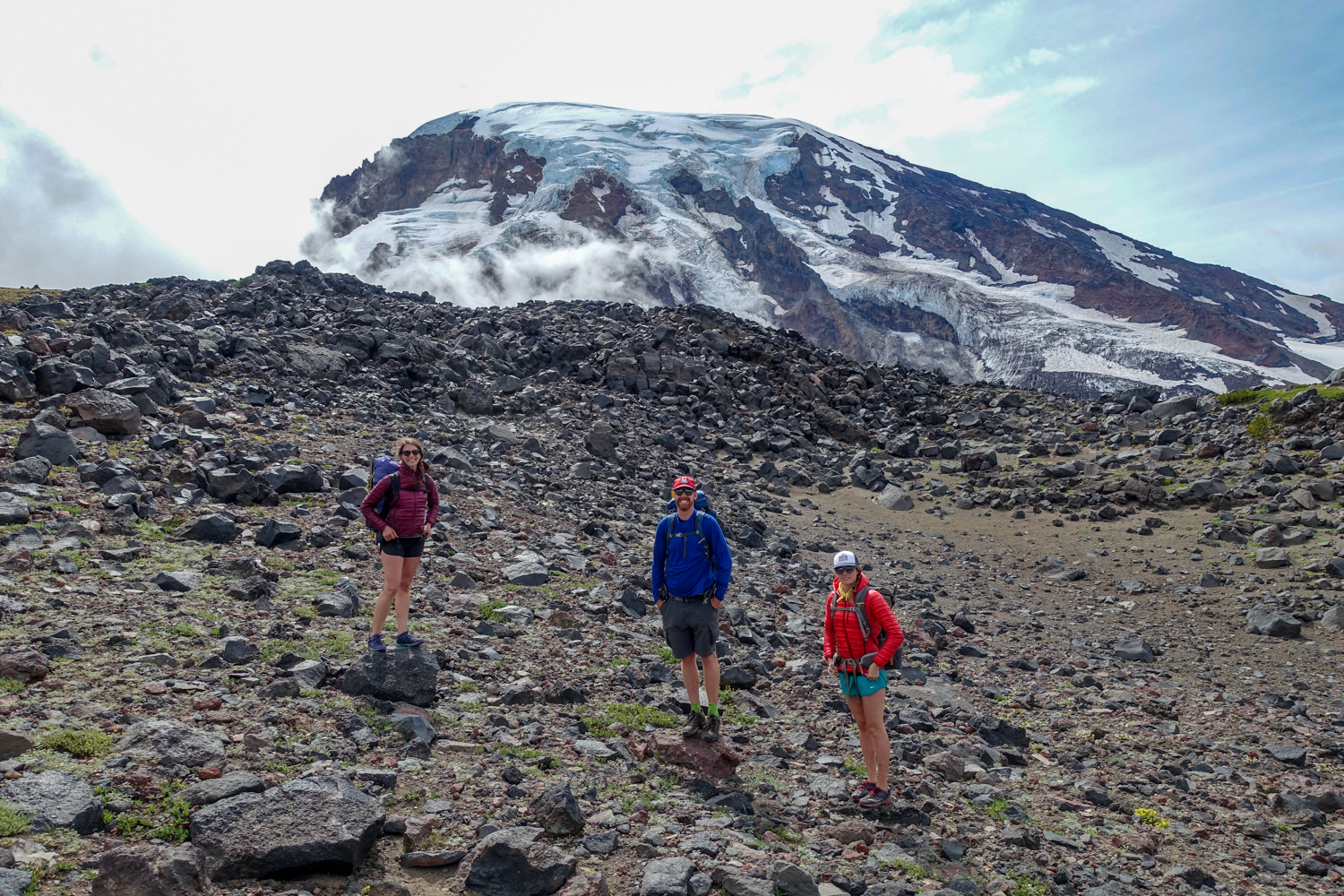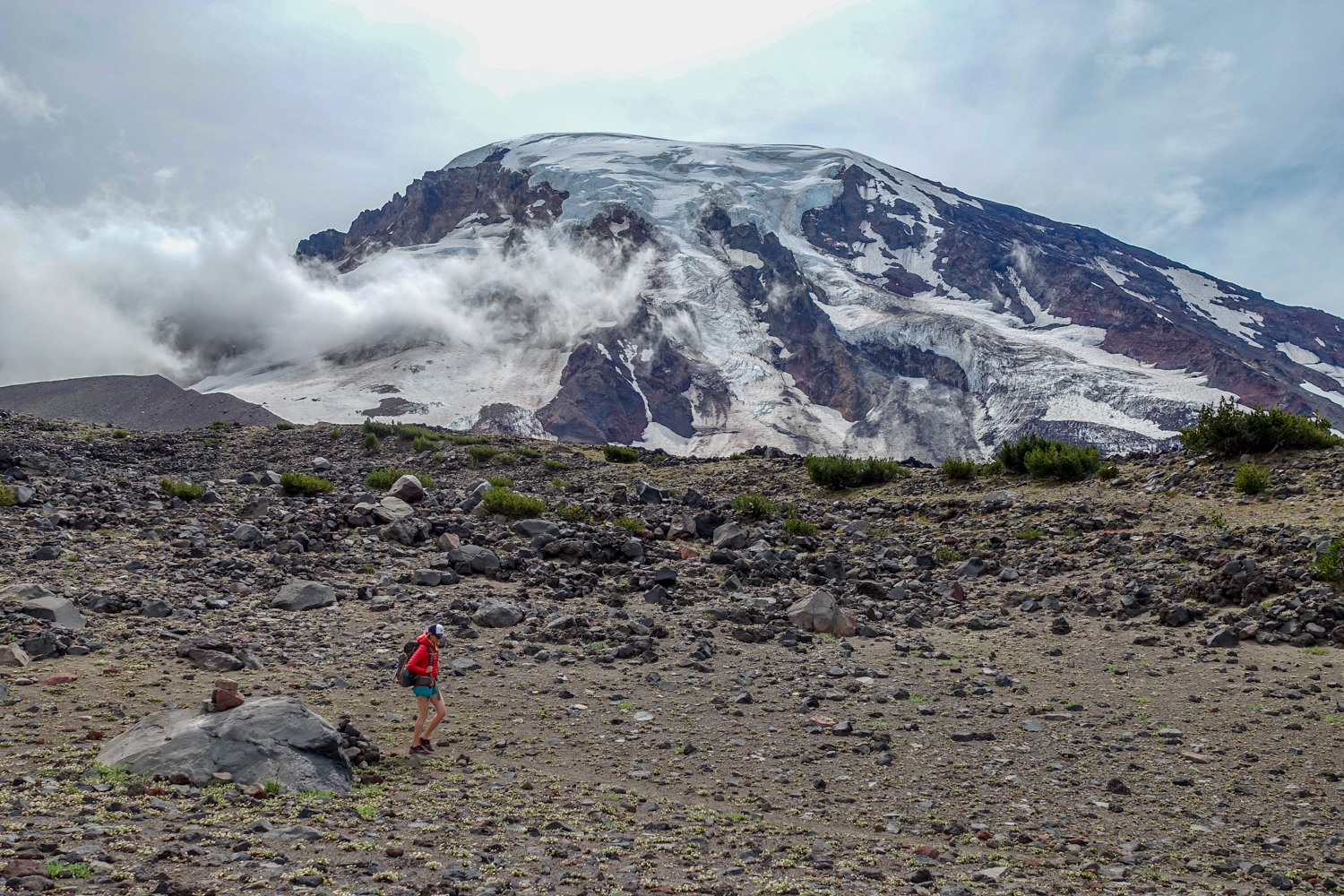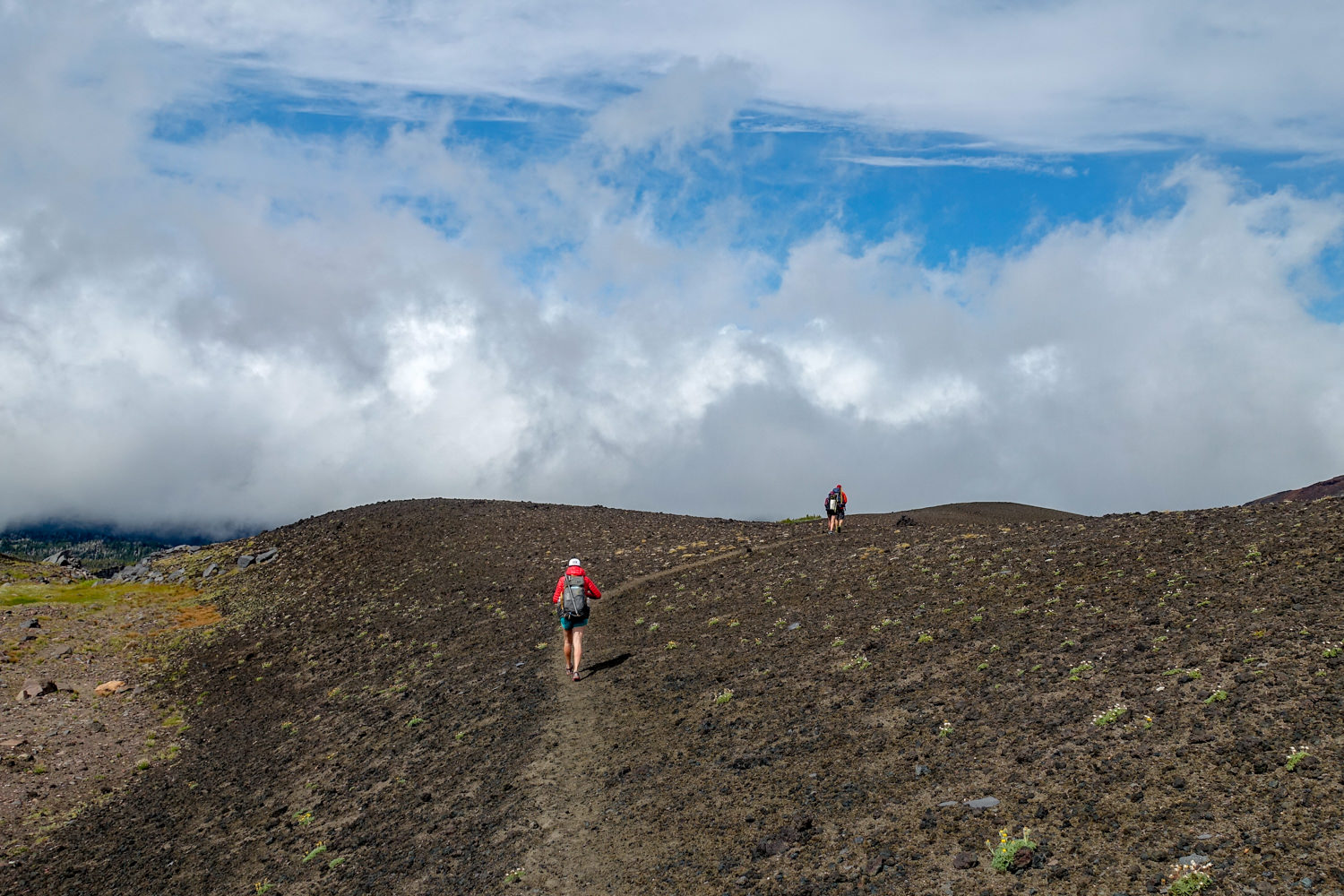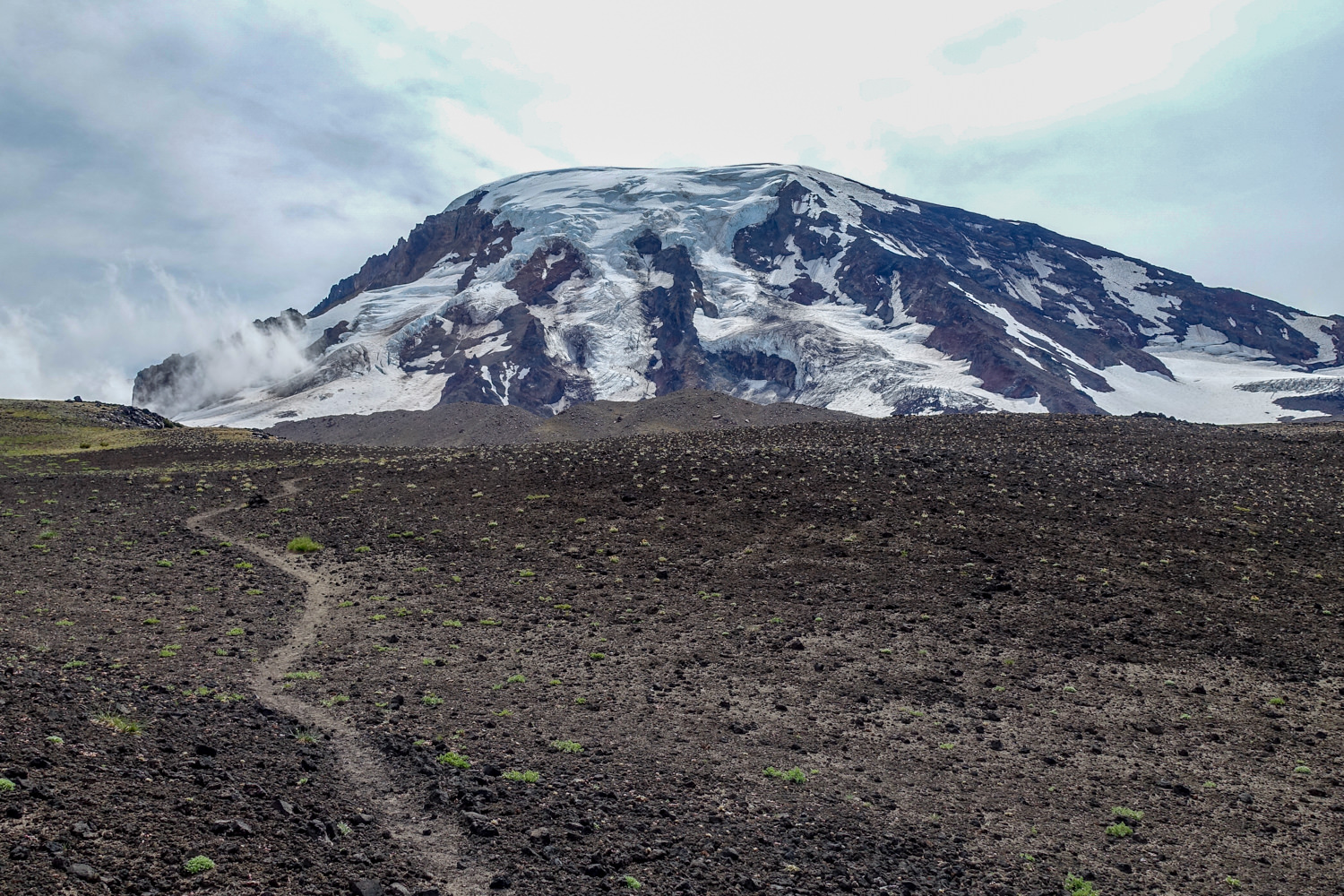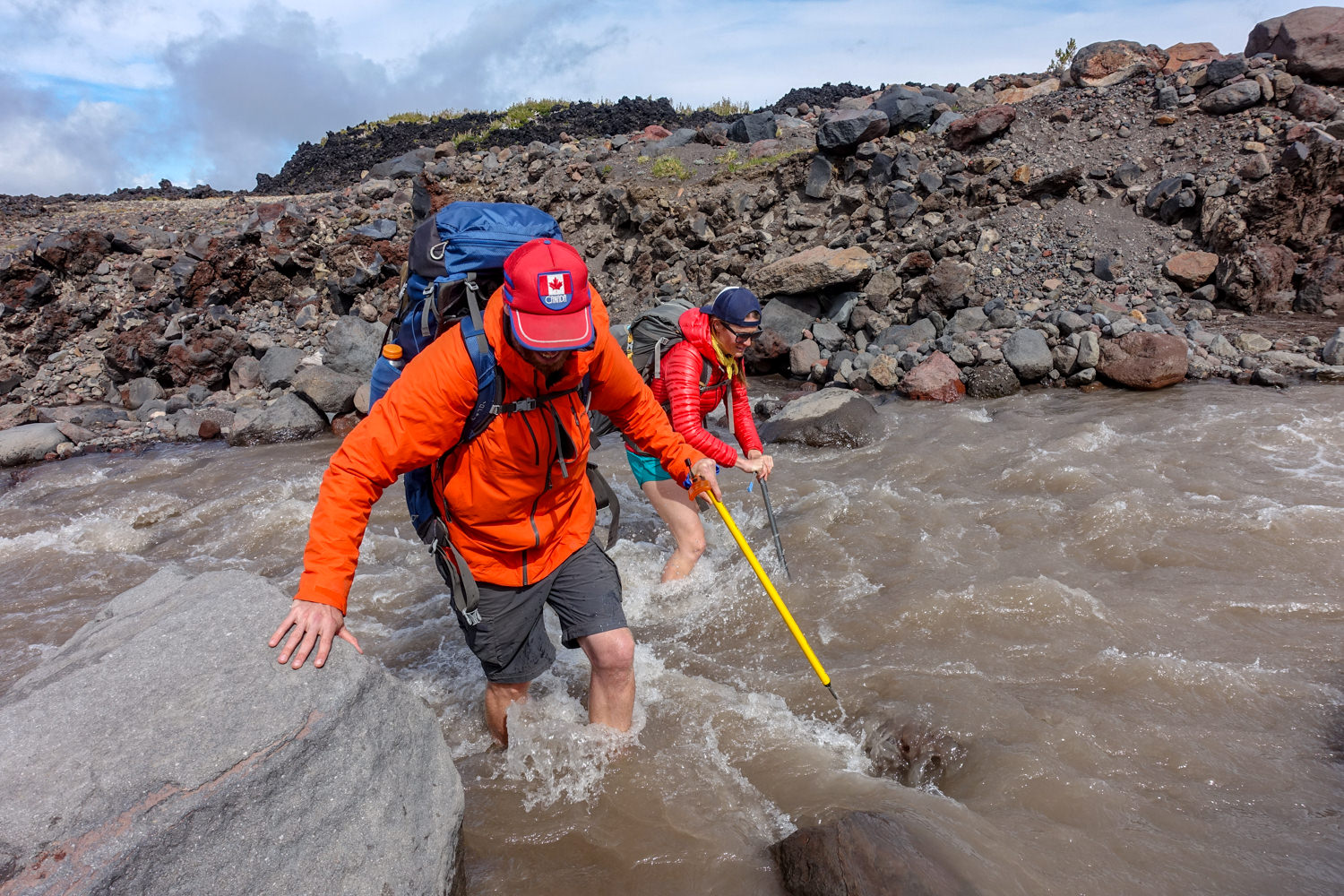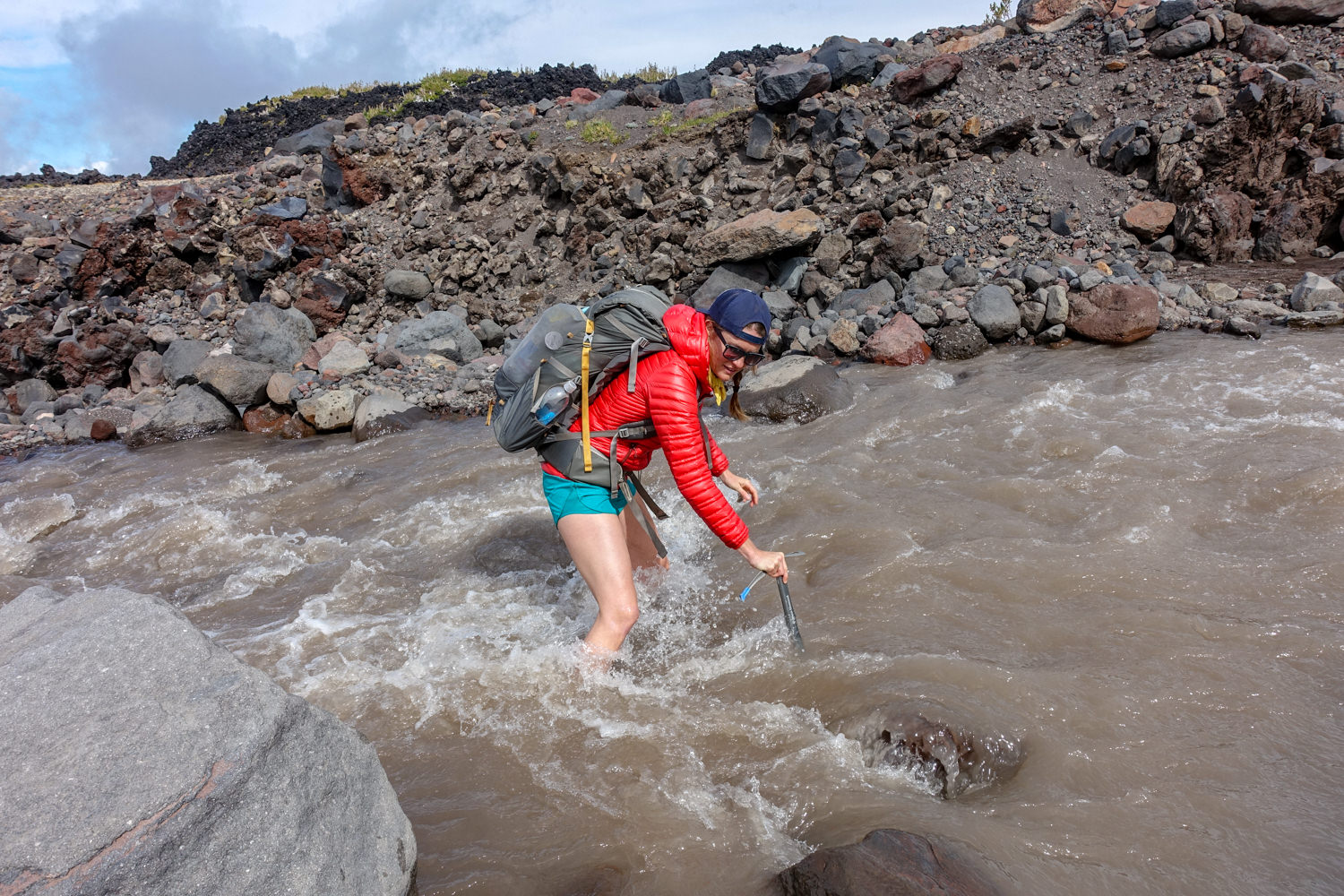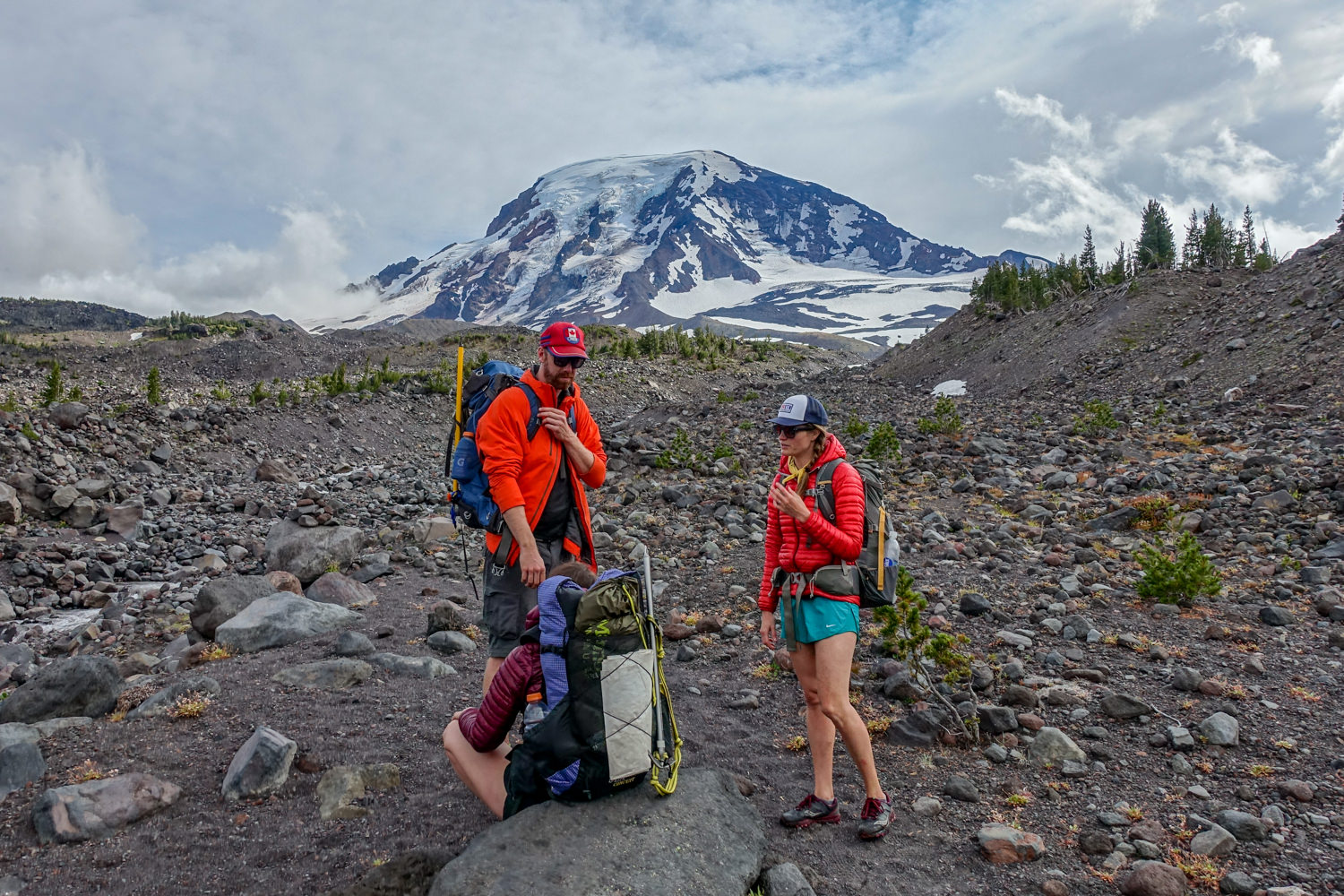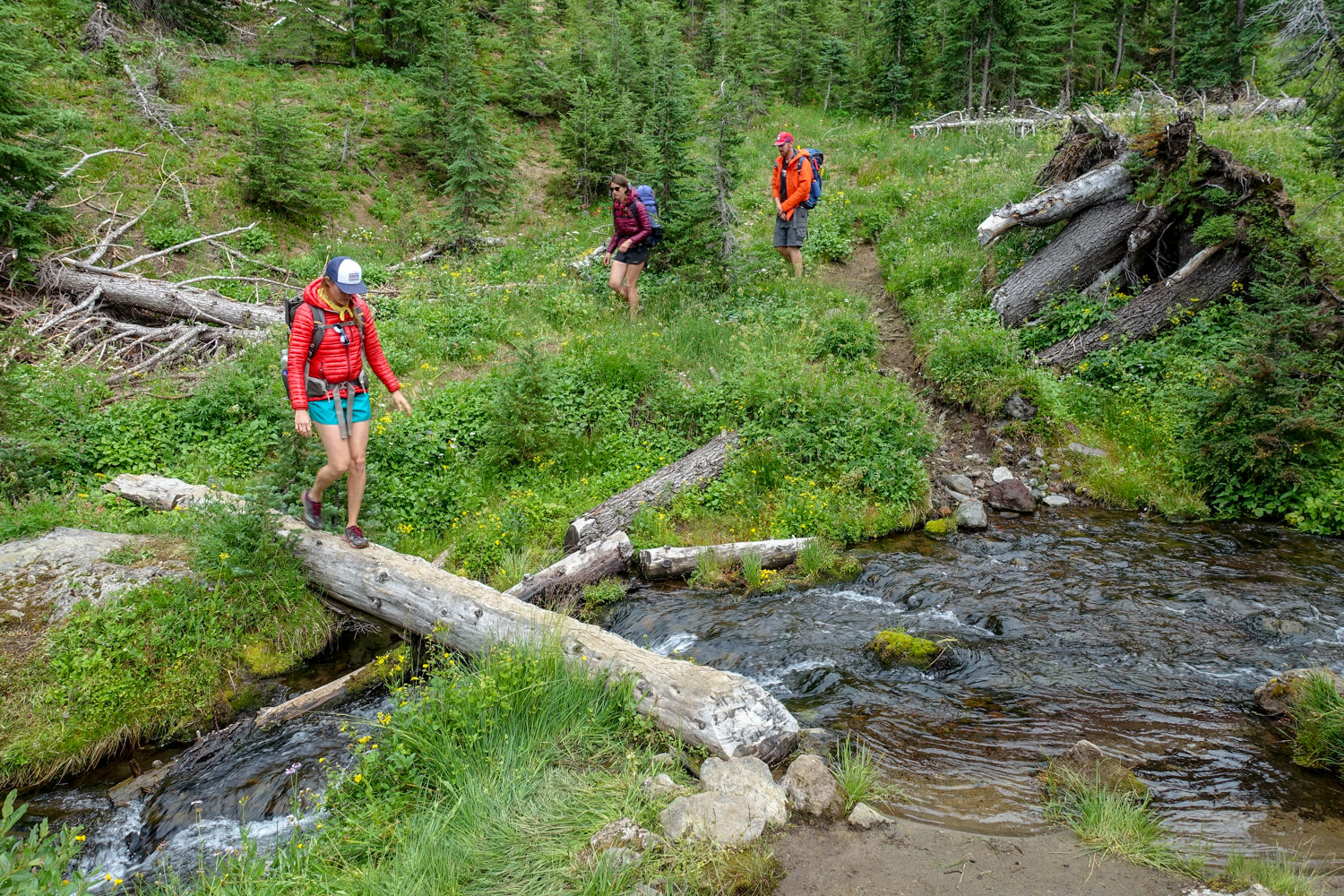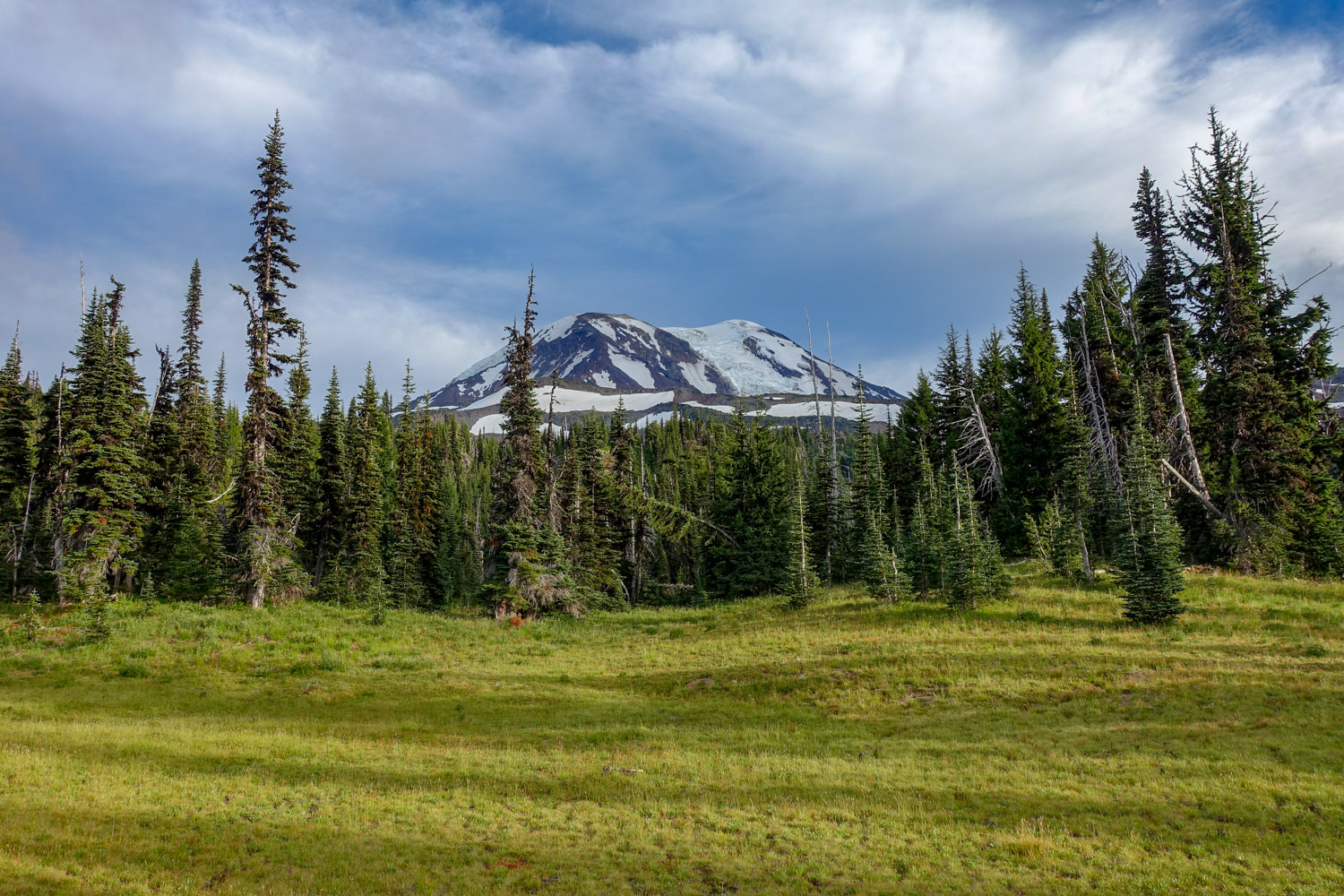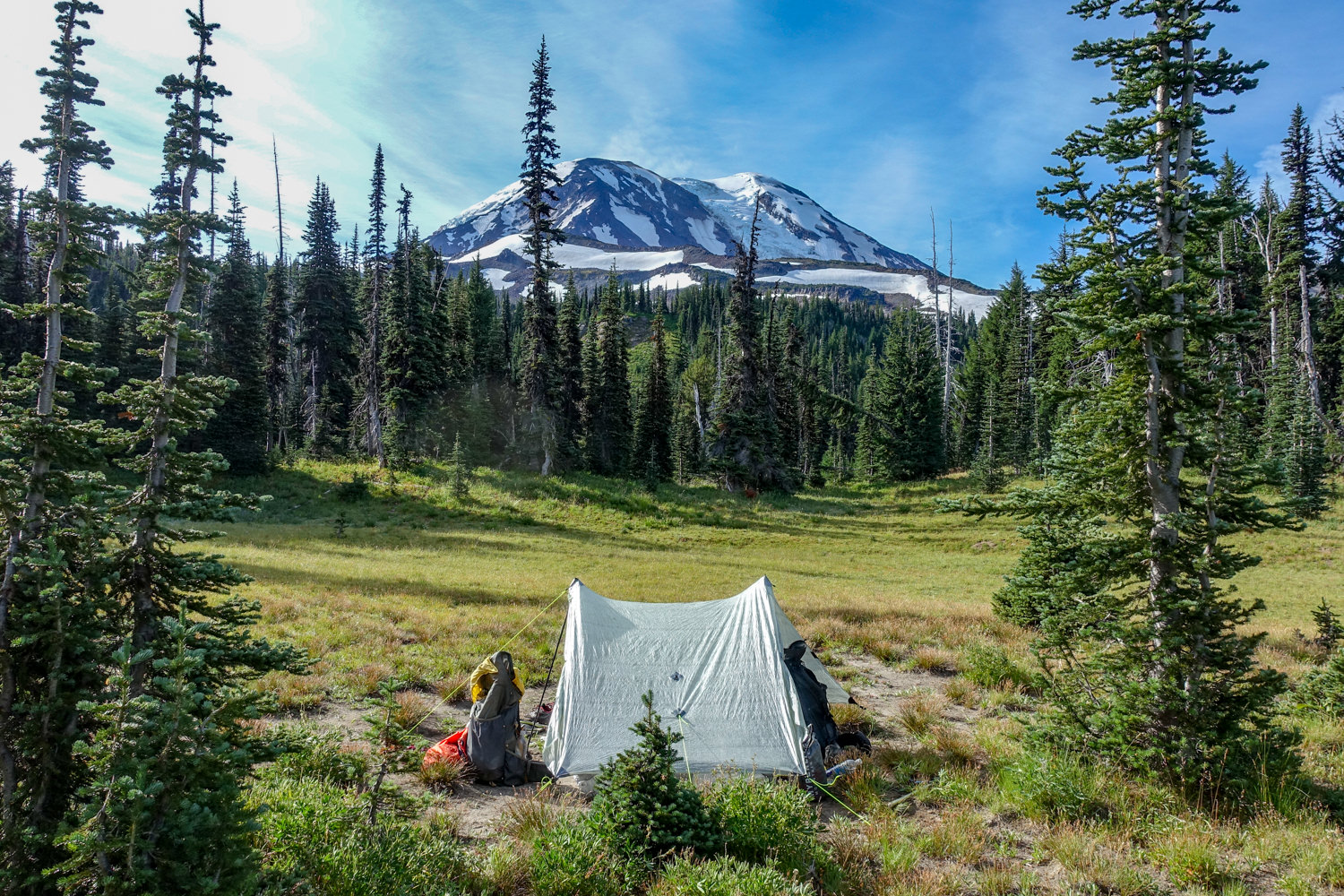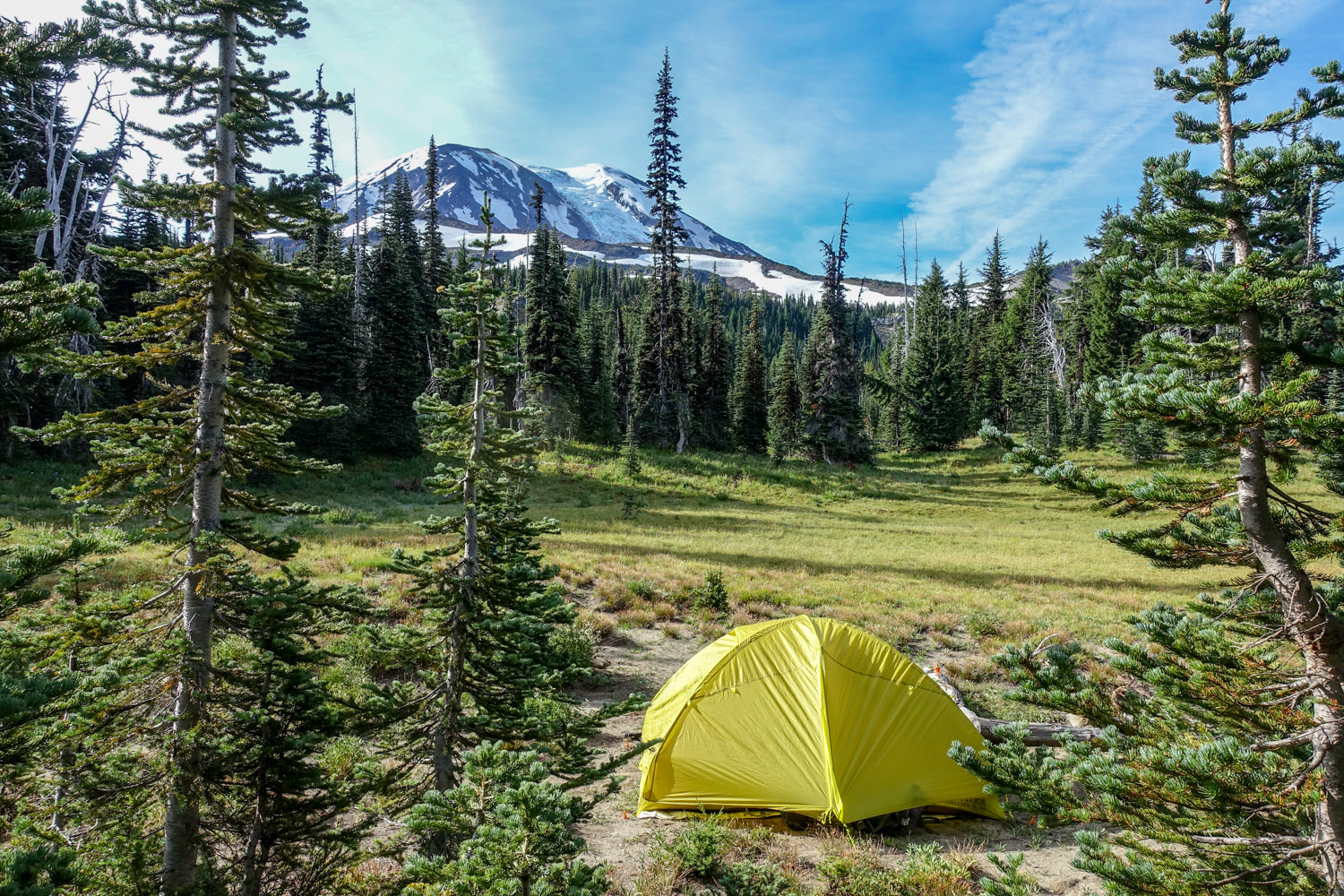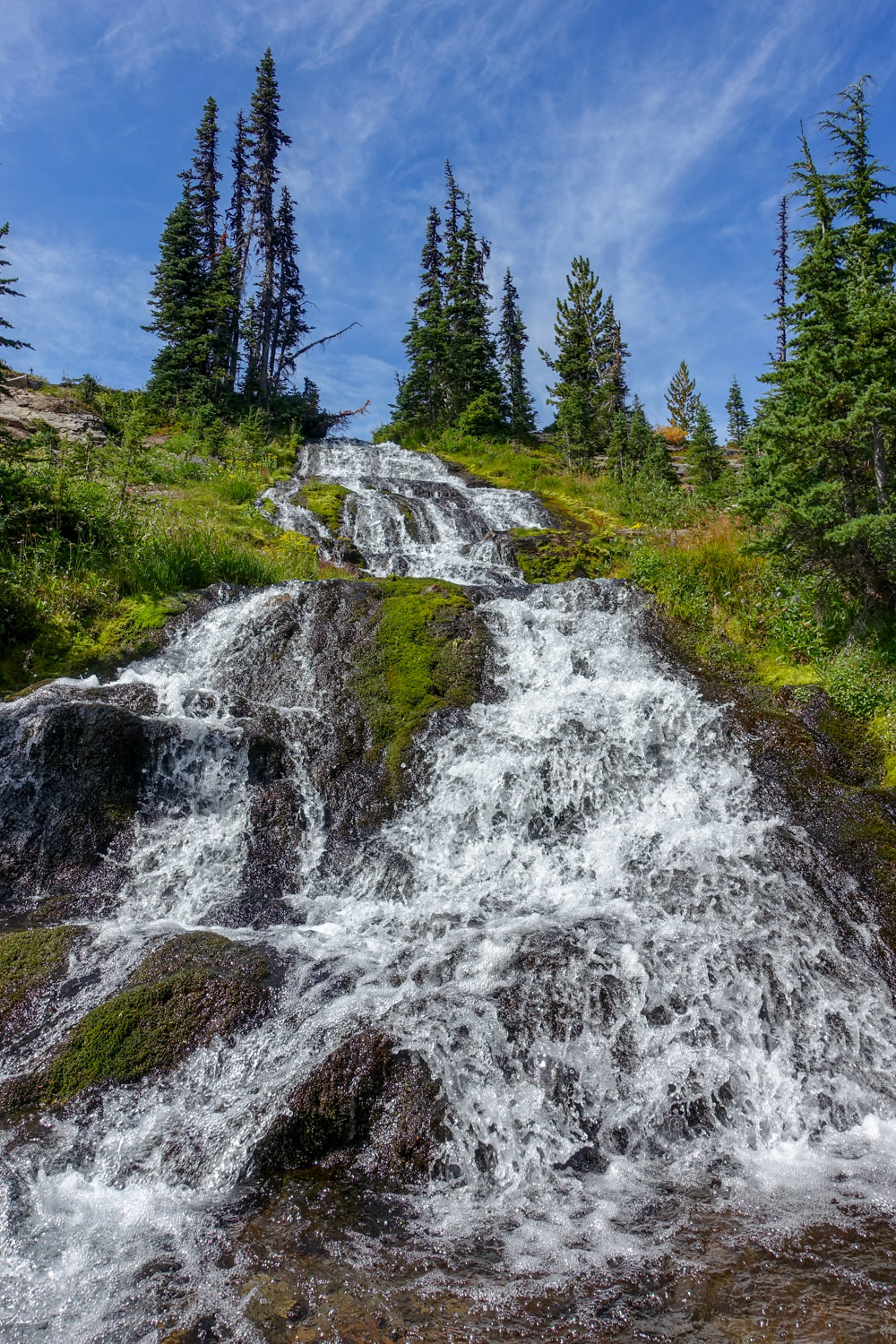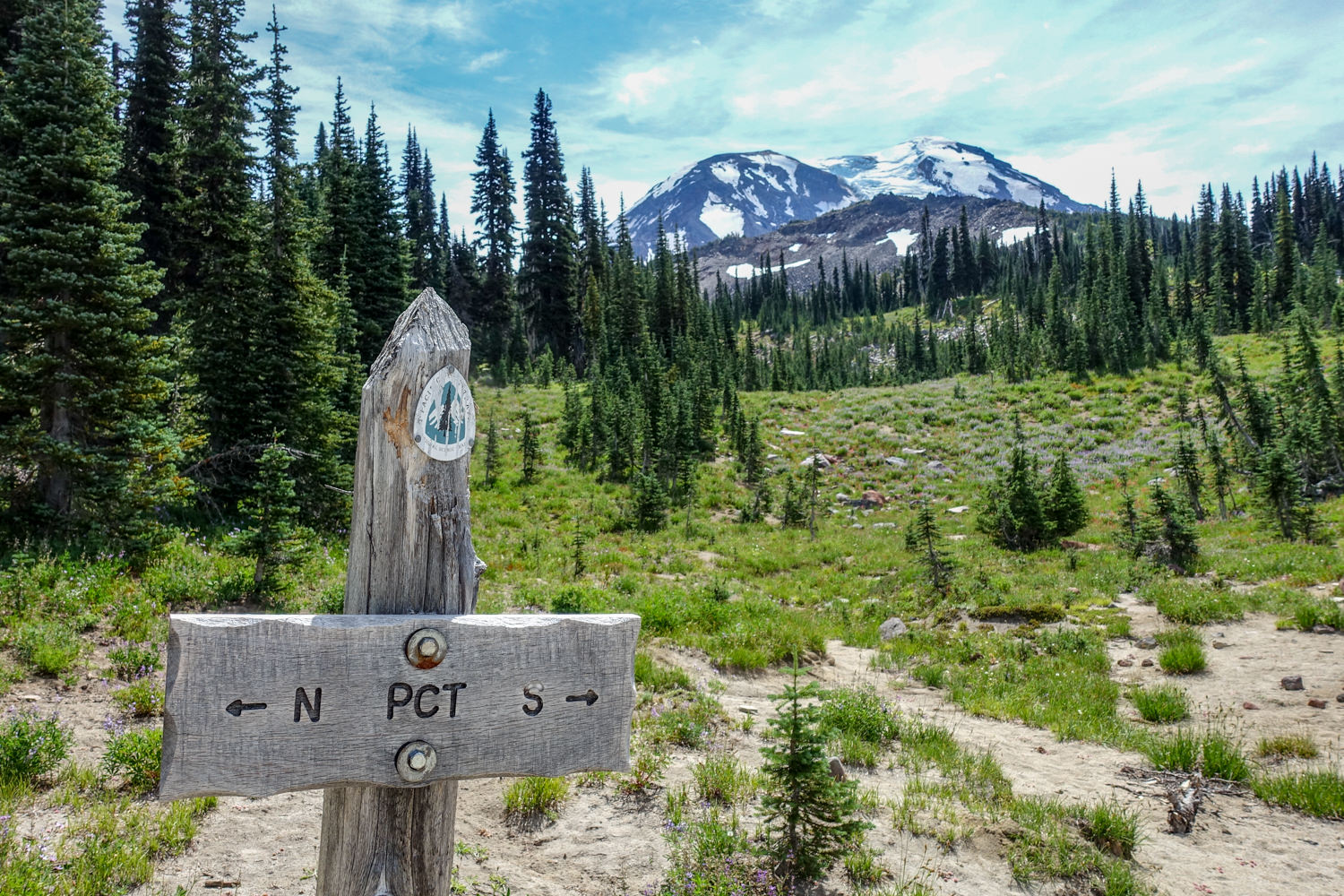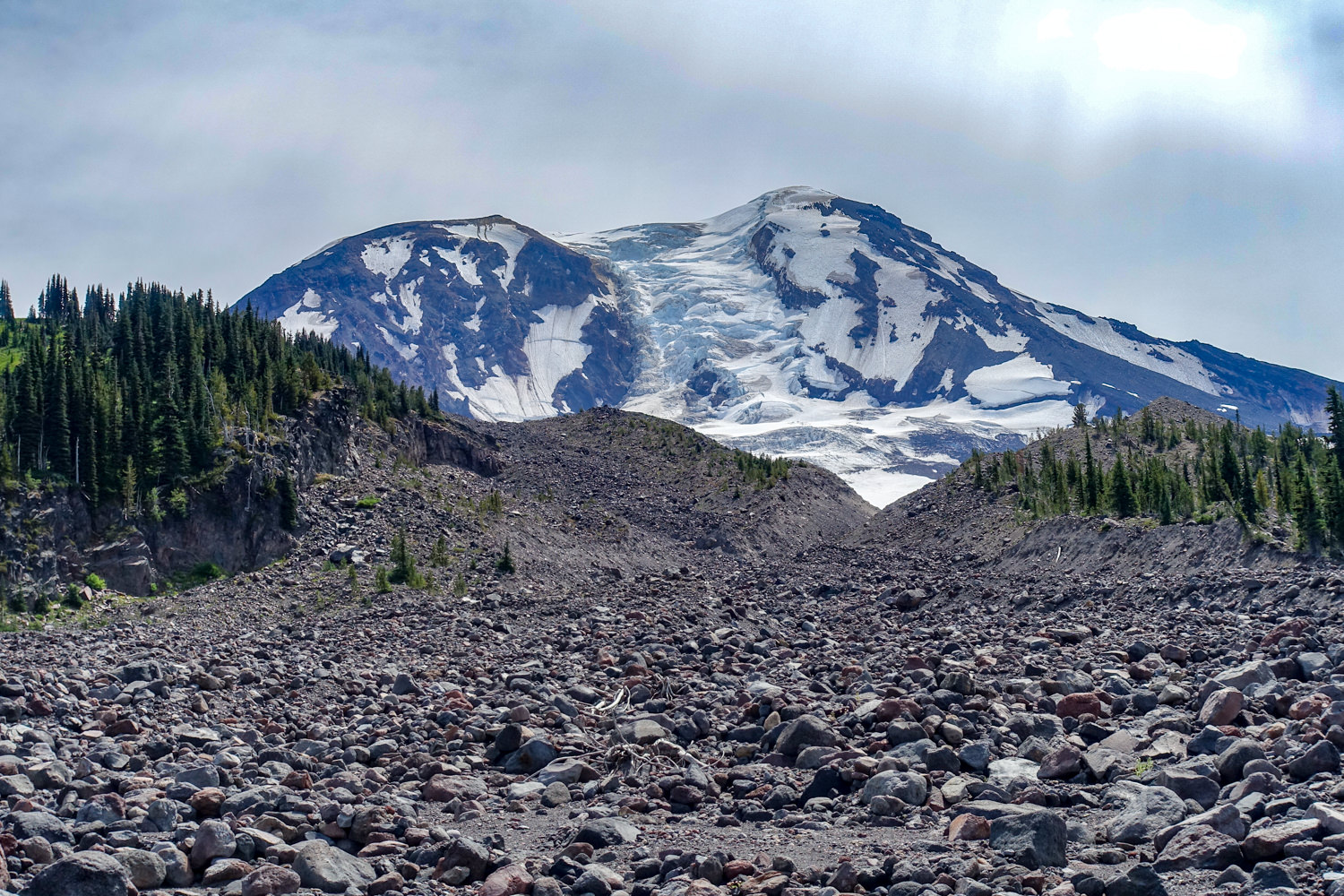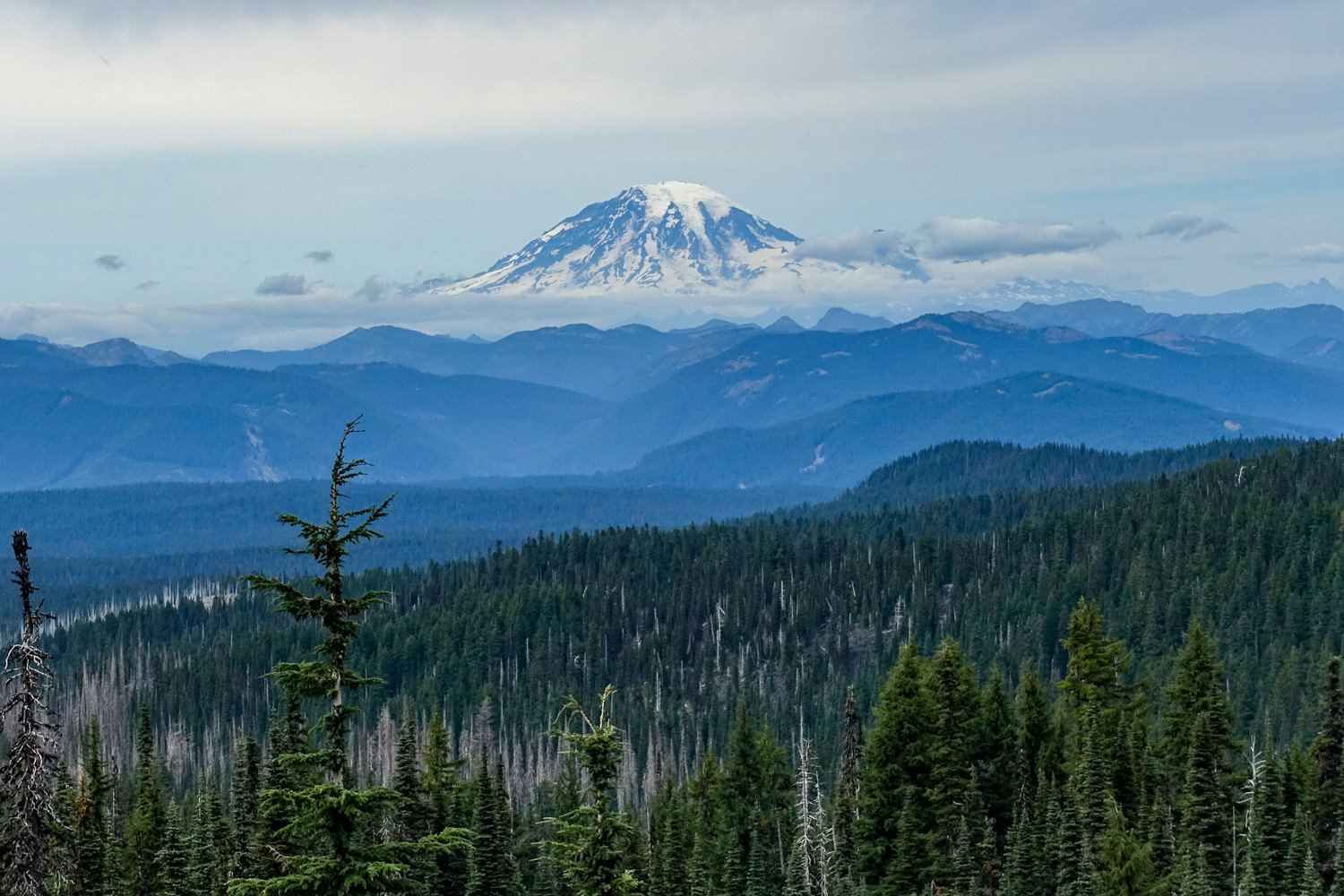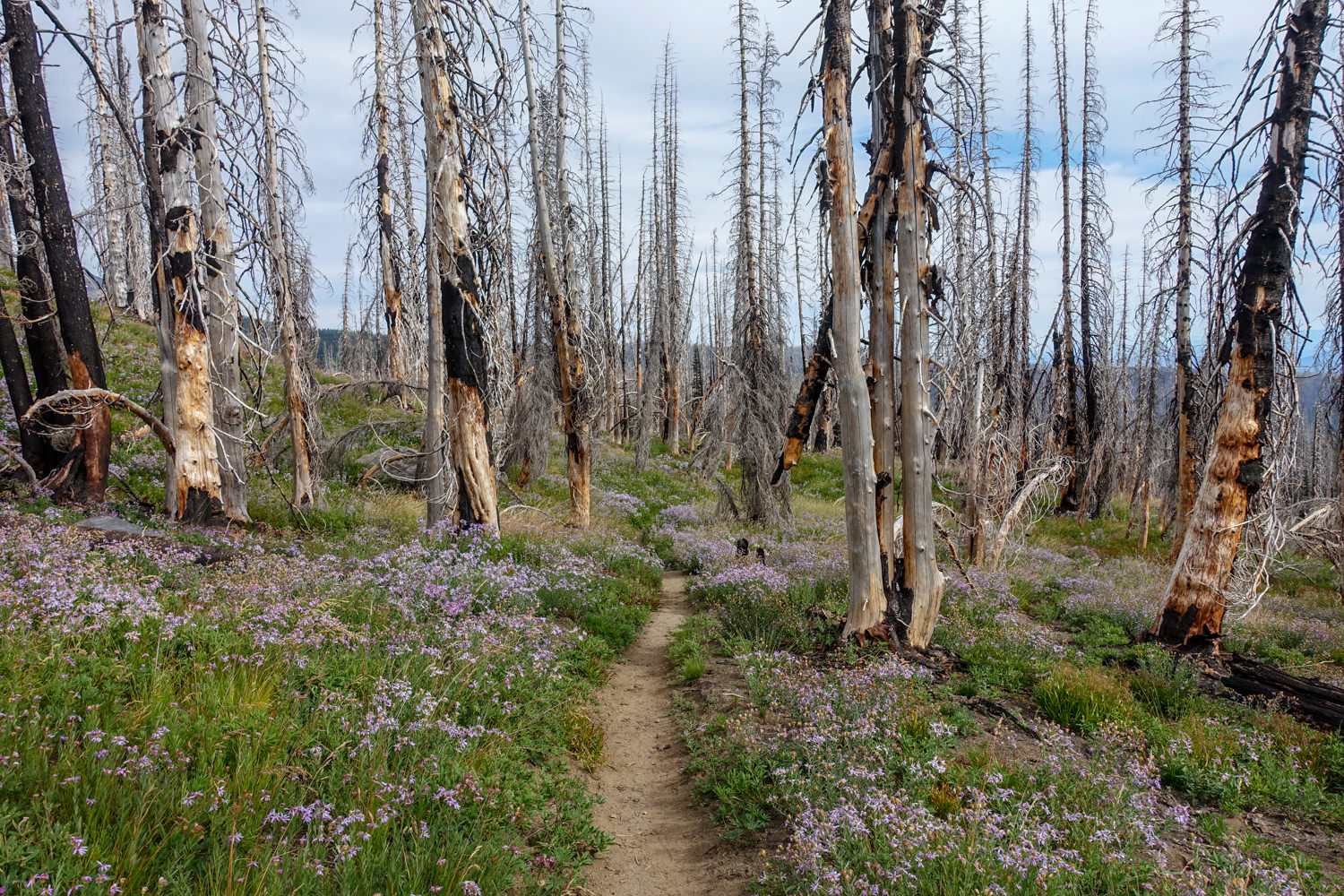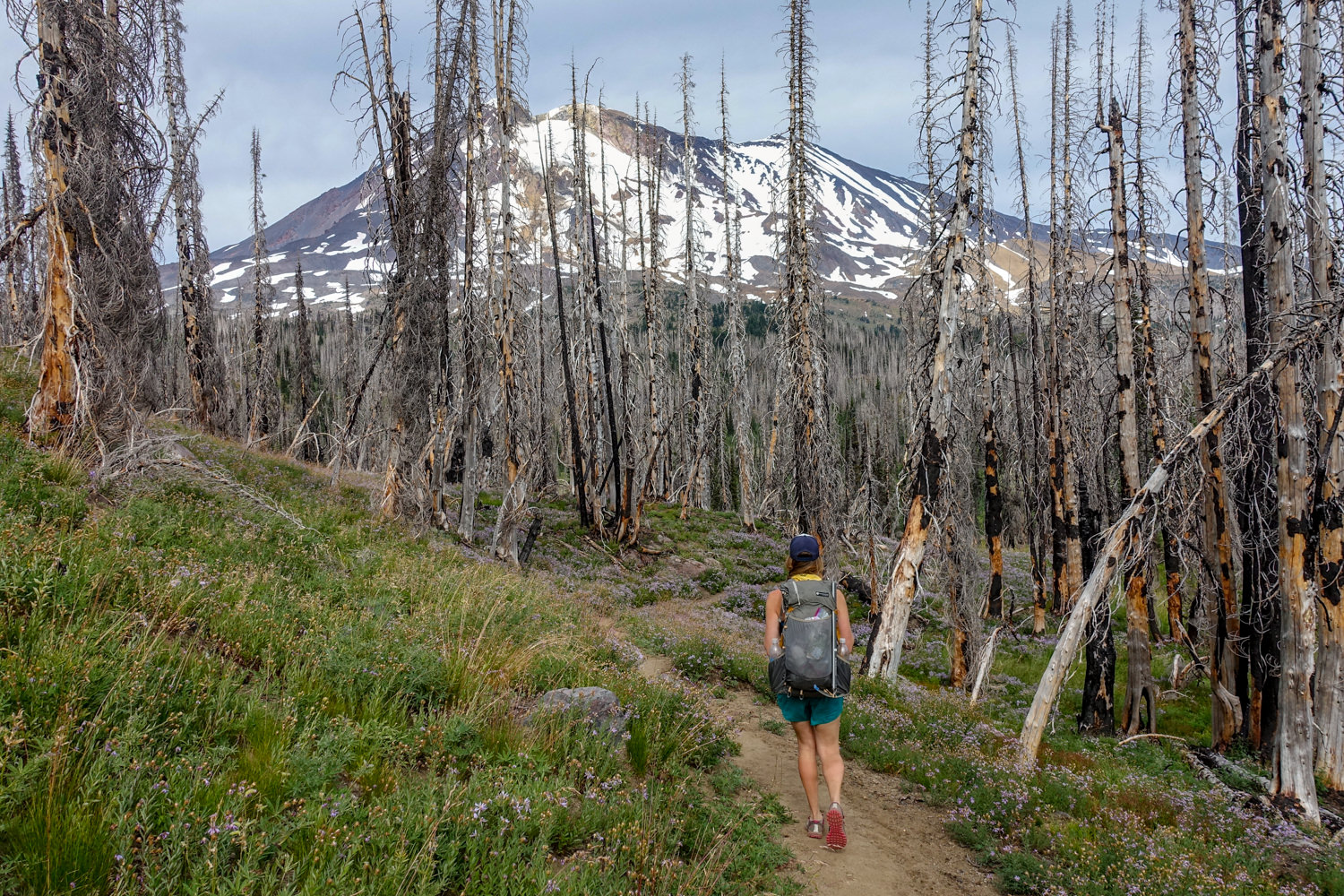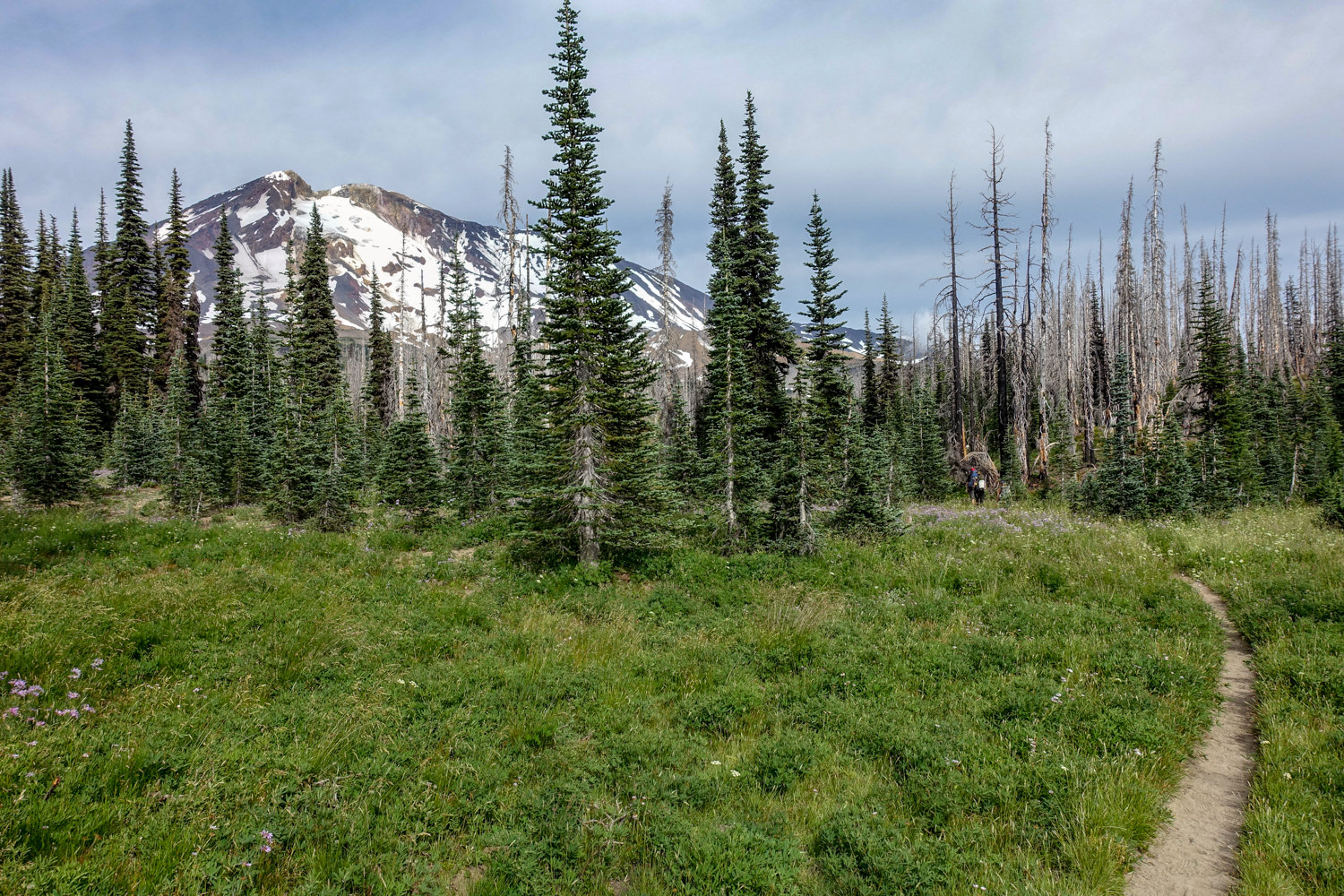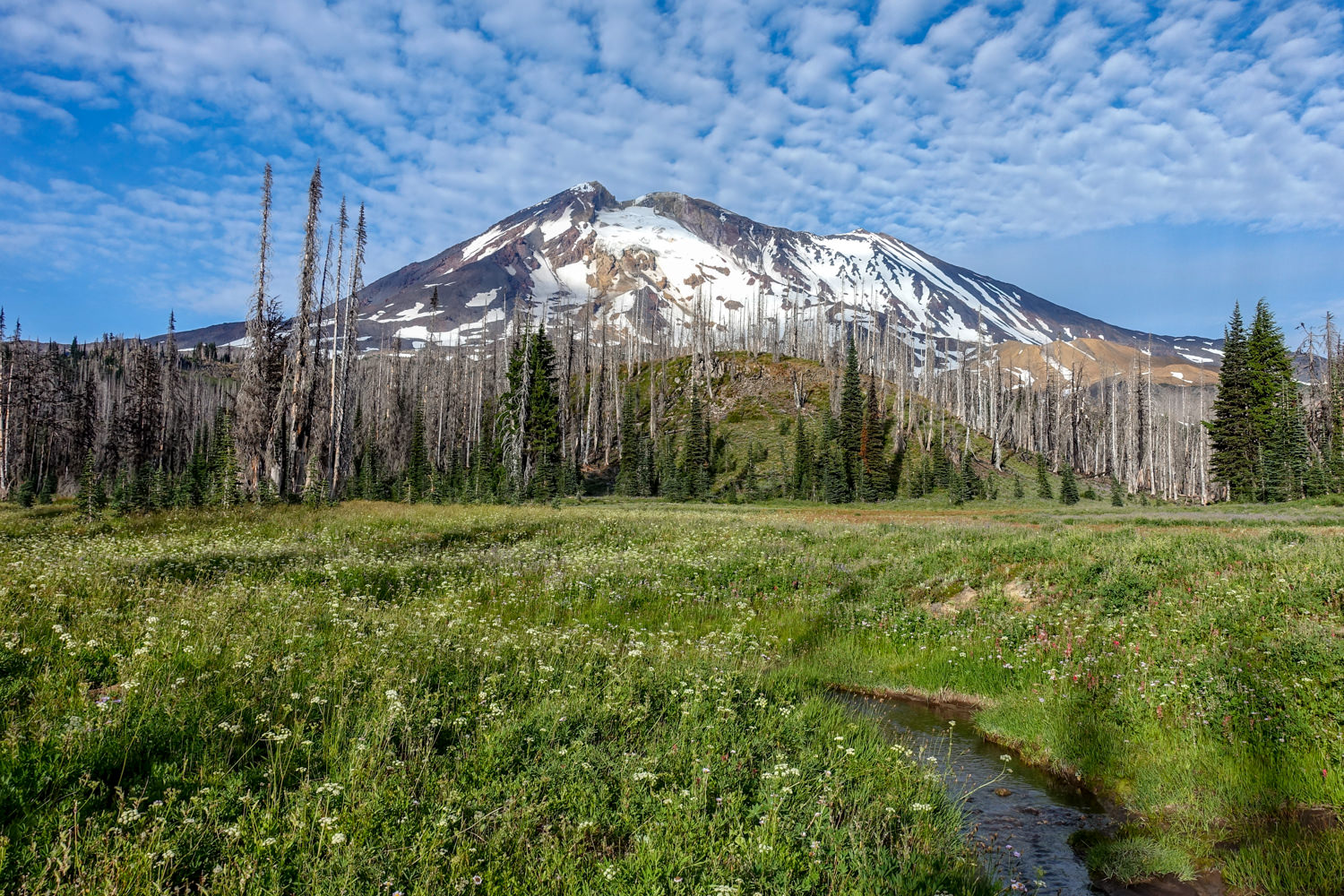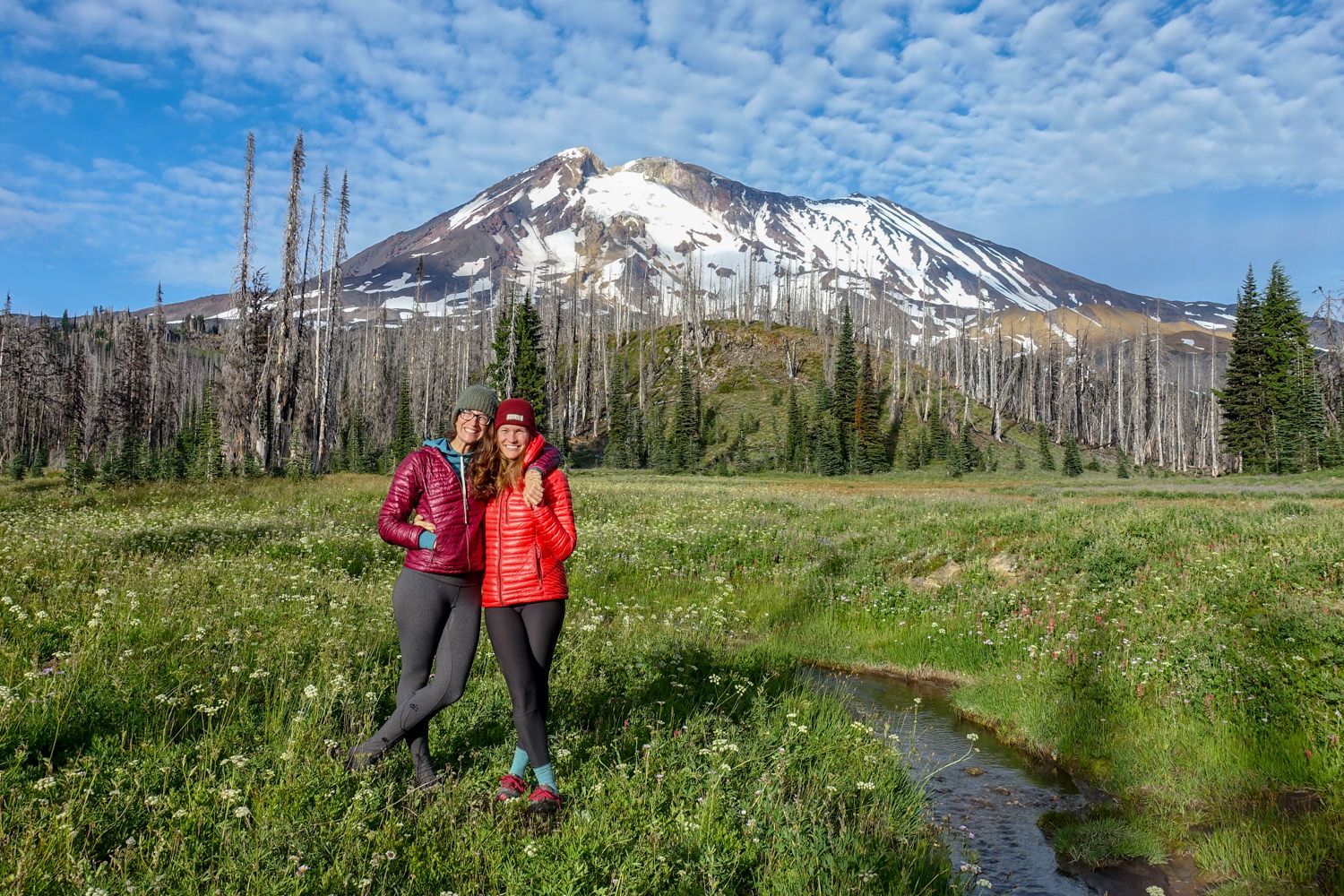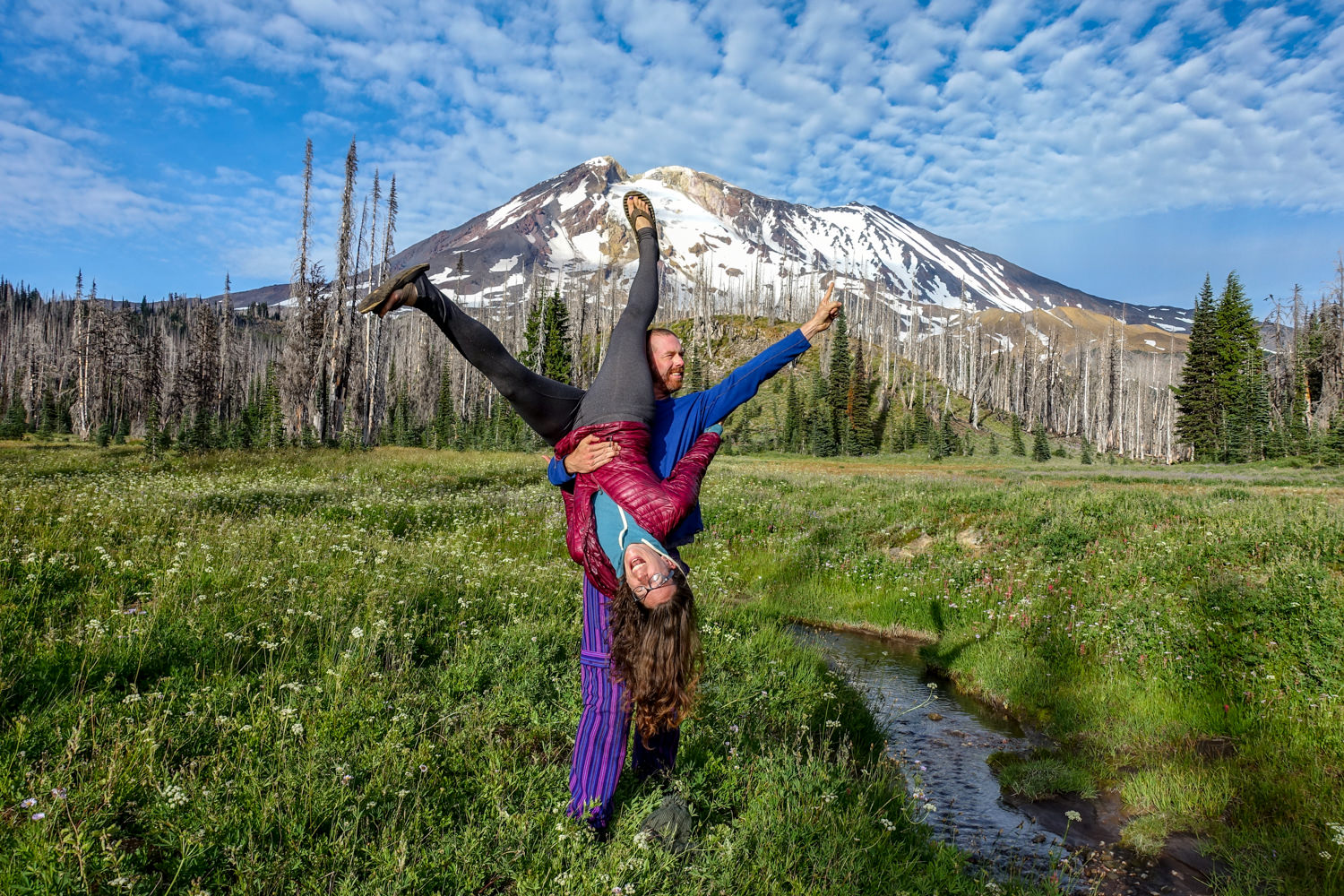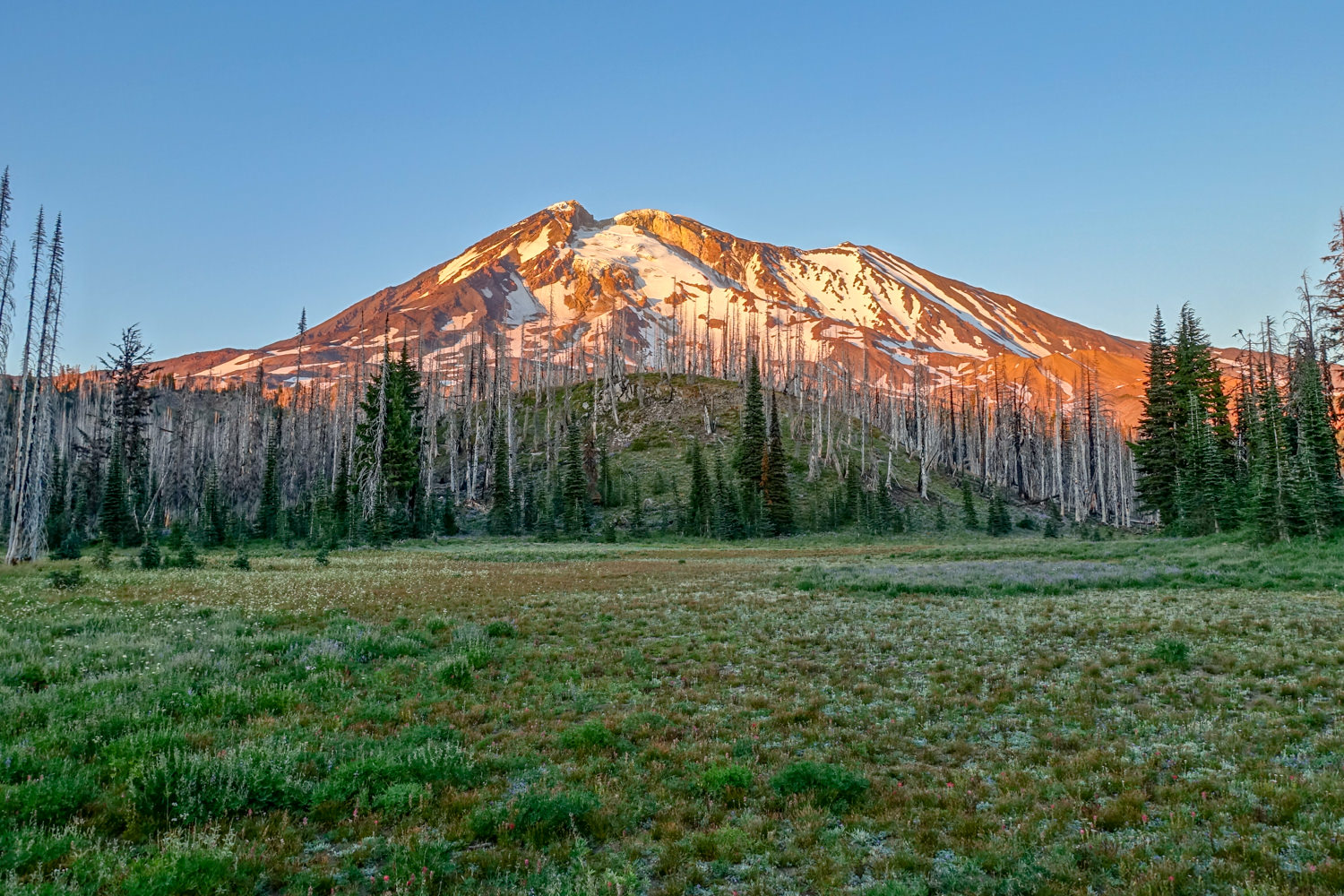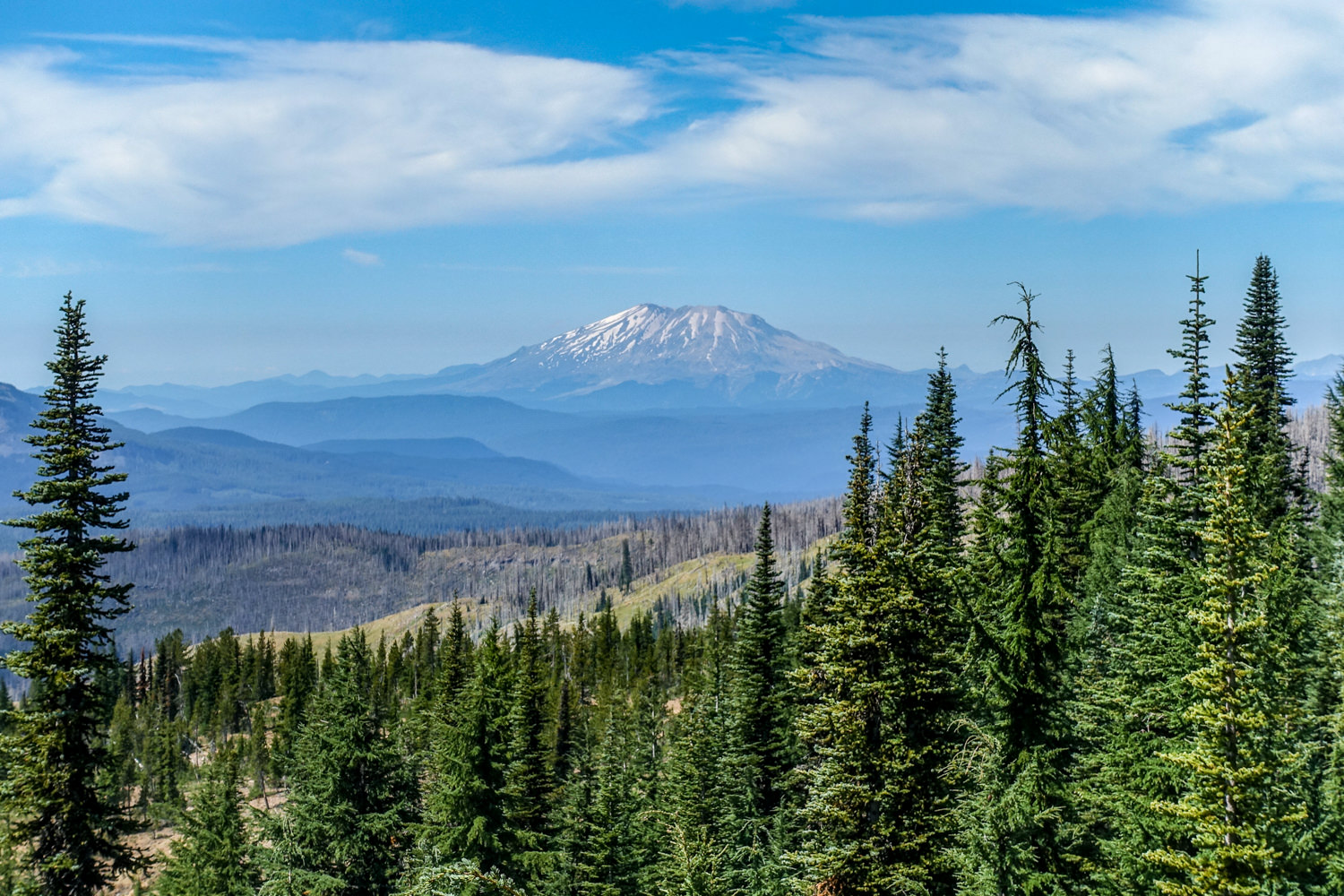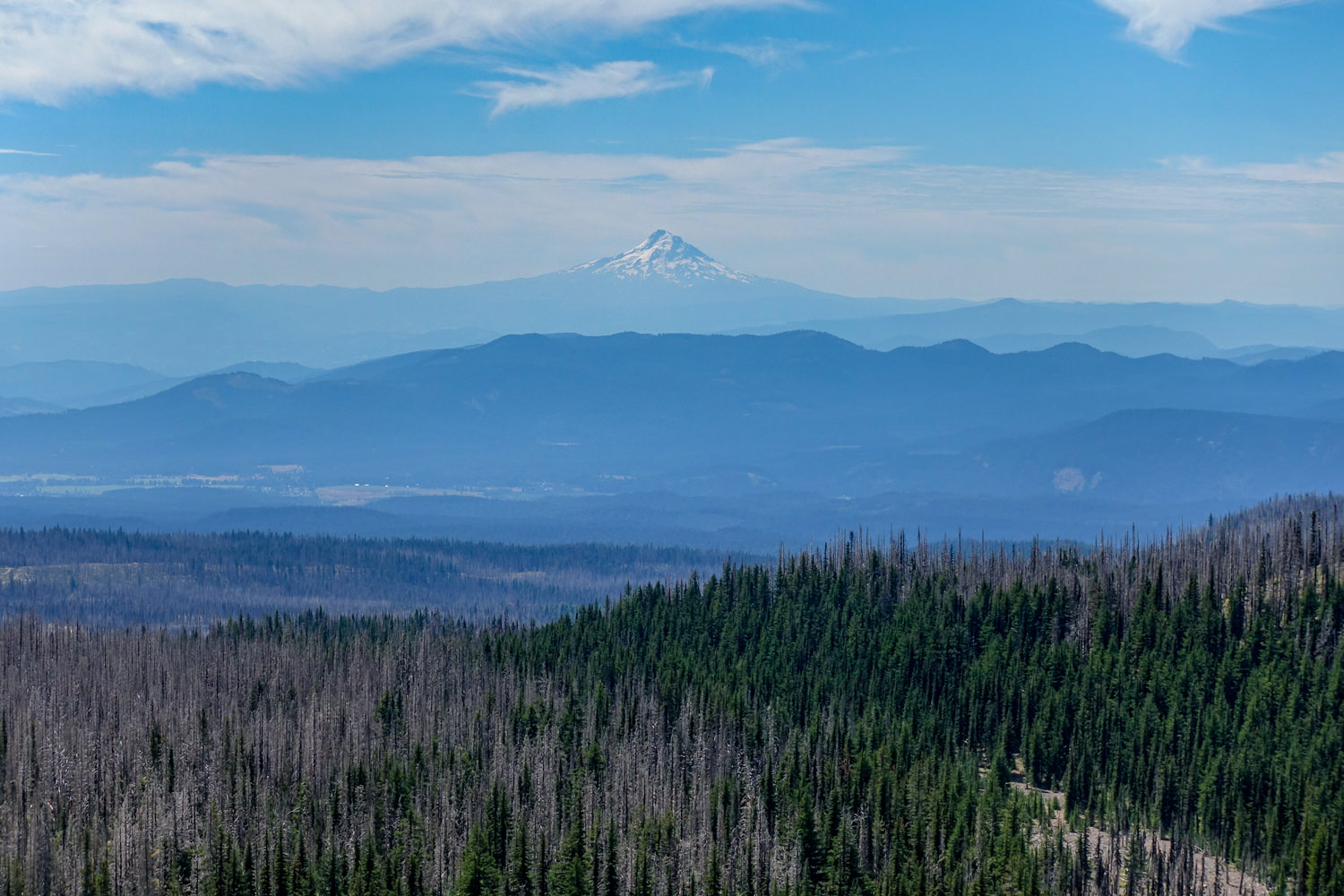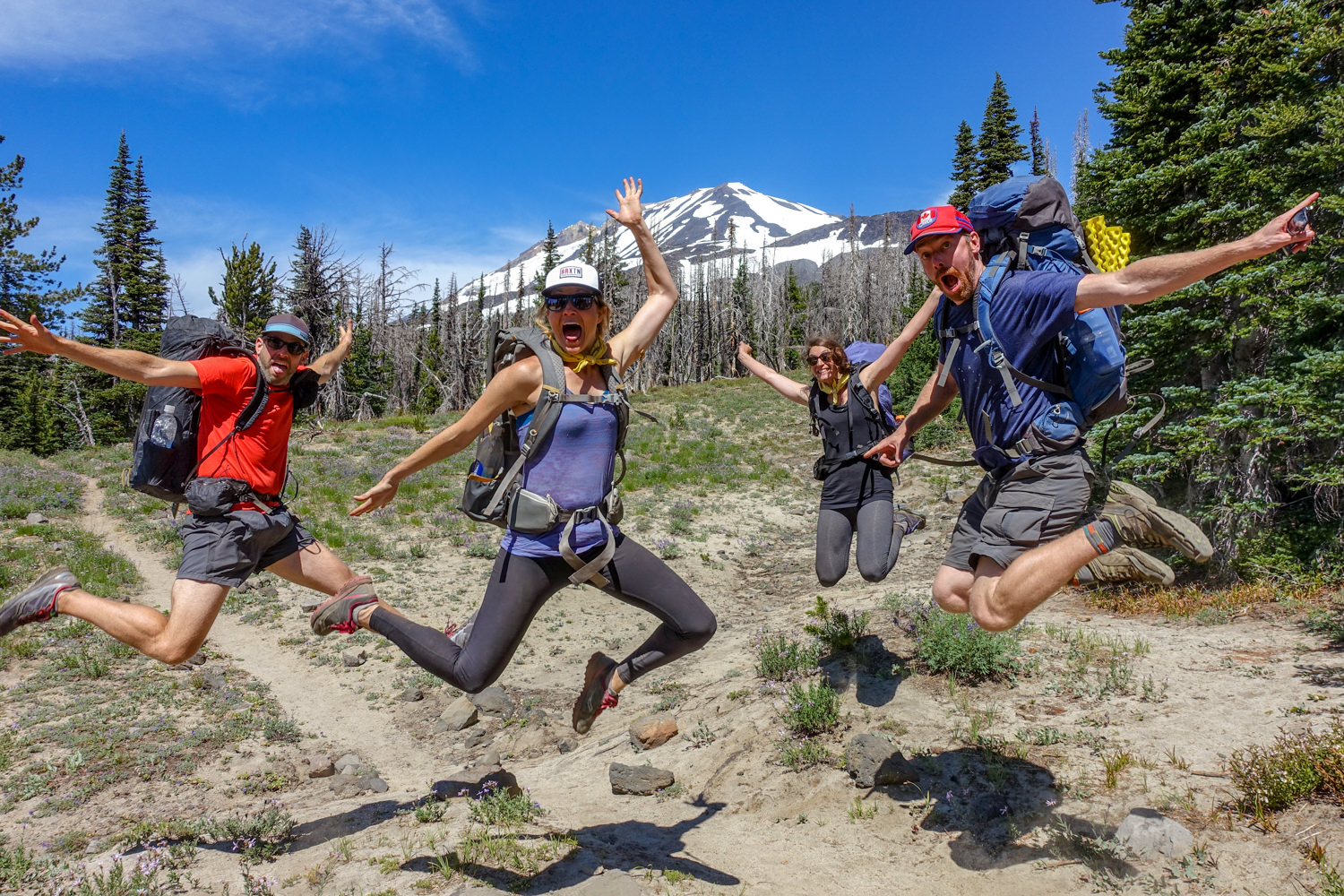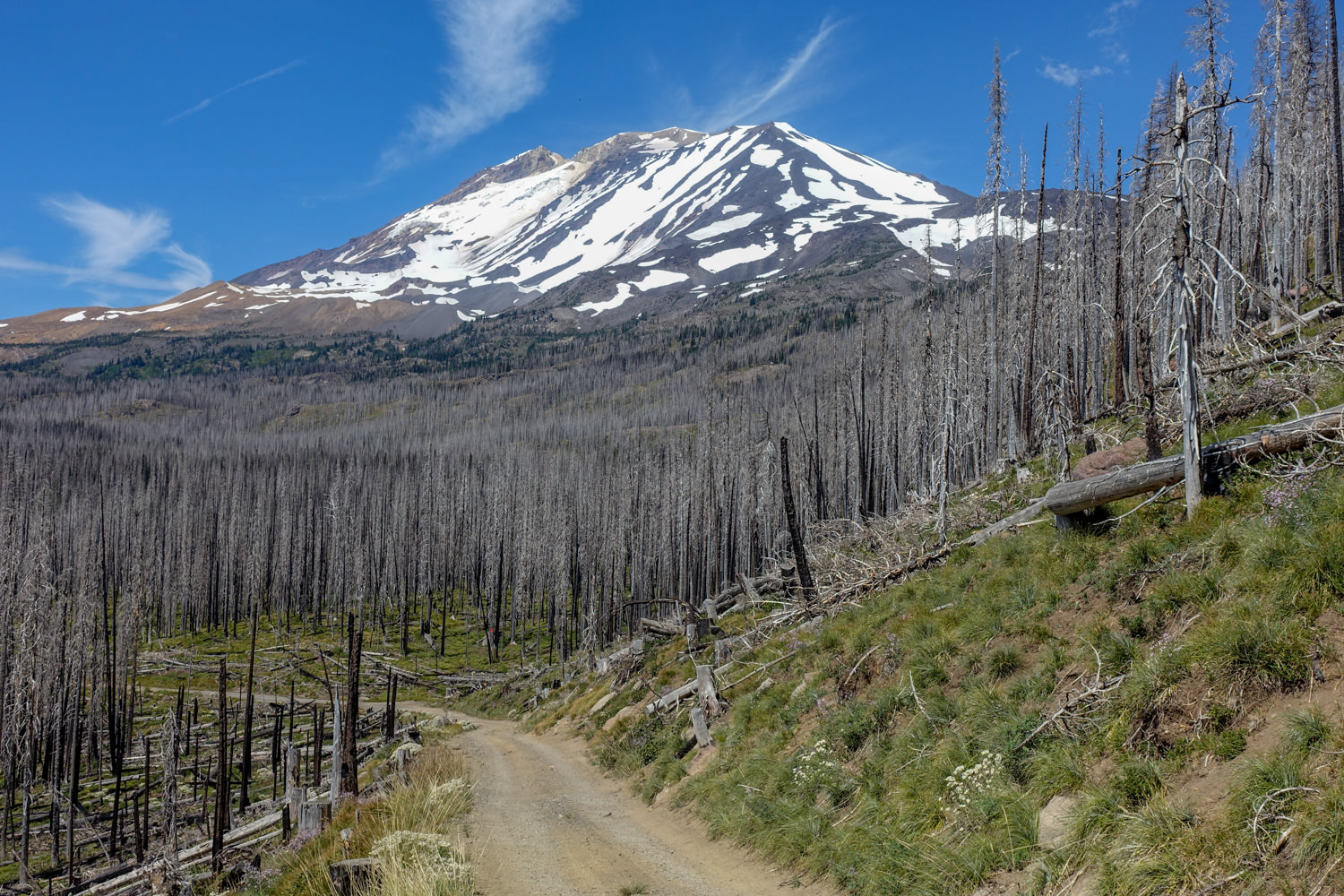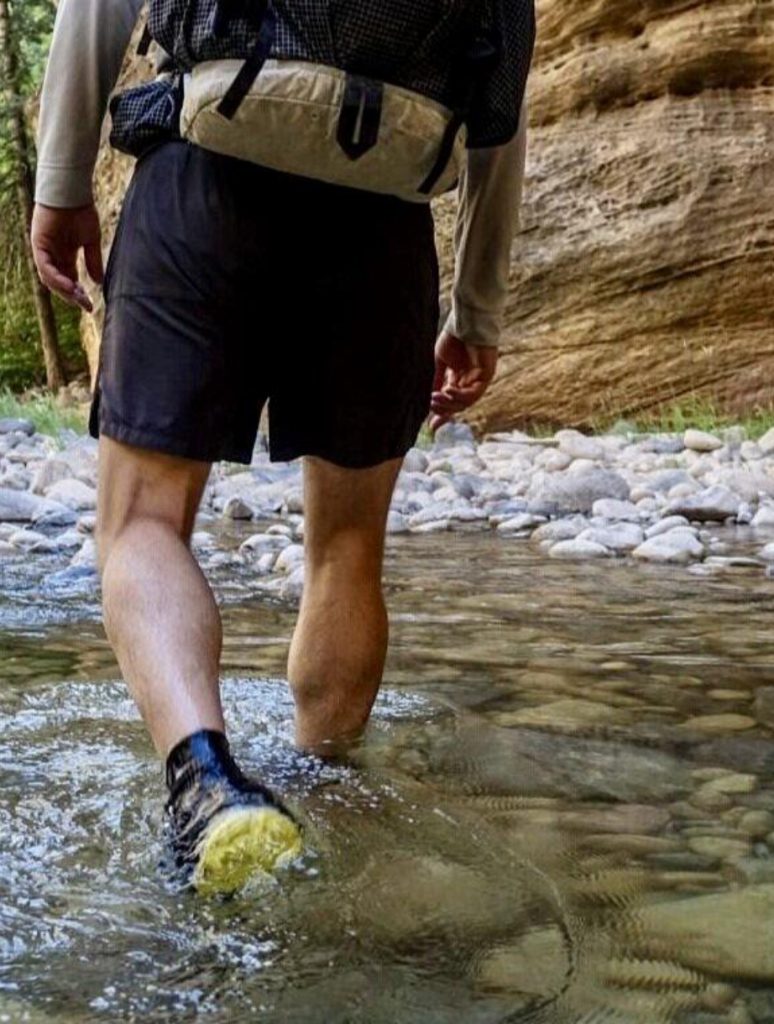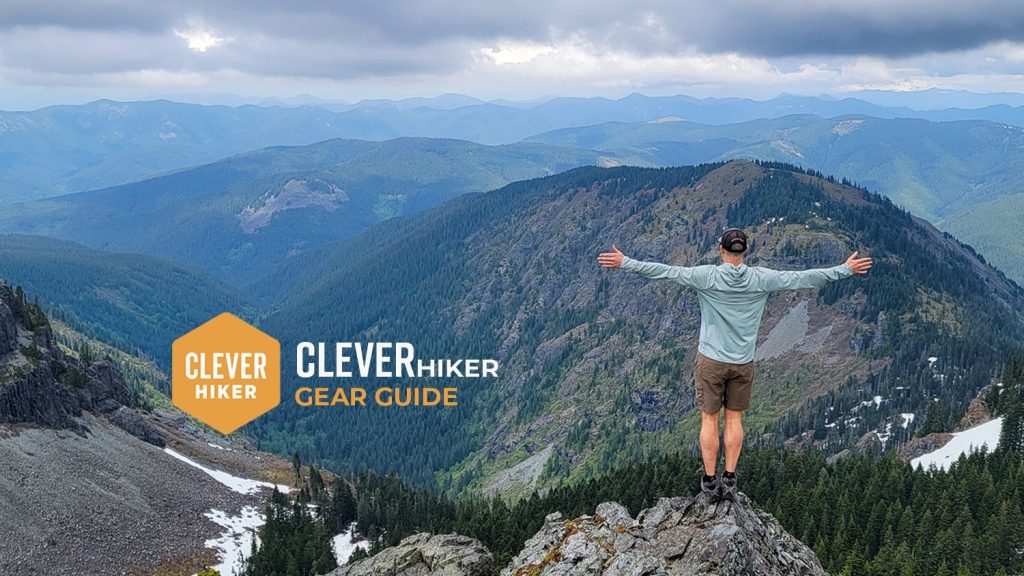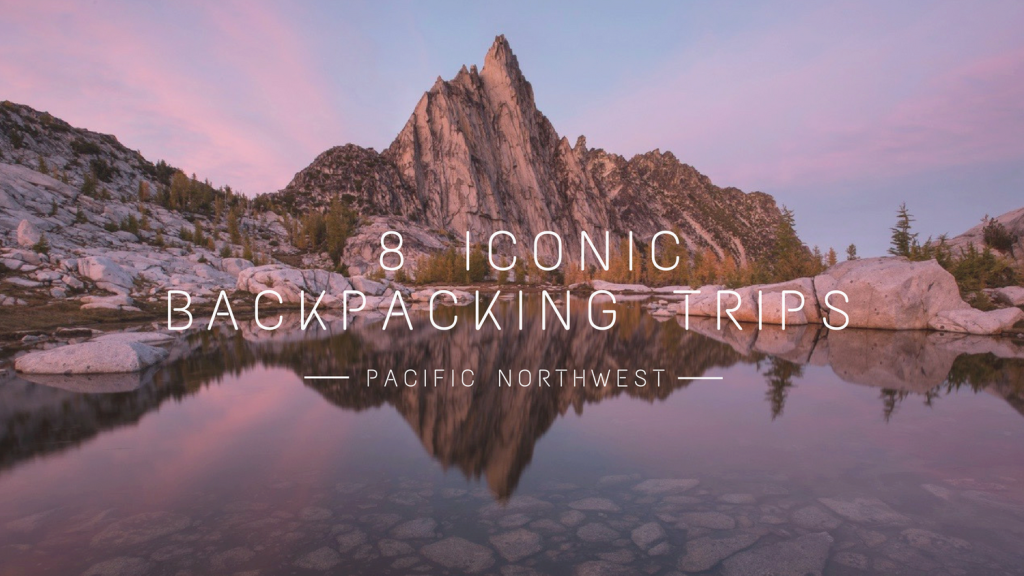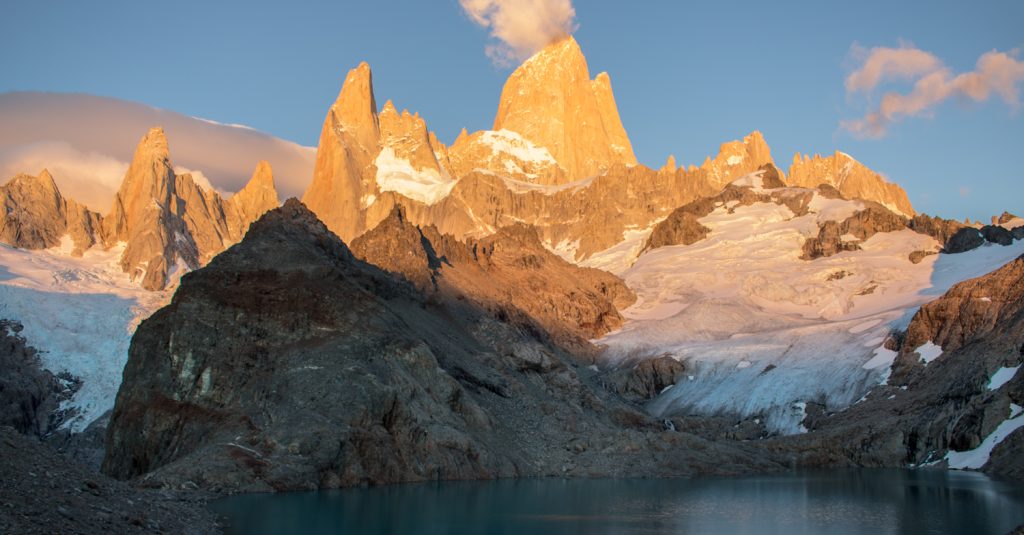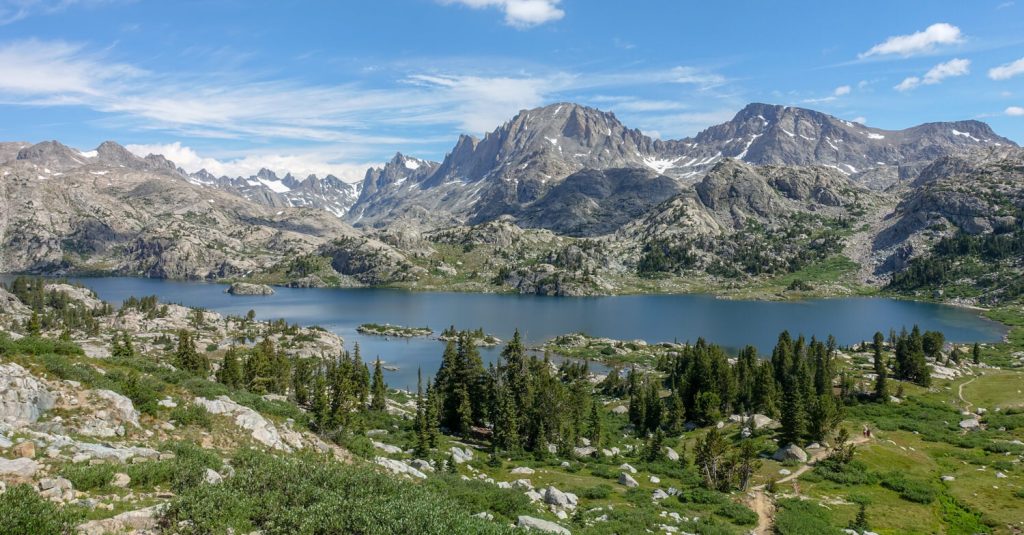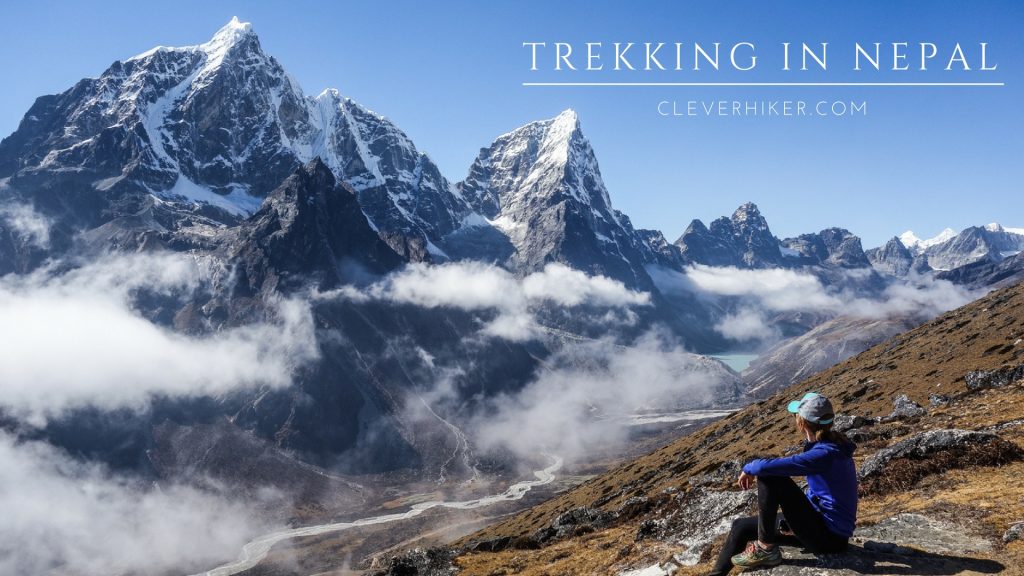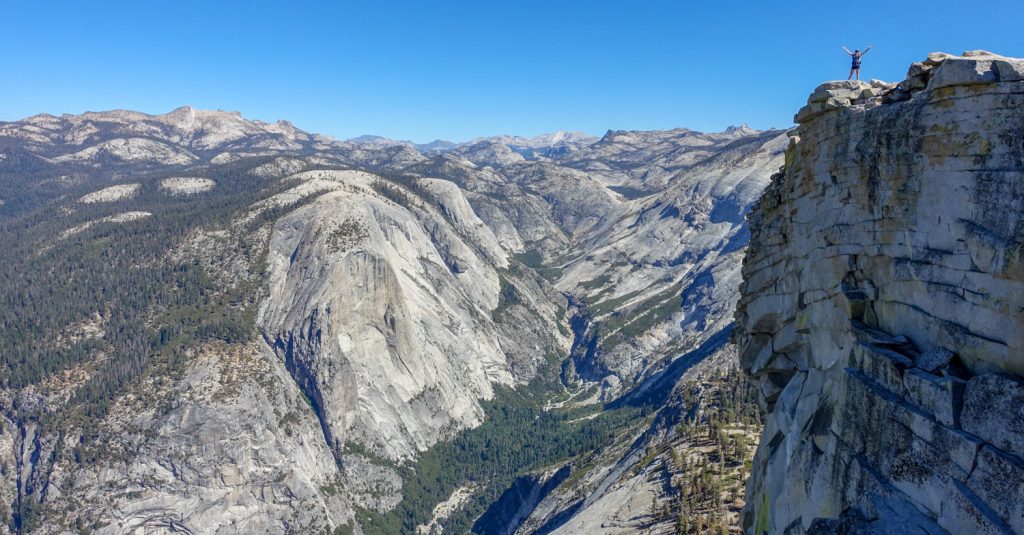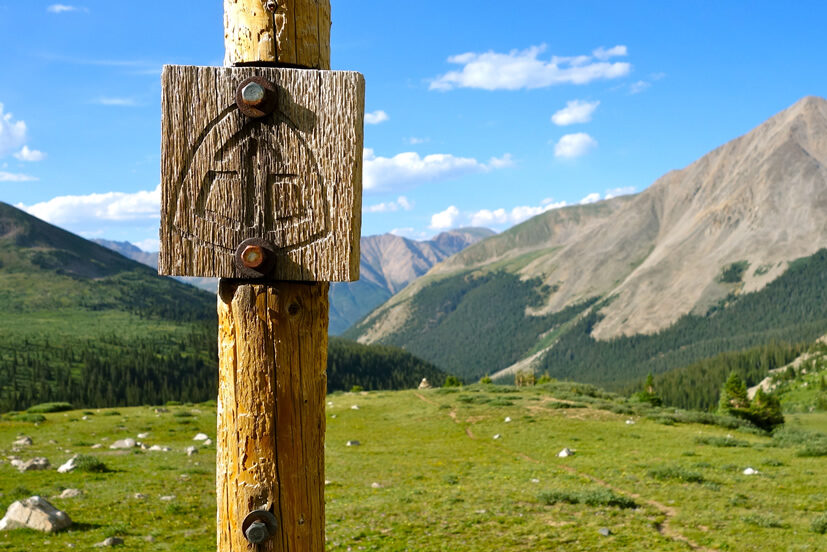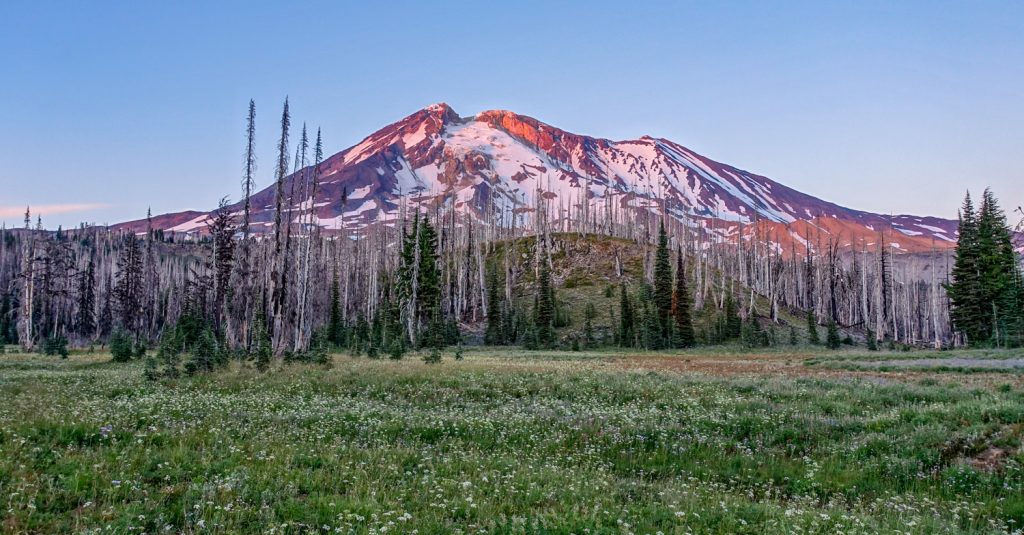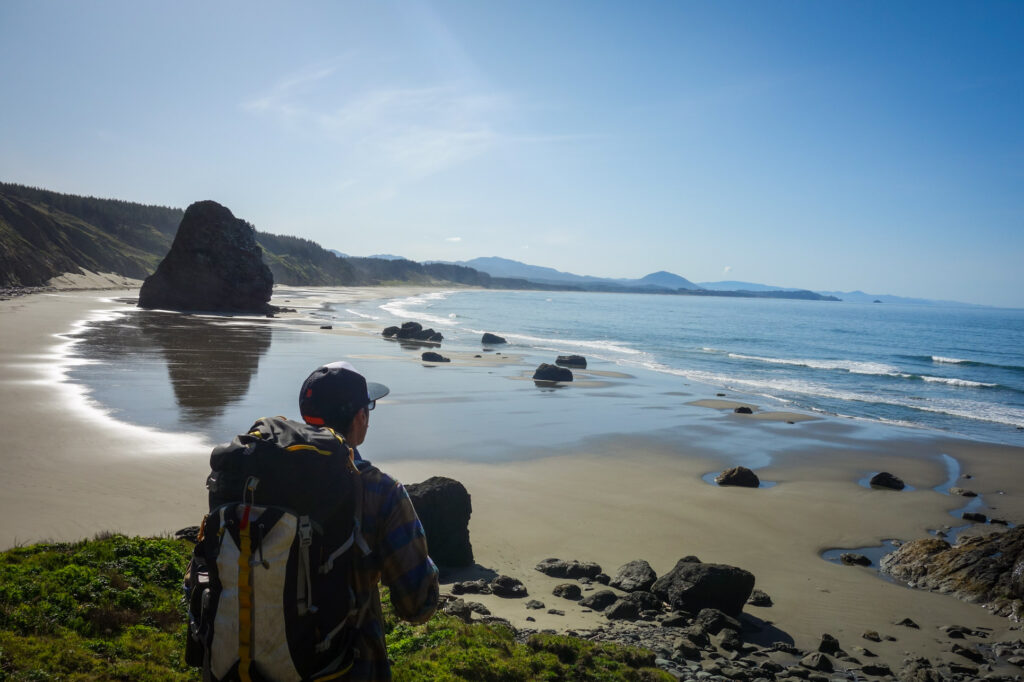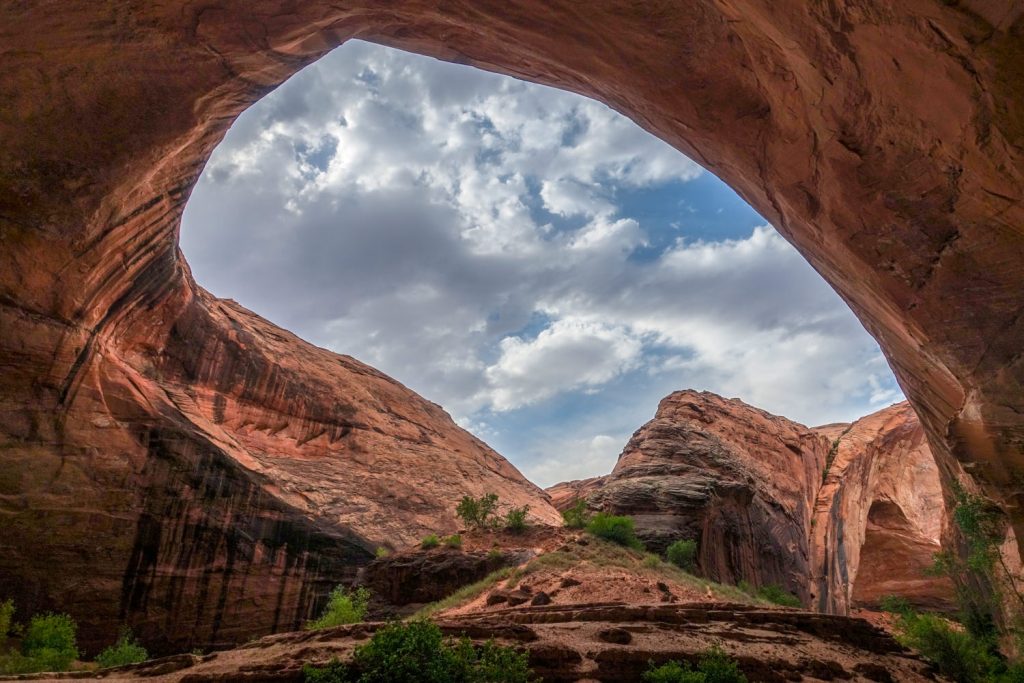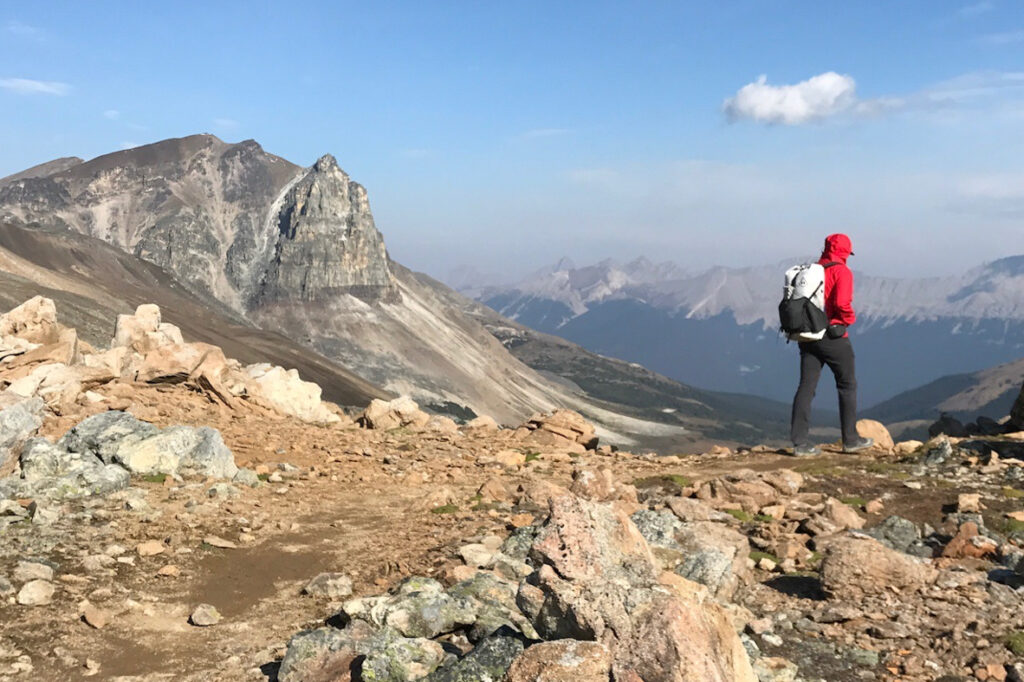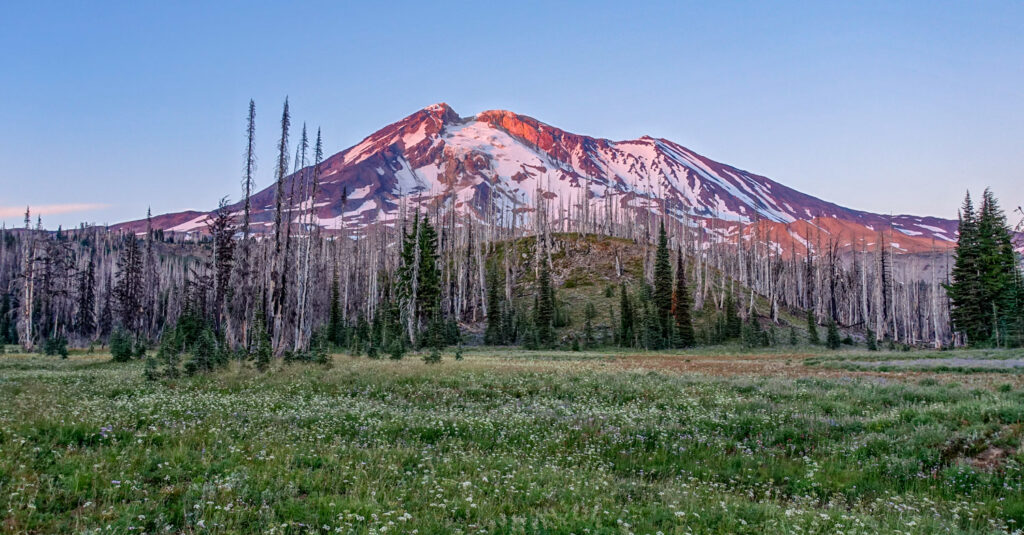
With spectacular fields of wildflowers well into summer, incredible mountain scenery, and cozy campsites nestled in beautiful meadows, the Mount Adams Wilderness should definitely be on backpackers’ radars. At 12,281 feet, Mount Adams is the second-tallest peak in Washington. Located in South Central Washington – far from large cities – this mountain isn’t crowded by PNW hiking standards.
Unlike some neighboring peaks, Mount Adams does not have a completed trail around the mountain. Instead, you have the option of combining three trails – Round the Mountain Trail, the Pacific Crest Trail, and the Highline Trail – to hike 3/4 of the way around the mountain on beautiful, straightforward, and safe trails.
There is an extremely difficult option to complete a full loop around the mountain by traversing the strenuous/dangerous 4.5-mile off-trail section on the east side referred to as “The Gap.” But we don’t recommend that option. The Gap is an experts-only, off-trail route that requires excellent navigation skills, steep glacier traverses, unstable scree field scrambles with large shifting boulders, and treacherous river crossings. Be brutally honest about your skills and experience before attempting The Gap. It would be extremely intense and dangerous for the inexperienced or the unprepared.
For the sake of this guide, we’ll outline backpacking itineraries in the Mount Adams area that vary in length and difficulty – from quick one-night trips to the full circumnavigation of Mount Adams (again, only recommended for true experts).
Quick Facts
Distance: Varies, depending on itinerary.
Days Needed: 2-5 days, depending on itinerary
Elevation Gain/Loss: 7,300 feet (2,225 meters), depending on itinerary
Best Travel Time: Late July – September
Permits: Required, more info below
Difficulty: Moderate – Difficult, more info below
Highlights
- Good portion of hike above tree line
- Sweeping mountain views in all directions
- Beautiful wildflowers throughout summer
- Relative solitude for PNW hikes
- Bird Creek Meadows and Avalanche Valley areas
Lowlights
- Can require long car shuttles
- Can be windy along ridges above tree line
- Multiple permits required in some areas
- Susceptible to quickly changing weather
- Campfires not permitted above 6,000 feet (almost all camping locations)
- Some unbridged stream crossings
- Dusty trails
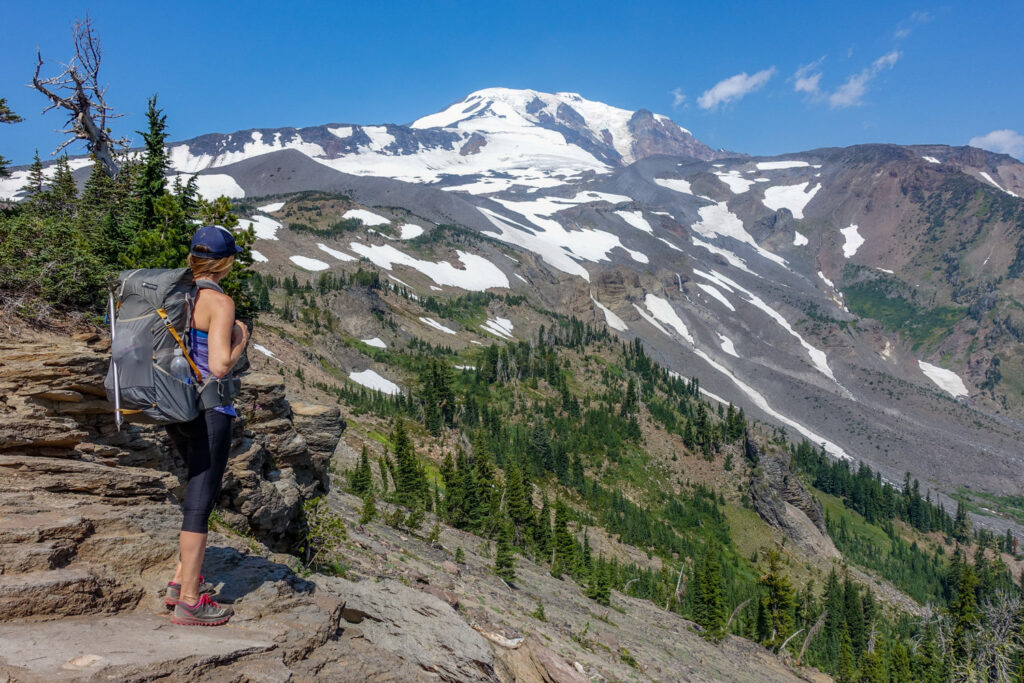
Best Time to Travel
In general, July through September is the best time to hike around Mount Adams. Snowpack is a key factor for trip planning in this area as snow can linger into late July and perennial snowfields exist in some areas. Rain and snow can fall at any time of year, and freezing temperatures are possible, even in summer months. The bugs can be bad right after the seasonal melt – sometimes as late as mid-August. July and August have the lowest average rainfall and average temp highs of 82 degree for both months. In September and October the temps drop about 10 degrees each month, and rain increase progressively by one to two inches.
As always, be prepared and diligent in monitoring current conditions before your hike. Weather can change quickly in this region. Before heading out, check the Mount Adams weather report for up-to-date conditions.
Difficulty
If you’re completing the portion of this trail that does not include “The Gap”, we rate this hike as moderate. Regardless of the beginning trailhead, reaching the Round the Mountain Trail will require a gradual steady climb. After that, most of the trail will pleasantly undulate up and down across many creeks, a lava field and – if you continue – a major mudflow and rock fall.
If you are extremely experienced and up for the challenge, the full circumnavigation (crossing The Gap) is rated as highly strenuous and very difficult. Besides requiring a high level of fitness, off-trail experience and expert navigation skills, you’ll also need to bring an ice axe and traction devices to complete the full loop. Like we mentioned above, we would not recommend this route to about 99% of the hikers reading this guide.
As always, difficulty ratings depend on your experience, physical fitness, pack weight, and weather conditions. Plan accordingly, train properly, know your limitations, brush up on your skills, and dial in your gear. Doing so will make for a safe and enjoyable adventure.
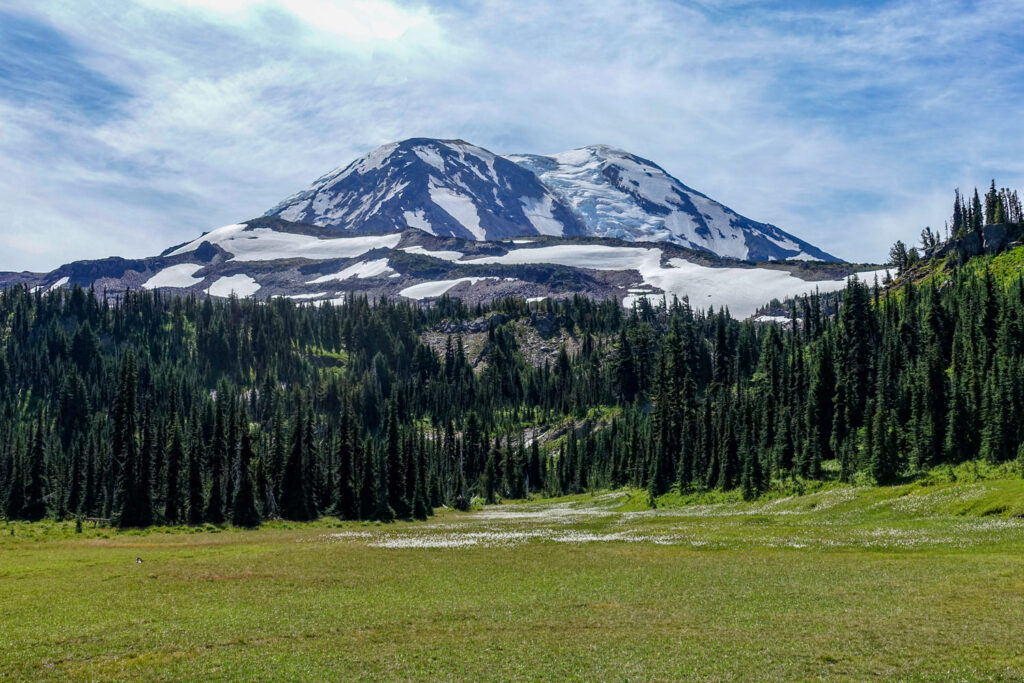
Permits
- Wilderness Permit Required – Permits are free and self-issued at trailheads.
- A separate permit is required within the Yakama Indian Reservation. For information, please see this information on the MIrror Lake Tract D. Overnight stay permits are available. Camping is allowed only in the designated sites.
More than half of Mount Adams lies within the Mount Adams Wilderness of the Gifford Pinchot National Forest. The remaining area, roughly from Avalanche Valley to Bird Creek Meadows, is within the Mount Adams Recreation Area of the Yakama Nation.
You’ll need a NW Forest Pass to park at trailheads, but you must also obtain a self-issued wilderness permit at the trailheads. Importantly, the NW Forest pass does NOT grant backpackers permission to cross the Yakama Nation land on the east side.
The Yakama Reservation (referred to as Track D) is open to the general public between July 18 and September 8 (2025 dates). You must pay access fees by cash or check (see 2025 rates) using the fee box at Mirror Lake. Further, they do allow camping at Sunrise Camp and in Avalanche Valley in the old existing campsites only.
The overall consensus is that as long as you start at the official trailheads and follow the high route, you don’t need a permit to cross The Gap. If in doubt, check with the Trout Lake Ranger Station for updates.
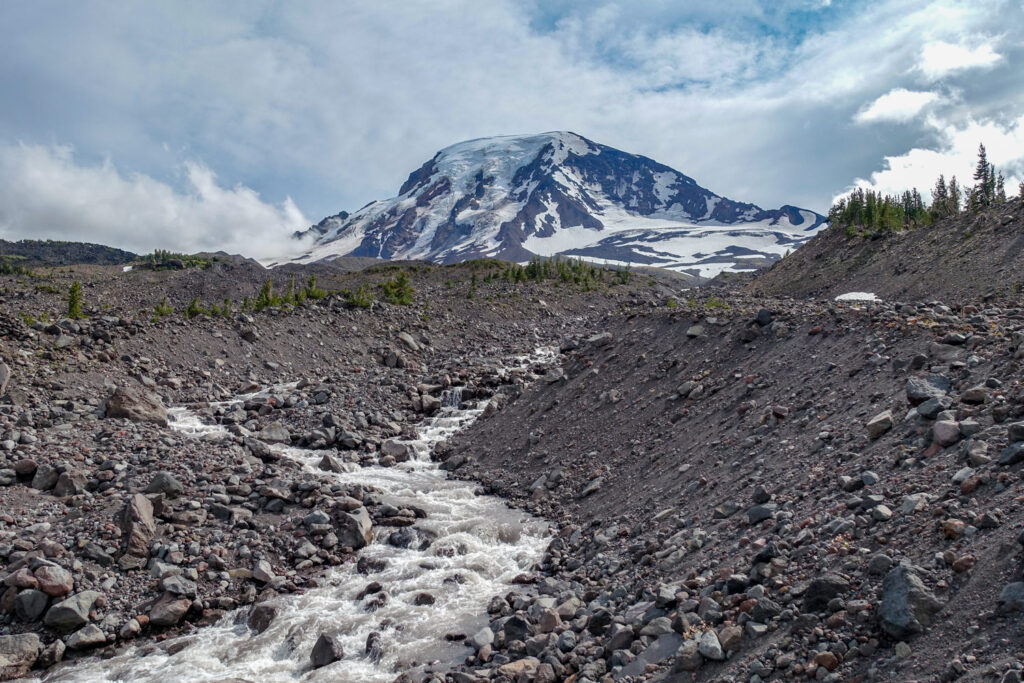
Getting to the trailheads
For this guide, we start at Cold Springs Trailhead and end at the Muddy Meadows Trailhead. If you don’t have time to complete the entire trail, there are several other trailheads which allow you to access portions of the trail. It’s important to note that trails accessing the “Round the Mountain Trail” generally gain between 1,500 feet and 3,000 feet.
Because most people don’t complete the full loop of Mt. Adams, transportation logistics can be a bit complicated. There are no official shuttle services offered in this area, so your options are to do an out-and-back hike or arrange your own car shuttle. The drive between the two trailheads is 38 miles and takes about 2 hours. Driving directions to both trailheads can be found below.
- Beginning trailhead: Cold Springs
- Exit trailhead: Muddy Meadows
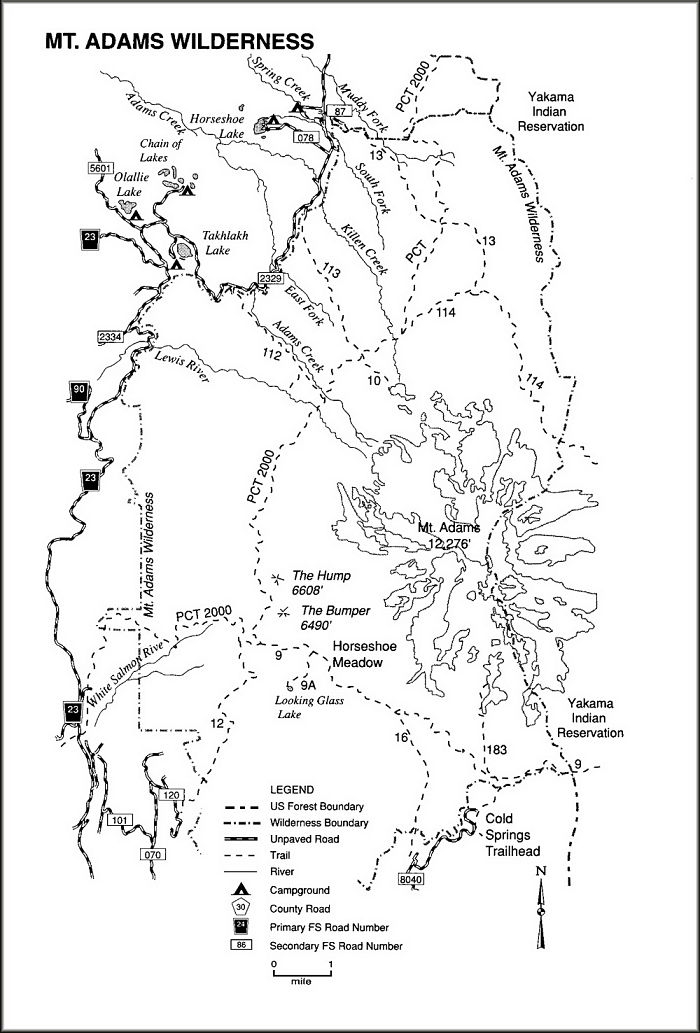
Campsites
Below is the listed hiking mileage from the Cold Springs Trailhead to each campsite. Plan your route accordingly.
- Lookingglass Lake – 7.2 miles (requires hiking one mile south of Round the Mountain Trail)
- Horseshoe Meadows – 7.3 miles
- Sheep Lake – 10.5 miles
- Divide Camp 14.2 miles
- Killen Creek– 15.6 miles
- High Camp – 15.6 miles
- Foggy Flats – 18.6 miles
- Avalanche Valley – 24.7 miles (existing campsites only, just west of Goat Butte)
If you are planning on hiking all the way to Avalanche Valley rather than continuing north along the trail to the Muddy Meadows Trailhead, it’s very important to follow the guidelines set forth by the Mount Adams Ranger District and the Yakama Tribe. The “trail” in this section is a very faint and pretty much nonexistent, so GPS and off-trail navigation skills are highly recommended. In Avalanche Valley head more or less north across Rusk Creek to the camp near the spring on the old FS Trail. Crossing this creek can be difficult depending on time of day and season. The tribe does not permit dispersed camping but allows camping near the spring in the old camping area.
Mount Adams Slide Show
Possible Itineraries
The Round the Mountain Trail maintains an elevation between 5,900 feet and 6,300 ft. Most people complete the Round the Mountain Trail (minus the gap) in four days, but faster hikers can complete it in three. Those wishing to have slower days, explore the alpine area more thoroughly, or complete the full loop including the gap, may want to plan for a five-day trip.
ROAD CLOSURE NOTE: Roads in this area may be subject to seasonal closures due to snow, fire, or other hazards. For the most up-to-date information, you can contact the Mt. Adams Ranger Station (Phone: 509-395-3402), which oversees that area of the Gifford Pinchot National Forest.
Three Day Itinerary
Starting trailhead: Cold Springs
Ending trailhead: Muddy Meadows
- Day 1 –Hike north from the trailhead to Round the Mountain Trail, turn left at junction and hike on to Lookingglass Lake campsite (.9 miles south of the trail to the lake).
- Day 2 – Hike from Lookingglass Lake to Round the Mountain Trail to Divide Camp or go another 2.5 miles to High Camp
- Day 3 – Hike from High Camp to the Highline Trail to the Muddy Meadows Trailhead
Total mileage: 20.8 or 21.9 miles (High Camp option)
Four Day Itinerary
Starting trailhead: Cold Springs
Ending trailhead: Muddy Meadows
- Day 1 – Hike north from the trailhead to Round the Mountain Trail, turn left at junction and hike on to Lookingglass Lake campsite (.9 miles south of the trail to the lake)
- Day 2 – Hike from Lookingglass Lake to Round the Mountain Trail to Divide Camp or go another 2.5 miles to High Camp
- Day 3 – Hike from High Camp to the Highline Trail to Avalanche Valley
- Day 4 – From Avalanche Valley to Muddy Meadows Trailhead
Total mileage: 39 miles or 40.1 miles (High Camp Option)
Five Day Itinerary
Warning: Traversing “the gap” (more info below) is only recommended for highly experienced backpacking experts with excellent off-trail navigation, glacier travel, and river fording skills. Because this route is a true loop, you can travel in a clockwise or counter-clockwise direction. We suggest heading counter clockwise so that if conditions do not allow you to cross “The Gap”, you can easily retrace your steps back to the Round the Mountain Trail.
Starting trailhead: Cold Springs
Ending trailhead: Cold Springs
- Day 1 – “The Gap” Day. Hike north from the trail to meet up with Round the Mountain Trail. Turn right and head towards Bird Meadow. Follow signs towards Hellroaring Viewpoint, where the trail starts fading out. Continue off trail towards Sunrise Camp (multiple unstable scree fields and glacier travel required). There’ll be rock shelters signaling you’re at Sunrise Camp. Continue your hike off-trail over Klickitat Glacier and eventually across Big Muddy River (Be very cautious and assess the situation before crossing, as this river can be very dangerous, or deadly). After crossing, you’ll have to climb up and over a very unstable scree field on your way to Avalanche Valley. Be prepared to cross a series of swift streams along this route. This day will be long, arduous, and possibly dangerous. We can’t emphasize enough how this is for highly experienced backpackers only.
- Day 2 – Hike from Avalanche Valley to Foggy Flats. There may be some difficult river crossings, depending on time of year. Always use caution.
- Day 3 – Hike from Foggy Flats to Divide Camp or High Camp.
- Day 4 – Hike from Divide Camp/Foggy Flats to Horseshoe Meadow or Lookingglass Lake
- Day 5 – Hike from Horseshoe Meadow/Lookingglass Lake back to Cold Springs Trailhead.
Note: Campsites at Sunrise Camp are very exposed and can be incredibly windy, so always assess the conditions. If you’re crossing “The Gap”, we recommend doing it in one day.
Total mileage: 35 miles
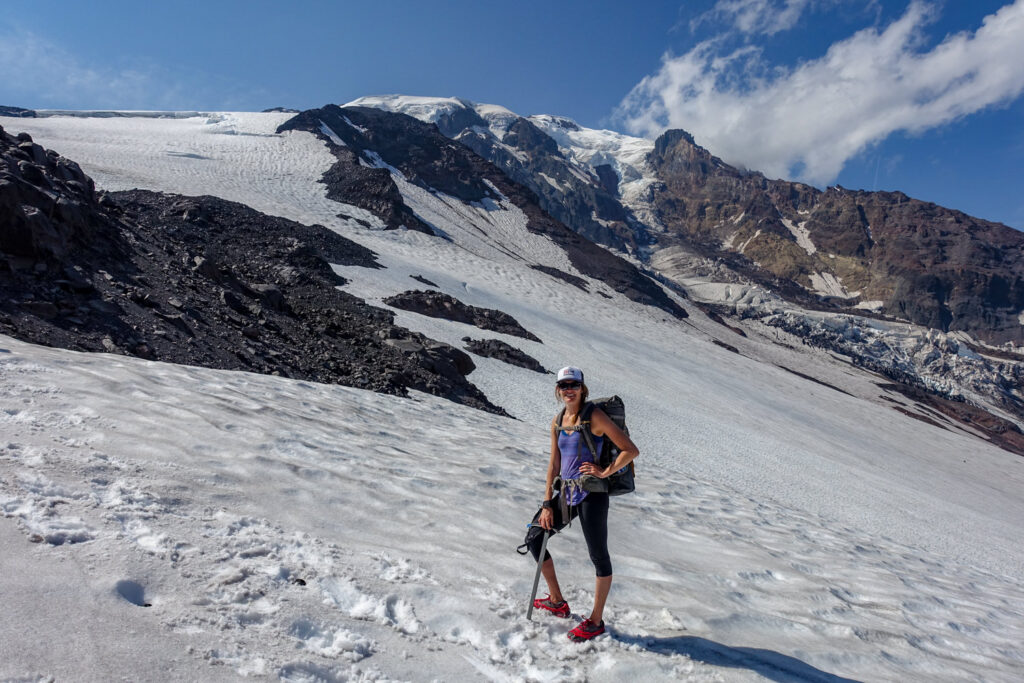
“The Gap” Section
As tempting as it is to complete the full loop around Mount Adams, we only recommend traversing the eastern off-trail section called “The Gap” if you are highly experienced and have exceptional confidence in your off-trail navigation, glacier travel, and river fording skills.
This section may seem short, but do not underestimate the difficulty and time it will require to cross. You will also need to bring an ice axe and traction devices to safely navigate the glaciers. The route will involve many obstacles that can be dangerous, and if ill-prepared, life-threatening. Trekkers must negotiate treacherous creek crossings, 1,000-foot deep canyons and valleys, traversing up and over steep and unstable scree fields, and a traverse across the Klickitat Glacier.
A highly challenging river crossing through the Big Muddy may require wading. It is a fast and dangerous river, depending on the time of year. If it’s early season, you may be able to traverse the glacier above the Big Muddy, but we recommend seriously considering conditions before attempting to cross.
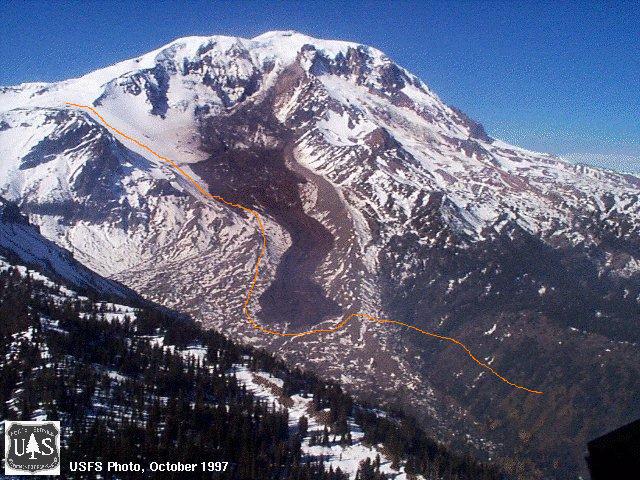
Maps & Guidebooks
Below is a list of guidebooks, maps, and GPS tools we found helpful in planning our trip in the Mount Adams Wilderness area.
- Backpacking Washington – This route is covered in depth in the Backpacking Washington book, minus “The Gap”. We use this excellent resource to plan many of our backpacking trips throughout Washington.
- Trekking Washington by Mike Woodmansee – This knowledgeable, easy-to-read book includes excellent details about the Round-the-Mountain Trail (particular water availability, trail obstacles and campsites) and full-color photographs. He provides lengthy descriptions of trees, flowers and animals interspersed with trail descriptions.
- National Geographic Trails Illustrated Map Mount St. Helens, Mount Adams – This map provides an overview of information about the campsites, mileage, and elevation of Mount Adams and the Round-the-Mountain Trail. It offers an overview of many other hikes in this part of South Central Washington.
- Gaia GPS – We use Gaia GPS on all our backpacking trips to assist with planning our route and on-trail navigation.
- Green Trails Map 367s Mount Adams – We love Green Trails Maps for their great attention to detail, and this map is no exception.
- USFS Gifford Pinchot, Mount Adams – This is a good place to do further research on trails and regulations for backpacking around Mount Adams.
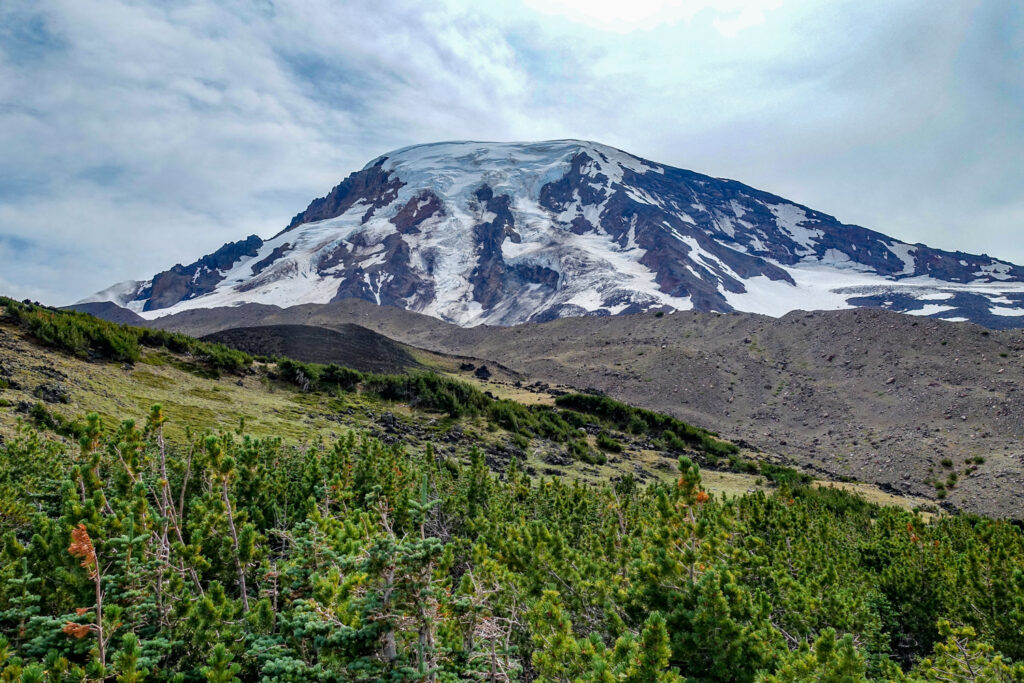
Regulations
According to USFS Gifford Pinchot, the following regulations are in place for Mount Adams. We are not an official source on current regulations, so please consult the official website prior to your trip for frequent road closures.
- Entering the Wildernesses without a permit is prohibited.
- No campfires above the Around the Mountain Trail (details at the website).
- Shortcutting a trail switchback is prohibited.
- Using or possessing any type of wagon, cart, or other wheeled vehicle is prohibited.
- Camping within 100 feet slope distance from the shoreline of any lake and/or the Pacific Crest National Scenic Trail is prohibited.
- Caching or storing equipment, personal property, or supplies is prohibited.
- Being in an area posted as being closed for restoration, wilderness restoration, or rehabilitation is prohibited.
- Dogs on leash are allowed but not recommended, especially for traveling through “The Gap.”
- No Drones in the Wilderness Area.
Water
Water is plentiful along this trail and easily accessible from small streams. Carry enough water to get from one source to the next and use a lightweight water purifier. Every campsite along this trail has nearby running water. We carried the SteriPEN Ultra and were happy with its performance. Two other good lightweight options are the Sawyer Squeeze and Aquamira Drops. Check out our best water filters list for more excellent options.
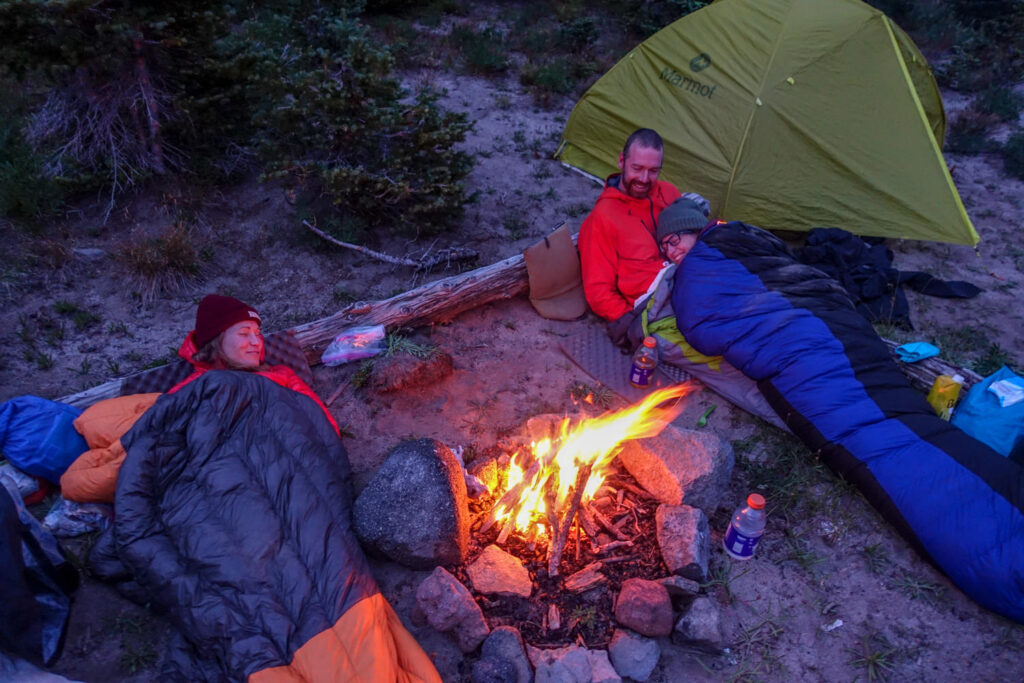
Bears & Food Storage
Bears are not a problem in this area, so there are no food storage requirements. That said, you should always protect your food against rodents and small critters. We recommend packaging all your food and scented products in a food storage container such as an Ursack.
Bugs
Mosquitoes are present along this route, especially early in the season and near bogs and water sources. Hiking later in the season is often bug-free. Use a combination of permethrin on your clothing and bring a small bottle of DEET for exposed skin to provide full protection.
More Photos
Backpacking Gear
We prefer lightweight backpacking because it’s more comfortable and it allows us to cover more ground with less effort. For recommendations on our favorite lightweight backpacking equipment, check out the CleverHiker Gear Guide and Top Picks page.
Gear List
Make sure to check out our Ultimate Backpacking Checklist so you don’t forget something important.
Below you’ll find our current favorite backpacking gear. If you want to see additional options, our curated gear guides are the result of many years of extensive research and hands-on testing by our team of outdoor experts.
BACKPACK
- Best Backpacking Pack Overall: Gregory Paragon 58 – Men’s / Gregory Maven 58 – Women’s
- Best Ultralight Backpacking Backpack: Hyperlite Mountain Gear Unbound 40
- More: Check out our best backpacking backpacks guide for ultralight and trekking options
TENT
- Best Backpacking Tent Overall: Big Agnes Copper Spur HV UL2
- Best Ultralight Tent: Zpacks Duplex
- Best Budget Tent: REI Half Dome 2
- Best Tent Stakes Overall: All One Tech Aluminum Stakes
- More: Check out our best backpacking tents guide for more options
SLEEPING BAG/QUILT
- Best Sleeping Bag Overall: Men’s Feathered Friends Swallow YF 20 / Women’s Feathered Friends Egret YF 20
- Best Quilt Overall: Enlightened Equipment Revelation 20
- More: Check out our best backpacking sleeping bags guide and best backpacking quilts guide for more options
SLEEPING PAD
- Best Sleeping Pad Overall: NEMO Tensor All-Season
- Best Foam Sleeping Pad: NEMO Switchback
- More: Check out our best backpacking sleeping pads guide for ultralight and trekking options
CAMP KITCHEN
- Best Backpacking Stove Overall: MSR PocketRocket 2
- Best Backpacking Cookware Overall: TOAKS Titanium 750ml
- Best Backpacking Coffee Overall: Starbucks VIA
- More: Check out our best backpacking stoves guide and best backpacking cookware guide for ultralight and large group options
WATER & FILTRATION
- Best Water Filter Overall: Sawyer Squeeze
- Best Hydration Bladder Overall: Gregory 3D Hydro
- Best Backpacking Water Bottles: Smartwater Bottles
- More: Check out our best backpacking water filters guide and best backpacking water bottles guide for ultralight and large group options
CLOTHING
- Best Hiking Pants Overall: Men’s Outdoor Research Ferrosi / Women’s The North Face Aphrodite 2.0
- Best Hiking Shorts Overall: Men’s Patagonia Quandary / Women’s Outdoor Research Ferrosi
- Best Women’s Hiking Leggings: Fjallraven Abisko Trekking Tights HD
- Best Rain Jacket Overall: Men’s Patagonia Torrentshell 3L / Women’s Patagonia Torrentshell 3L
- Best Rain Pants: Men’s Patagonia Torrentshell 3L / Women’s Patagonia Torrentshell 3L
- Best Down Jacket Overall: Men’s Patagonia Down Sweater Hoodie / Women’s Patagonia Down Sweater Hoodie
- Best Fleece Jacket Overall: Men’s Patagonia Better Sweater / Women’s Patagonia Better Sweater
- Best Sunshirt Overall: Men’s Outdoor Research Echo / Women’s Outdoor Research Echo
- Best Socks Overall: Men’s Darn Tough Light Hiker Micro Crew / Women’s Darn Tough Light Hiker Micro Crew
- Beste Ultralight Liner Glove: Patagonia Capilene Midweight Liner
- More: Check out our best backpacking apparel lists for more options
FOOTWEAR & TRACTION
- Best Hiking Shoes Overall: Men’s HOKA Speedgoat 6 / Women’s HOKA Speedgoat 6
- Best Hiking Boots Overall: Men’s Salomon X Ultra 5 GTX / Women’s Lowa Renegade Evo GTX
- Best Hiking Sandals Overall: Men’s Chaco Z/1 Classic / Women’s Chaco Z/1 Classic
- Best Camp Shoes Overall: Crocs Classic Clogs
- Best Traction Device for Hiking Overall: Kahtoola MICROspikes
- More: Check out our best backpacking footwear lists for more options
NAVIGATION
- Best GPS Watch Overall: Garmin Instinct 2 Solar
- Best Personal Locator Beacon (PLB): Garmin inReach Mini 2
- More: Check out our article How to Use Your Phone as a GPS Device for Backpacking & Hiking to learn more
FOOD
FIRST-AID & TOOLS
- Best First-Aid Kit Overall: Adventure Medical Kits Ultralight/Watertight .7
- Best Pocket Knife Overall: Kershaw Leek
- Best Multitool Overall: Leatherman Wave+
- Best Headlamp Overall: Black Diamond Spot 400-R
- Best Power Bank Overall: Nitcore NB 10000 Gen 3
- More: Check out our best first-aid kit guide, best pocket knife guide, best multitool guide, best backpacking headlamps guide, and best power banks guide for more options
MISCELLANEOUS
- Best Trekking Poles Overall: Black Diamond Pursuit
- Best Backpacking Chair Overall: REI Flexlite Air
- Best Backpacking Stuff Sack Overall: Hyperlite Mountain Gear Drawstring
- More: Check out our best trekking poles guide, best backpacking chairs guide, and best stuff sacks guide for more options


